







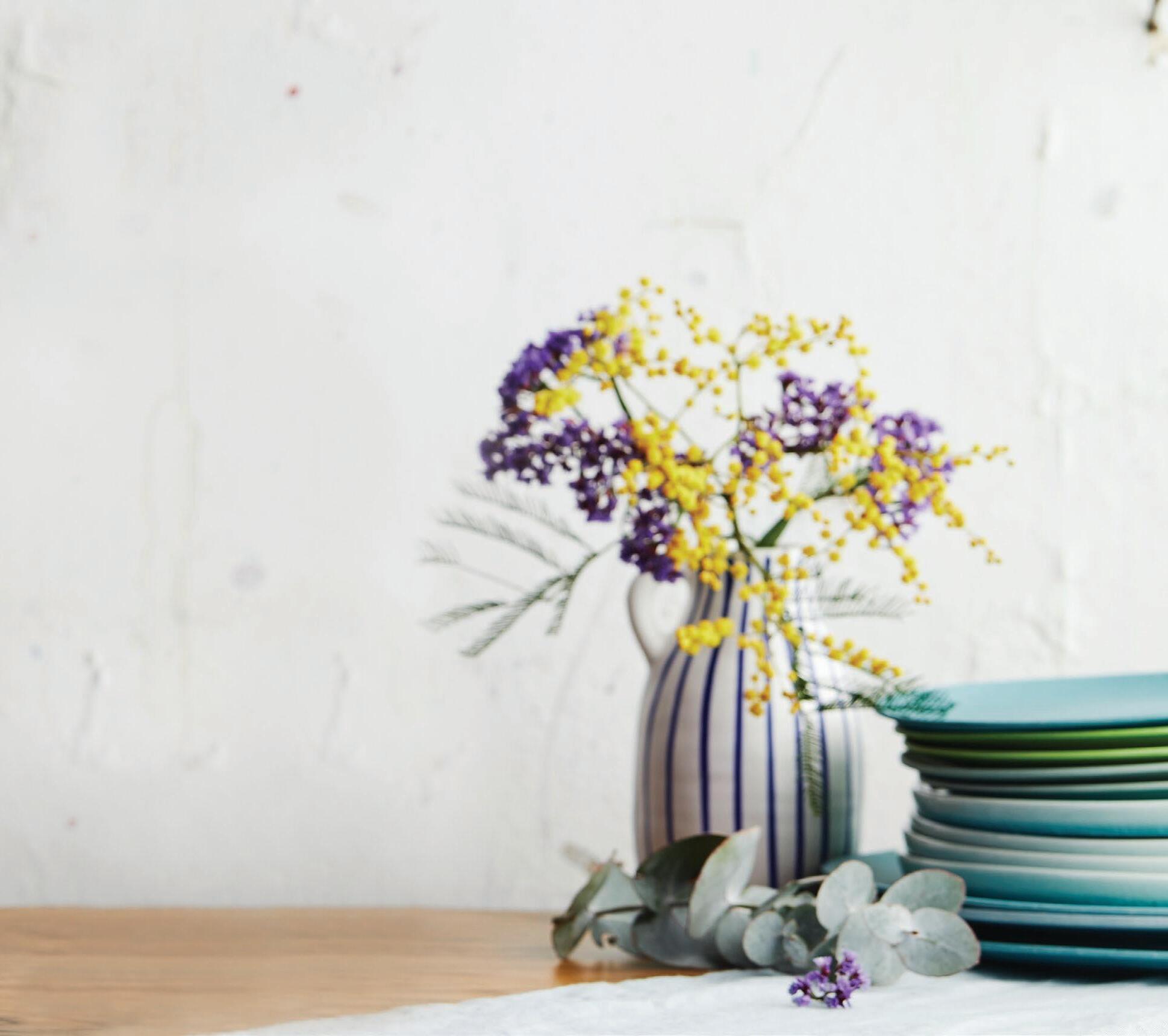
Lots 1 – 73

MELBOURNE • AUCTION + VIEWING
105 commercial road, south yarra, victoria, 3141 telephone: 03 9865 6333 • facsimile: 03 9865 6344 info@deutscherandhackett.com
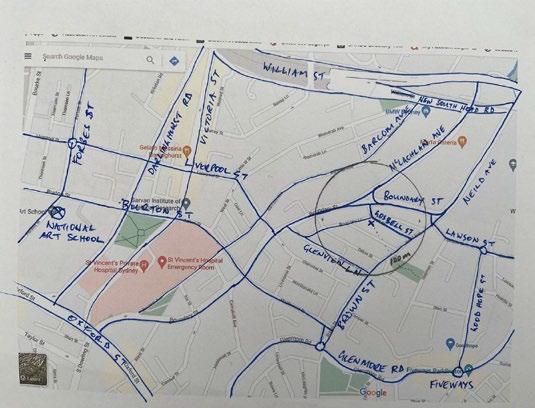
SYDNEY • VIEWING
36 gosbell street, paddington, new south wales, 2021 telephone: 02 9287 0600 • facsimile: 02 9287 0611 info@deutscherandhackett.com
www.deutscherandhackett.com
LOTS 1 –73
WEDNESDAY 22 MARCH 2023
7:00pm
105 commercial road south yarra, vic telephone: 03 9865 6333
THURSDAY 9 – SUNDAY 12 MARCH
36 gosbell street paddington, nsw telephone: 02 9287 0600
11:00am – 6:00pm
THURSDAY 16 – TUESDAY 21 MARCH
105 commercial road south yarra, vic telephone: 03 9865 6333
11:00am – 6:00pm
email bids to: info@deutscherandhackett.com
telephone: 03 9865 6333
fax: 03 9865 6344
telephone bid form – p . 153
absentee bid form – p. 152
www.deutscherandhackett.com/watch-live-auction
CHRIS DEUTSCHER
executive director — melbourne
Chris is a graduate of Melbourne University and has over 40 years art dealing, auction and valuation experience as Director of Deutscher Fine Art and subsequently as co-founder and Executive Director of Deutscher~Menzies. He has extensively advised private, corporate and museum art collections and been responsible for numerous Australian art publications and landmark exhibitions. He is also an approved valuer under the Cultural Gifts Program.
CRISPIN GUTTERIDGE
head of aboriginal art and senior art specialist
Crispin holds a Bachelor of Arts (Visual Arts and History) from Monash University. In 1995, he began working for Sotheby’s Australia, where he became the representative for Aboriginal art in Melbourne. In 2006 Crispin joined Joel Fine Art as head of Aboriginal and Contemporary Art and later was appointed head of the Sydney office. He possesses extensive knowledge of Aboriginal art and has over 20 years experience in the Australian fine art auction market.
FIONA HAYWARD

senior art specialist
After completing a Bachelor of Arts at Monash University, Fiona worked at Niagara Galleries in Melbourne, leaving to join the newly established Melbourne auction rooms of Christie’s in 1990, rising to become an Associate Director. In 2006, Fiona joined Sotheby’s International as a Senior Paintings Specialist and later Deputy Director. In 2009, Sotheby’s International left the Australian auction market and established a franchise agreement with Sotheby’s Australia, where Fiona remained until the end of 2019 as a Senior Specialist in Australian Art. At the end of the franchise agreement with Sotheby’s Australia, Smith & Singer was established where Fiona worked until the end of 2020.

ALEX CRESWICK

managing director / head of finance
With a Bachelor of Business Accounting at RMIT, Alex has almost 25 years experience within financial management roles. He has spent much of his early years within the corporate sector with companies such as IBM, Macquarie Bank and ANZ. With a strong passion for the arts more recently he was the Financial Controller for Ross Mollison Group, a leading provider of marketing services to the performing arts.
DIANA McPHILLIPS
head of online auctions & social media

Diana has a Bachelor of Arts (Art History and Theory, History) together with a Master of Art Curatorship from the University of Sydney. She has also completed studies in Interior Design from the New York Institute of Art and Design. As a member of an Australian diplomatic family, Diana has lived extensively overseas and has gained a strong appreciation for the arts and culture.
ROGER McILROY
head auctioneer
Roger was the Chairman, Managing Director and auctioneer for Christie’s Australia and Asia from 1989 to 2006, having joined the firm in London in 1977. He presided over many significant auctions, including Alan Bond’s Dallhold Collection (1992) and The Harold E. Mertz Collection of Australian Art (2000). Since 2006, Roger has built a highly distinguished art consultancy in Australian and International works of art. Roger will continue to independently operate his privately-owned art dealing and consultancy business alongside his role at Deutscher and Hackett.





Damian has over 30 years experience in public and commercial galleries and the fine art auction market. After completing a BA (Visual Arts) at the University of New England, he was Assistant Director of the Gold Coast City Art Gallery and in 1993 joined Rex Irwin Art Dealer, a leading commercial gallery in Sydney. In 2001, Damian moved into the fine art auction market as Head of Australian and International art for Phillips de Pury and Luxembourg, and from 2002 – 2006 was National Director of Deutscher~Menzies.
Henry Mulholland is a graduate of the National Art School in Sydney, and has had a successful career as an exhibiting artist. Since 2000, Henry has also been a regular art critic on ABC Radio 702. He was artistic advisor to the Sydney Cricket Ground Trust Basil Sellers Sculpture Project, and since 2007 a regular feature of Sculpture by the Sea, leading tours for corporate stakeholders and conducting artist talks in Sydney, Tasmania and New Zealand. Prior to joining Deutscher & Hackett, Henry’s fine art consultancy provided a range of services, with a particular focus on collection management and acquiring artworks for clients on the secondary market.
contemporary art specialist and gallery manager – sydney
Lucie completed her studies in Belgium, obtaining Masters of Arts in Art History (Modern and Contemporary Art), together with a Bachelors of Art History, Archaeology and Musicology from the Université Catholique de Louvain. Since returning to Australia in 2014, she has gained sound experience in cataloguing, research and arts writing through various roles with the Museum of Contemporary Art Australia, S.H. Ervin Gallery, Casula Powerhouse Arts Centre and with private art advisory firms Tutela Capital and LoveArt International.
art specialist and senior researcher
Veronica has a Master of Arts (Art Curatorship and Museum Management), together with a Bachelor of Arts/Law (Honours) and Diploma of Modern Languages from the University of Melbourne. She has strong curatorial and research expertise, having worked at various art museums including the Peggy Guggenheim Collection, Venice and National Gallery of Victoria, and more recently, in the commercial sphere as Senior Art Specialist at Deutscher~Menzies. She is also the author of numerous articles and publications on Australian and International Art.
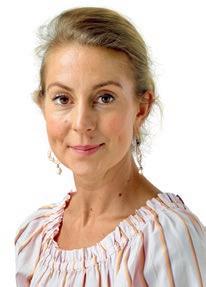


Ella has a Bachelor of Fine Art (Visual Art) from Monash University and studied in both Melbourne and Italy. From 2014, Ella worked at Leonard Joel, Melbourne as an Art Assistant, researcher, writer and auctioneer, where she developed a particular interest in Australian women artists. She is currently studying a Masters of Business (Arts and Cultural Management) at Deakin University with a focus on collection management and research.
Scott Livesey began his career in fine art with Leonard Joel Auctions from 1988 to 1994 before moving to Sotheby’s Australia in 1994, as auctioneer and specialist in Australian Art. Scott founded his eponymous gallery in 2000, which represents both emerging and established contemporary Australian artists, and includes a regular exhibition program of indigenous Art. Along with running his contemporary art gallery, Scott has been an auctioneer for Deutscher and Hackett since 2010.
Crispin Gutteridge 0411 883 052
Henry Mulholland 0424 487 738
Fiona Hayward 0417 957 590
Chris Deutscher 0411 350 150
Damian Hackett 0422 811 034
AUCTIONEER
Scott Livesey
ADMINISTRATION AND ACCOUNTS
Alex Creswick (Melbourne) 03 9865 6333
Lucie Reeves-Smith (Sydney) 02 9287 0600
ABSENTEE AND TELEPHONE BIDS
Eliza Burton 03 9865 6333
SHIPPING
Ella Perrottet 03 9865 6333
CATALOGUE SUBSCRIPTIONS
Eliza Burton 03 9865 6333
significant Australian Indigenous Women Artists lots 1 – 19 page 16
various vendors lots 20 – 32 page 56
selected works from The Laverty Collection lots 33 – 41 page 89
various vendors lots 42 – 73 page 104
prospective buyers and sellers guide page 146 conditions of auction and sale page 148
attendee pre-registration form page 150
catalogue subscription form page 151
absentee bid form page 152
telephone bid form page 153
index page 163
Aboriginal and Torres Strait Islander people are advised that this catalogue contain names and images of deceased persons.
Some imagery on bark and early western desert paintings in this catalogue may be deemed unsuitable for viewing by women, children or uninitiated men. We suggest art co-ordinators at Aboriginal communities show this catalogue to community elders for approval before distributing the catalogue for general viewing. Co-ordinators may wish to mask or remove cert ain images prior to circulation. The English spelling of aboriginal names has evolved over the years. In this catalogue every effort has been made to use the current linguistic form. However original information from certificates has been transcribed as written with the result that there are different spellings of the same name, title, language group and story.
Under the provisions of the Protection of Movable Cultural Heritage Act, 1986, buyers may be required to obtain an export permit for certain categories of items in this sale from the Cultural Property Section:
Department of Communications and the Arts
GPO Box 2154
Canberra ACT 2601
Email: movable.heritage@arts.gov.au
Phone: 1800 819 461
Under the Convention on International Trade in Endangered Species of Wild Fauna and Flora (CITES), permits are required for the movement of wildlife, wildlife specimens and products made or derived from wildlife. This includes species on the endangered species list. Buyers may be required to obtain an export permit for certain categories of items offered at auction. Permits must be obtained from:
Wildlife Trade Regulation Section
Environment Australia
GPO Box 787
Canberra ACT 2601
Email: wildlifetrade@environment.gov.au
Phone: (02) 6274 1900
Under the provisions of the Wildlife and Protection (Regulation of Exports and Imports) Act, 1982, buyers may be required to obtain an export permit for certain categories of items offered at auction (including plant or animal products derived from an Australian native species such as: ivory, tortoise shell, feathers, etc). Permits must be obtained from the Wildlife Protection Section, Environment AustraliaBiodiversity Group at the address above, prior to items being export from Australia.

Opposite: JOHN MAWURNDJUL born 1952
Ngalyod, Rainbow Serpent, 1999 (detail)
Lots 1 – 73
Featuring
Significant Australian Indigenous Women Artists
Lots 1 – 19
Property of various vendors Lots 20 – 32
Selected Works from The Laverty Collection Lots 33 – 41
Property of various vendors Lots 42 – 73

Lots 1 – 19
BARATJALA, 2018
natural earth pigments and printer ink on eucalyptus bark 222.0 x 104.0 cm bears inscription verso: Buku–Larrŋgay Mulka Centre cat. 6358–18
ESTIMATE: $30,000 – 40,000
Buku–Larrŋgay Mulka Centre, Yirrkala, Northern Territory Chapman & Bailey Gallery, Melbourne Private collection, Melbourne, acquired from the above in 2020
This work is accompanied by a certificate of authenticity from Buku–Larrŋgay Mulka Centre.
No ŋ girr ŋ a Marawili’s lines and dotted chains of ochre cover the chalky white background of Baratjala , 2018 radiating from vivid magenta rock forms.1 This network of jagged parallel lines upon a monumental sheet of gently undulating stringybark evoke the movement of water at Baratjala, where the artist camped as a child. Painted with swift confidence, the painting preserves smudged fingerprints and uneven brushstrokes which attest to the artist’s hand and physical presence. Her art is intuitive and immediate. It is characterised by modified forms of sacred clan crosshatching and sections of open space, anticanonical for Arnhem land bark painting. Baratjala , like many of No ŋ girr ŋ a’s mature works, demonstrates a bold divergence in Yol ŋ u art towards personal expression, liberated from the male responsibility of upholding of strictly codified practice but continuing to assert sovereignty over country.
The past two decades have seen an explosion of innovation in the development of Yol ŋ u bark painting, an avant-garde movement led by senior female practitioners working respectfully within the laws of their ancient culture while harnessing the potency of their individual artistic voices. The concrete courtyard of Buku-Larr ŋ gay Mulka Centre, a community run arts centre in Yirrkala, has been the nexus of this movement, fostering a collaborative environment for artists such as sisters Gulumbu and Nyapanyapa Yunipi ŋ u and No ŋ girr ŋ a Marawili. Their secular and boldly contemporary works on bark and on larrakitj (memorial poles) have become renowned both nationally and internationally, keenly collected by national institutions and private collectors alike.
No ŋ girr ŋ a was born to an important Yol ŋ u family, one of many children of famed warrior-leader Mundukul Marawili of the Madarrpa clan. Her father died when she was young, never witnessing a time in which
women were permitted to paint and before he could teach No ŋ girr ŋ a the sacred miny’tji designs of their people transmitted through countless generations. Without the authority to use these detailed ceremonial markings, crucial for painting the sites and songlines of the Madarrpa clan lands, No ŋ girr ŋ a’s artwork focusses instead on warra ŋul (outside meaning) and associated sites of lesser sanctity, while remaining faithful to the Yol ŋ u belief system.
The Madarrpa are Yirritja moiety saltwater people, with their lands extending from Blue Mud Bay into the cyclonic and tidal waters of the Gulf of Carpentaria, beneath which Mundukul , the ancestral lightning snake lives. For No ŋ girr ŋ a, while the men are entitled to sing the songlines of the ‘big waters’ of the sacred snake, she can paint ‘ideas, from the waters that form the outside part of the story.’ 2 While the spraying and rippling movements and exchanges of energy between the water and lightning 3 form the subject matter and linear designs in most of No ŋ girr ŋ a’s paintings, the large circles and rectangles represent the sacred rocks set in deep water at Baratjala, a significant place of knowledge for her clan. Also, the title of this work, ‘Baratjala’ was an anchorage point for Macassan trepangers from Sulawesi, who visited the area and interacted with the Yol ŋ u for several centuries until the early 20th century.
No ŋ girr ŋ a has painted this area of coastline since 2011, and her critical acclaim has brought significant attention to Yol ŋ u art and this remote area of the Northern Territory. Her late husband, Djutadjutja Munu ŋ gurr of the Djapu clan, also had secondary custodianship of Baratjala, reflecting a reciprocal relationship between the two clans. By virtue of No ŋ girr ŋ a’s respectful adherence to Yol ŋ u law and customs, she has been recognised by her people as caretaker and quiet custodian of Baratjala. Her role in the community as a senior Elder is to uphold this ancient area of cross-cultural connection and keep it alive, both physically and cosmologically.
1. In late 2017, No ŋ girr ŋ a challenged what it meant to collect materials from country by working with recycled printer cartridges mixes with ochre. See Russell-Cook, M., ‘Bark Ladies: Eleven Artists from Yirrkala’, Bark Ladies , National Gallery of Victoria, Melbourne, 2021, p. 10
2. The artist, quoted in Kluge-Ruhe Aboriginal Art Collection, University of Virginia [https:// madayin.kluge-ruhe.org/experience/pieces/baratjala-baratjala-2/ ] (accessed 20/02/23)
3. The Top End of the Northern Territory experiences an extraordinarily high number of daily lightning strikes during the wet season from November to April.
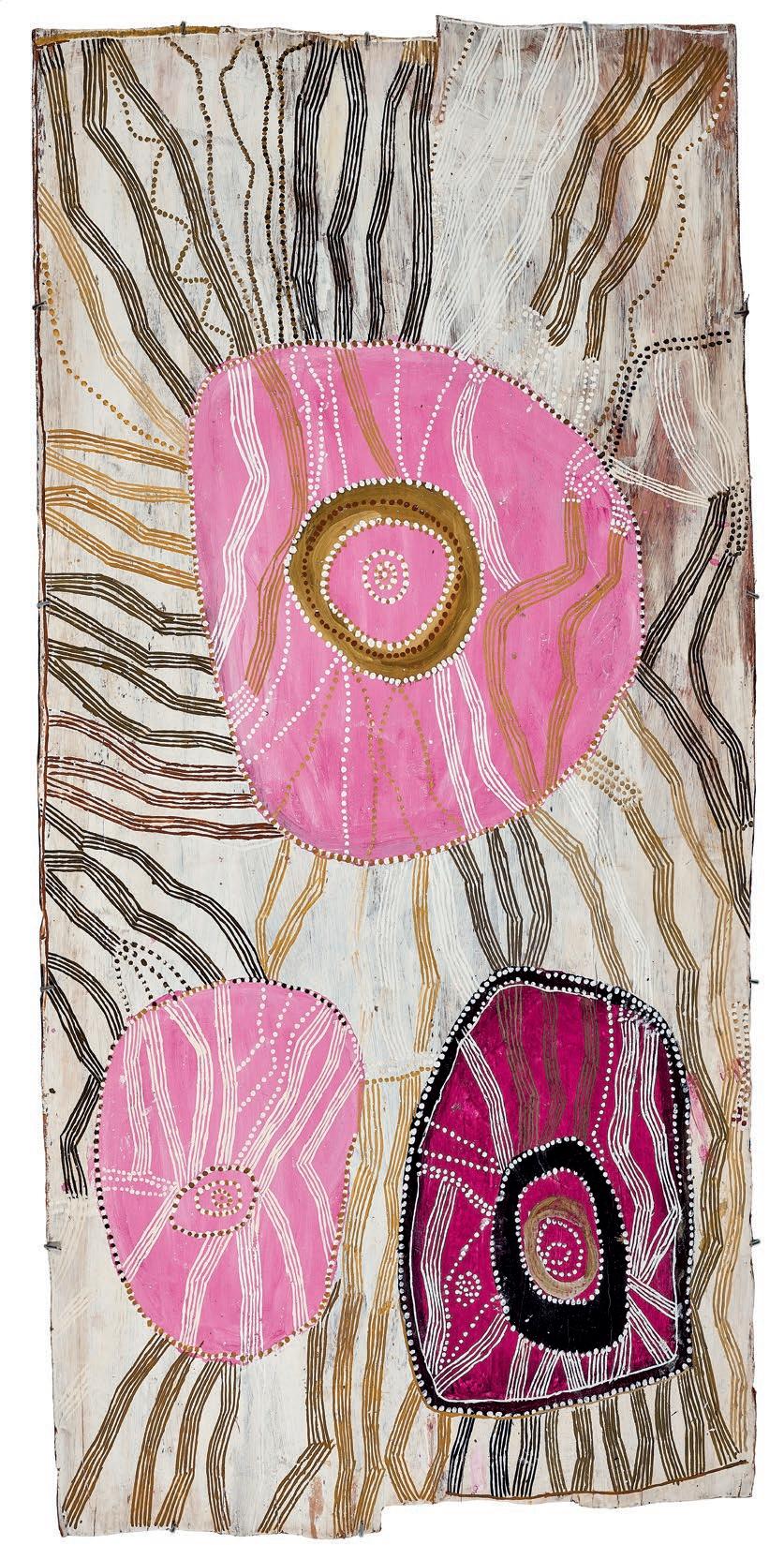
(c.1945 – 2021)
LANDSCAPE, 2017 natural earth pigments on eucalyptus bark (stringybark)
77.0 x 195.0 cm (irregular) bears inscription on Buku–Larrŋgay Mulka Centre label verso: artist’s name, homeland and cat. 3200–17
ESTIMATE: $15,000 – 20,000
Buku–Larrŋgay Mulka Centre, Yirrkala, Northern Territory Roslyn Oxley9 Gallery, Sydney Private collection, Melbourne, acquired from the above in 2017
EXHIBITED
Wynne Prize, Art Gallery of New South Wales, Sydney, 29 July – 22 October 2017 (finalist)
The Moment Eternal: Nyapanyapa Yunupi ŋu , Museum and Art Gallery of Northern Territory, Darwin, 25 April – 25 October 2020

Gibson, P., ‘Politics of landscape: the 2017 Wynne Prize finalists’, The Conversation , 24 July 2017, https:// theconversation.com/politics–of–landscape–the–2017–wynne–prize–finalists–81326 (accessed 17/02/23)
Feagins, L., ‘In the Running for the Wynne’, The Design Files , 26 July 2017, https://thedesignfiles.net/2017/07/2017–wynne–prize–finalists/ (accessed 17/02/23)
Scholes, L., et. al., The Moment Eternal: Nyapanyapa
Yunupi ŋu, Museum and Art Gallery of Northern Territory, Darwin, 2020, pp. 123 (illus.), 147
This work is accompanied by a certificate of authenticity from Buku–Larrŋgay Mulka Centre which states:
‘This bark painting was exhibited as a finalist in the Wynne Prize 2017 at the Art Gallery of NSW. Nyapanyapa’s work has been more valued for the spontaneity and texture of her hand. She expresses her capacity to live in the moment in the freeness of her mark making. There is no calculation or even regard for the audience in her renditions. Their final appearance is almost random. They are an expression of the movements of her hand as they happen to have taken place on that particular day.
In early 2008 she made a dramatic departure from the previous conventions of Yolngu art. The grammatic tense which Yolngu sing/ paint/discuss the creation forces that shape their world is unknown to non-Indigenous. Sometimes simplified as ‘Dreamtime’ in English it conveys a temporal union between prehistory, the present and the distant future. All of these time zones are happening simultaneously! This is the tense in which the creation events happened/are happening/will happen. All Yolngu art until this point was either sacred and in this tense or decorative. Decorative paintings were expressly ‘ordinary’ and without meaning or story of any kind.
But once prompted to treat the story of her almost fatal goring by a Buffalo in the seventies Nyapanyapa threw these conventions over and unleashed a unique set of personal narrative paintings revolving around her own experiences. This subjective, individualistic and linear narrative construction was totally out of step with all previous Yolngu art. The first of these was so surprising it was entered in the 2008 Telstra NATSIAA Award. To bolster the chances of preselection an explanatory video was produced by the newly founded digital archive and studio attached to Buku–Larrŋgay Mulka Centre, The Mulka Project. As it happened the video was completed and the bark had been accepted but the entry was varied to include the bark and video as a 3D installation. Another first was achieved when it won that prize in the Telstra Award.
On the night she received the prize she had a nightmare of the Buffalo and vowed never to paint the beast again. From here she devolved into works that initially showed the forest without the Buffalo; this work a gentle landscape of bush apple trees – that forest.’

(c.1945 – 2021)
DJORRA (PAPER), 2014 12 sheets
felt tip pen and white clay pigment on discarded print paper
76.0 x 56.0 cm (each)
228.0 x 224.0 cm (overall)
ESTIMATE: $14,000 – 18,000 (12)
PROVENANCE
Buku–Larrŋgay Mulka Centre, Yirrkala, Northern Territory
Roslyn Oxley9 Gallery, Sydney Private collection, Melbourne, acquired from the above in 2014
EXHIBITED
Nyapanyapa Yunupi ŋu, Roslyn Oxley9 Gallery at the Melbourne Art Fair, Melbourne, 13 – 17 August 2014
This work is accompanied by a certificate of authenticity from Buku–Larrŋgay Mulka Centre.

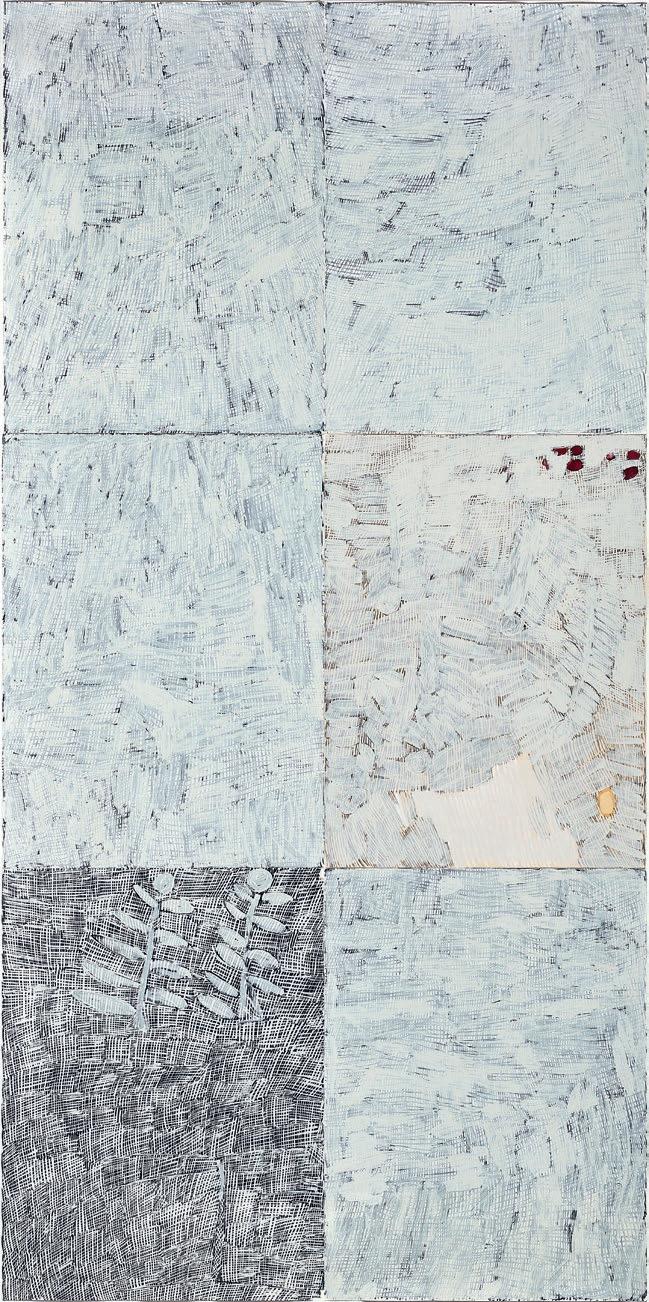
BARATJALA, 2020 natural earth pigments and printer ink on composition board
242.0 x 121.5 cm bears inscription verso: Buku–Larrŋgay Mulka Arts cat. 2301-20
ESTIMATE: $30,000 – 40,000
Buku–Larrŋgay Mulka Centre, Yirrkala, Northern Territory (label attached verso)
Alcaston Gallery, Melbourne Private collection, Sydney
This work is accompanied by a certificate of authenticity from Buku–Larrŋgay Mulka Centre.
No ŋ girr ŋ a Marawili’s imposing contemporary bark painting Baratjala , 2020, crackles with energy. Bouncing between circular rock forms, No ŋ girr ŋ a’s fluid gestures evolve from jagged parallel lines into regular dotted chains and loose strings of diamonds and back again. Evoking the rhythm and cyclical interactions between extreme currents, tides and breaking waves of her maritime lands, these lines are No ŋ girr ŋ a’s own stylistic invention, adapted from the hatching and cross-hatching of her father’s and family’s miny’tji (sacred clan designs) No ŋ girr ŋ a has capitalised on a gender specific way of working within the confines of Yol ŋ u law while asserting a responsibility for, and belonging to, country.
Painted in deep hues of burnt umber and ochre, starkly contrasted with overlaid lines of white gypsum, the tones of this work signal No ŋ girr ŋ a’s return to the natural pigments of Yol ŋ u art after a period of experimentation with bright synthetic inks from printer cartridges in 2017 – 2018. For Yol ŋ u, it is customary to paint country using only materials collected from country. The muted shimmering tones of Baratjala creates a warm and melancholic effect. This mirrors the role of senior women in ceremonial song cycles, who instead of singing, perform the milkarri (crying songs) as explained by the artist’s brother, Djambawa Marawili AM, ‘her paintings cry for the land’.1
No ŋ girr ŋ a’s father was Yol ŋ u leader Mundukul Marawili of the Madarrpa clan and her mother, Bulu ŋ guwuy, was one of four wives. Her childhood was spent in a large, extended family group, living wakir (nomadically) around Yilpara and Blue Mud Bay, using a flotilla of hand-hewn canoes to travel between Groote Eyelandt and the mainland. While No ŋ girr ŋ a started painting in the early 1990s assisting her husband, Djutatdjuta
Munu ŋ gurr from the Djapu clan, it wasn’t until after his death that she would become a regular painter at Buku-Larr ŋ gay Mulka Centre in Yirrkala, and began to paint the lands of her paternal inheritance. 2 Her current work refers back to these areas, remembering ancient ways of living directly on country as she had done as a child.
A leader in the innovation of contemporary bark painting, No ŋ girr ŋ a has pushed the boundaries of what Yol ŋ u law permits in its art practice. She uses sophisticated gestural abstraction to respectfully disavow any sacred intent, while keeping a personal foundation to its artistic vocabulary. The qualities of her expressive abstraction have enabled public institutions such as the National Gallery of Australia and the Art Gallery of New South Wales to recently reposition her work adjacent to (and in discussion with) artworks by Tony Tuckson and Rosalie Gascoigne in their permanent collection galleries. Her technical innovations, including use of printer cartridge ink and composition boards such as featured in Baratjala , bypass the seasonal limitations to the harvest and preparation of stringybark wood, allowing her to continuing producing artworks all year round. Her creative interpretation of the rules has both carved out as space for her own practice and broadened Yol ŋ u and external understanding of what bark painting can be in the contemporary world.
The visual power of No ŋ girr ŋ a’s work and its innovation within cultural laws have not gone unnoticed in the Western structures of the art world. After winning Best Bark in both 2015 and 2019 NAATSIA awards, No ŋ girr ŋ a’s work has been the subject of a major solo exhibition at the Art Gallery of New South Wales (2018), as well as included in major group exhibitions, such as Tarnathi, Art Gallery of South Australia (2019); NIRIN , Biennale of Sydney (2020); Know My Name, National Gallery of Australia; and Bark Ladies, National Gallery of Victoria (2021 – 2022).

NINJILKI, 2008
synthetic polymer paint on linen
198.5 x 302.5 cm
bears inscription verso: artist’s name, title, medium, Mornington Island Arts and Crafts cat. 3359–L–SG–0708 and Alcaston Gallery cat. AK14614
ESTIMATE: $60,000 – 80,000
Mornington Island Arts and Crafts, Mornington Island, Queensland Alcaston Gallery, Melbourne Private collection, Melbourne, acquired from the above in 2008
EXHIBITED
Sally Gabori: Nyinyilki Country – Nyinyilki is where we catch Barramundi , Alcaston Gallery, Melbourne, 13 January – 21 February 2009 (illus. on front cover of exhibition invitation)
Ninjilki, 2008, synthetic polymer paint on canvas, 198.8 × 460.6 cm, in the collection of the National Gallery of Victoria, Melbourne
This work is accompanied by certificates of authenticity from Mornington Island Arts and Crafts and Alcaston Gallery which state:
‘My painting shows the dirty water caused by dugongs feeding near Nyinyilki or Main Base on Bentinck Island.’
Mirdidingkingathi Juwarnda Sally Gabori’s paintings are a tribute to the country on Bentinck Island, a small sparsely vegetated rise of land in the southern Gulf of Carpentaria where she grew up living off the natural abundance of the surrounding ocean and estuaries in the traditions of the Kaiadilt. In 1948, following a series of natural disasters, Gabori along with the other inhabitants of Bentinck Island, were forced to relocate to Gununa on nearby Mornington Island.
Almost sixty years later in 2005, Gabori, then in her early eighties, was invited to participate with other Kaiadilt in an art workshop at the Mornington Island Art Centre. After a few visits, it became clear that her early paintings – often crude abstract depictions of the myriad of fish found in the surrounding estuaries and sea – offered a unique and colourful expression of her personal and family stories spawned
from the memories of her early years on Bentinck Island. Her artistic repertory consisted of six main subjects, all of them places on Bentinck Island included Mirdidingki (the place of her birth); Makarrki (her brother King Alfred’s country); Thundi (her father’s country); Dibirdibi (her husband’s country); and as depicted in this painting, Nyinyilki (an important natural site on the south-eastern corner of Bentinck Island). By painting each place over and over, she relived memories of the people and places she loved. As Cara Pinchbeck states, ‘Gabori’s works are a celebration of her homeland and illustrate a deep connection to country that has not diminished through separation. From her very earliest works, she has depicted aspects of her own country as well as that of her brother, father and husband – including both geographical aspects of the landscape as well as the wildlife, specifically sea-life which is central to the landscape.’1
A monumental recollection of her homeland on the south-eastern corner of Bentinck Island, Ninjilki , 2008 records country held dear by Gabori and her family. Distinguished by a permanent freshwater lagoon, it is a place where she remembered catching barramundi, or scooping up fresh water in baler and trumpet shells. 2 A large sandy bay joins this stretch of coast to Barthayi, in the south and to the east, a long rocky spit creates safe water where Dugongs proliferate. In 2008, following the Kaiadilt land rights victory, an outstation was established here, often referred to as ‘main base’ where Gabori and her family returned to when possible. 3 Here opaque layers of milky white pigment cover a soft yellow base, interspersed with strong vertical crevasses of black and a burst of vivid pink to the lower left. Gabori’s strong gestural markmaking, is an expression of her love for the landscape of her country but also belongs squarely in the realm of contemporary painting.
CRISPIN GUTTERIDGE
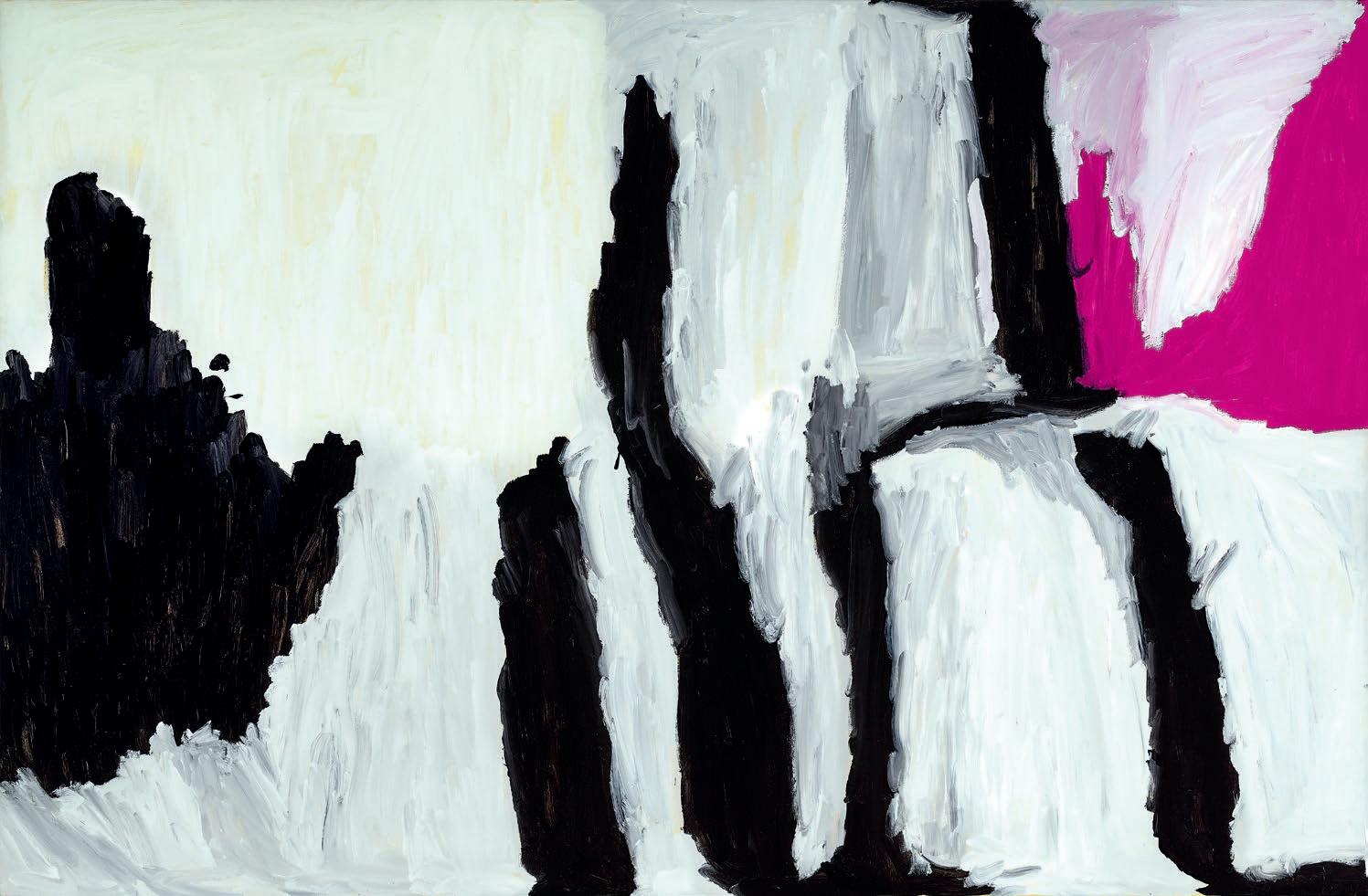
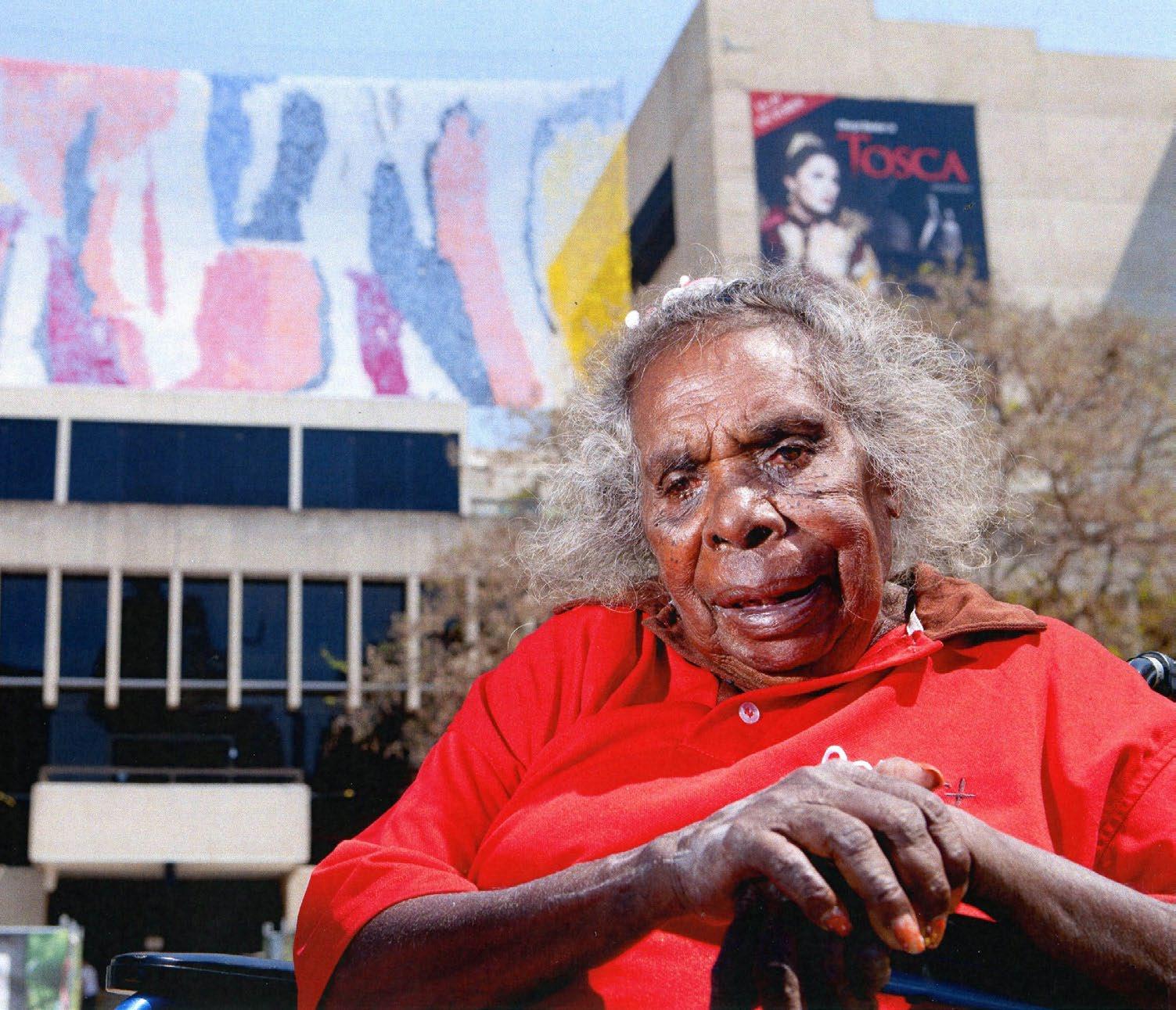
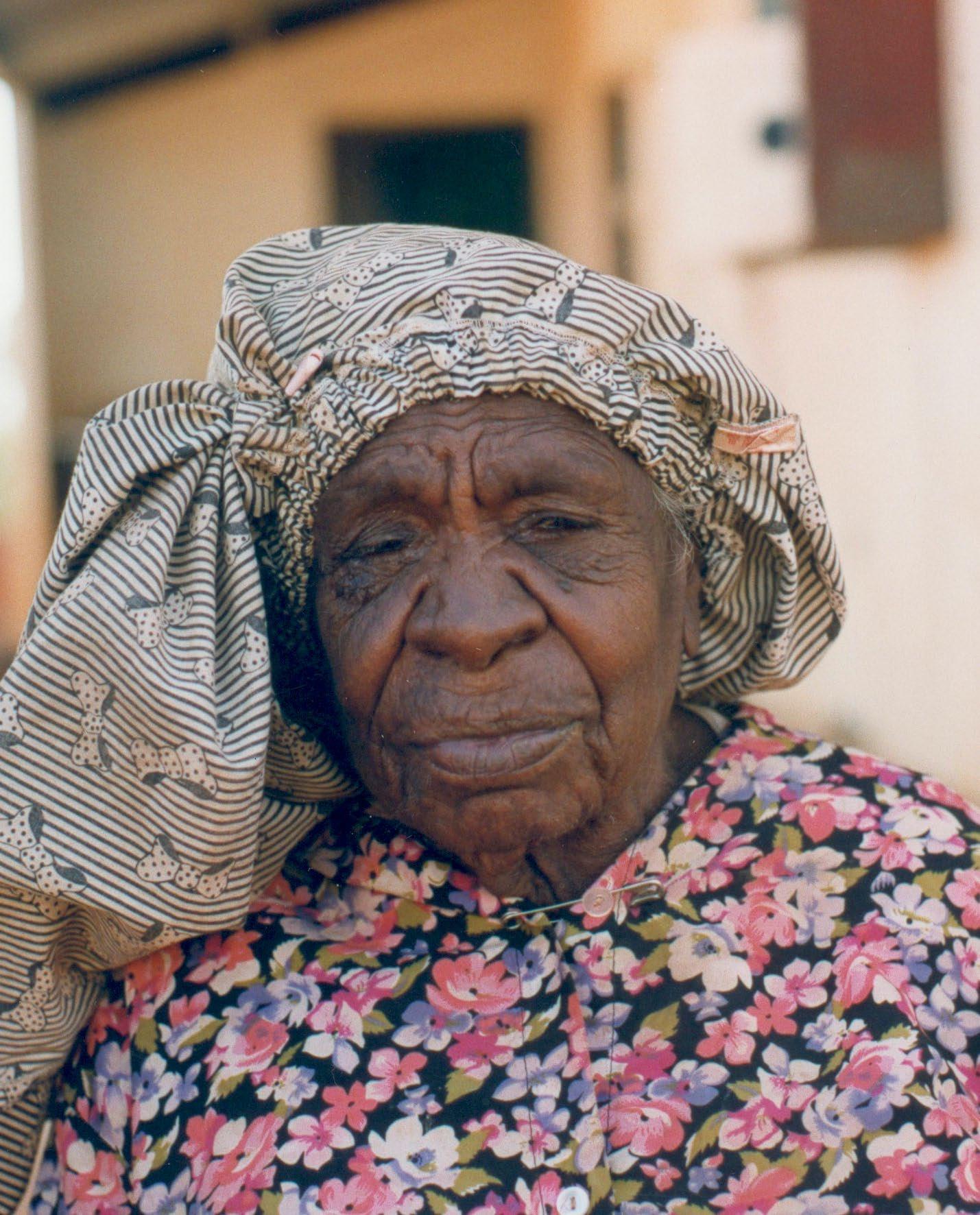 Emily Kame Kngwarreye, 1992
Emily Kame Kngwarreye, 1992
UNTITLED, 1995
synthetic polymer paint on linen
151.5 x 91.0 cm
bears inscription verso: artist’s name and Delmore Gallery cat. 95I015
ESTIMATE: $80,000 – 120,000
Commissioned in September 1995 by Delmore Gallery, Alice Springs, Northern Territory Private collection, Melbourne
EXHIBITED
Emily Kame Kngwarreye: Alhalkere, Paintings from Utopia , Queensland Art Gallery, Brisbane, 20 February – 13 April 1998; Art Gallery of New South Wales, Sydney, 15 May – 19 July 1998; National Gallery of Victoria, Melbourne, 22 September – 22 November 1998, cat. 83 (label attached verso as ‘Untitled (Merne Kame)’)
Neale M., Emily Kame Kngwarreye: Alhalkere, Paintings from Utopia , Macmillan Publishers, Melbourne, 1998, cat. 83, pl. 13, p. 28 (illus. as ‘Untitled (Merne Kame)’)
This work is accompanied by a certificate of authenticity from Delmore Gallery that states:
'Emily Kngwarreye’s “Untitled 1995” exposes the artist as a master colourist who has immersed herself in the full atmosphere that speaks for and celebrates the dramatic event of storms bringing rain, and with that, a celebratory vision of country transformed.
Colour not only distinguished between the ripe and the not so ripe fruits and flower sources of her landscape, but also conveys the all-important aerial view of where water and fertile country lie. Intricate dot-work is dramatically directioned to show an aerial view of Emily’s birthplace, Alhalkere. The form of the country steers stormwater through a filigree of creeks and catchments that replenishes the Sandover River system which spreads out across Utopia Station country, ultimately rejuvenating stories of creation, celebration and communal gatherings.
The colours red, white and yellow are constants with Kngwarreye’s palette. They reference the body paint of Emu men in ceremony and vital Kame seed – Kngwarreye’s custodial Anulare yam daisy.
“Untitled 1995” is a wonderful vibrant creation, radiant when sunlight comes across its space, and on cold days it radiates warmth from the wonderful collision of dots full of fertile energy.’
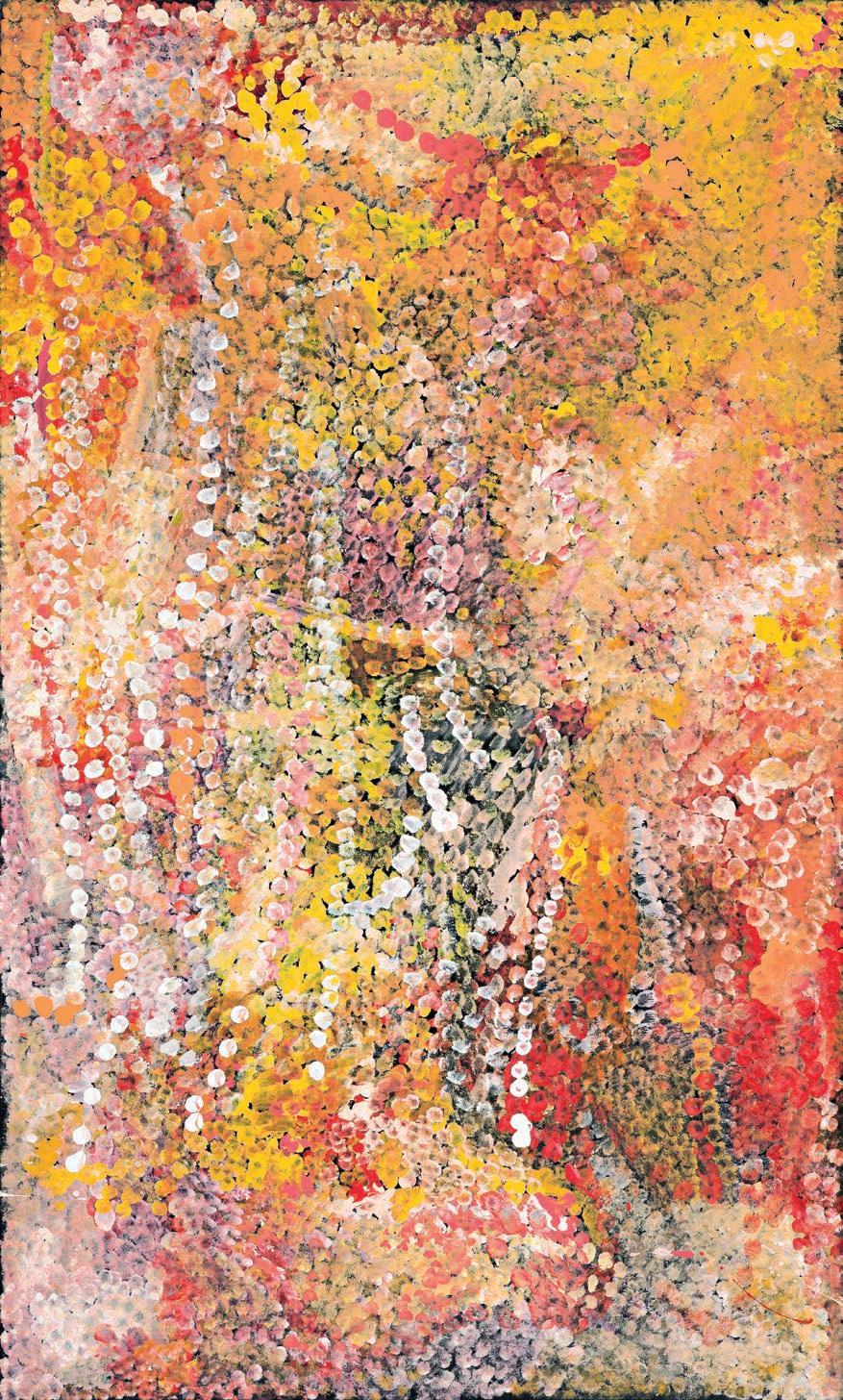
(c.1910 – 1996)
I UNTITLED (YAM DREAMING I), 1995
II . UNTITLED (YAM DREAMING II), 1995 synthetic polymer paint on canvas 87.0 x 60.0 cm (each)
I . bears inscription on backing board verso: artist’s name, title, date, Rodney Gooch, Alice Springs, Mulga Bore Artists cat. 90–1195 and Aboriginal Dreamings Gallery cat. ADG 57096
II . bears inscription on backing board verso: artist’s name, title, date, Rodney Gooch, Alice Springs, Mulga Bore Artists cat. 91–1195 and Aboriginal Dreamings Gallery cat. ADG 57196
ESTIMATE: $40,000 – 60,000 (2)
Commissioned by Rodney Gooch (Mulga Bore Artists), Alice Springs in November 1995 (inscribed verso) Aboriginal Dreamings Gallery, Canberra Private collection, Canberra, acquired from the above in September 1996
the compositions, with sequences of dots aligned between or over dots, dashes and linear marks, meandering lines and areas of dots applied on dots allowing a build-up of colour. Later, simple lines, sometimes monochromatic and at other times in vivid colour, sometimes scrawled, sometimes tangled, meander across the canvas. These elements constitute the artist’s lexicon and are used separately or in varying combinations, thus allowing her work to evolve and be constantly fresh.
Renowned for her colourful, vibrant paintings based on the everchanging desert landscape in her father and grandfather’s Country of Alhalkere, Emily Kngwarreye was deeply rooted in the Anmatyerr land of her ancestors to whom she paid respect through a lifetime of ceremonial song, dance and painting. Her art chronicled on canvas this triangular shaped country, where Emily was born, the youngest of three children, and where she lived in the ways of the eastern Anmatyerr. In 1926, the traditional life of the Anmatyerr and Alyawarr people was disrupted, when the borders of the Utopia pastoral lease were drawn across their lands and from there, local people including Kngwarreye found work on the emergent pastoral stations. Many years after, in 1977, she was introduced to batik as part of adult education classes on Utopia Station and ten years later, in 1988 – 89, painted her first work on canvas, sparking a meteoric rise to fame.
Kngwarreye’s mark making revealed a strength and sureness of hand that delivered an exuberance of gesture. Her paintings were constructed of various elements that over time were either added to or eliminated from the surface of the canvas. Underlying grids structure
Commissioned by Rodney Gooch in November 1995, Untitled (Yam Dreaming I), and Untitled (Yam Dreaming II), are among a small group of powerful and dynamic monochromatic canvases executed on a black ground. Produced between 1995 and early 1996, this phase of her production was characterised by solid meandering lines and are masterpieces of strength and simplicity. The single colour, in this case a bright white, is applied deliberately with web-like traceries energetically spread across each canvas. The sweeping arcs of white paint intersecting, overlaying and crossing in a series of gestural strokes mirror the subject of her painting – the meandering rhizomatic roots of the Arlatyeye plant (the pencil yam - Vigna lanceolata ) and the cracks that form in the ground when the pencil yam ripens – while at the same time highlighting the intimate process between artist and canvas.
More than two decades have passed since Emily Kngwarreye died in September 1996, yet her name remains synonymous with the best of Australian Indigenous art. An original, intuitive and often enigmatic artist, her painting career lasted less than a decade, but the critical acclaim for her prodigious output has not diminished and her reputation has been sustained both in Australia and internationally.
CRISPIN GUTTERIDGE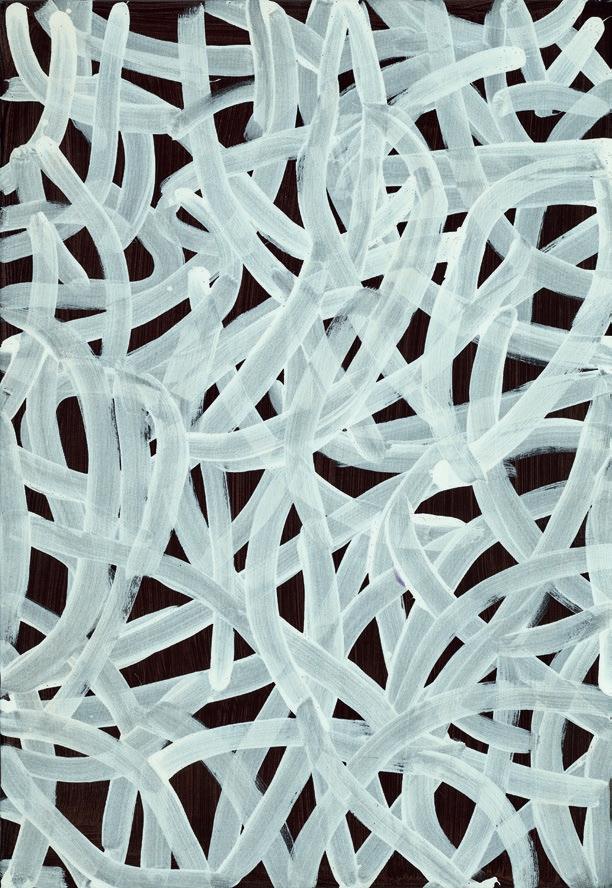
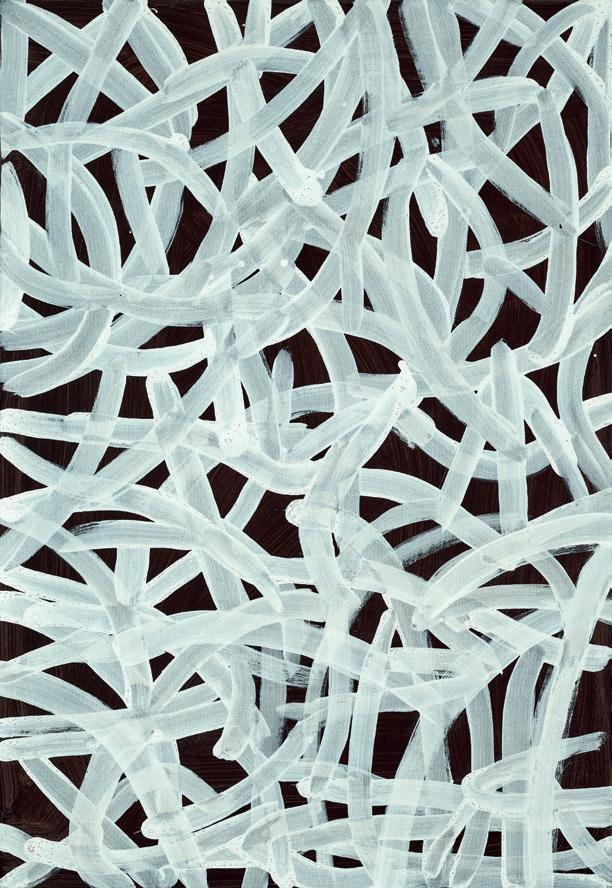
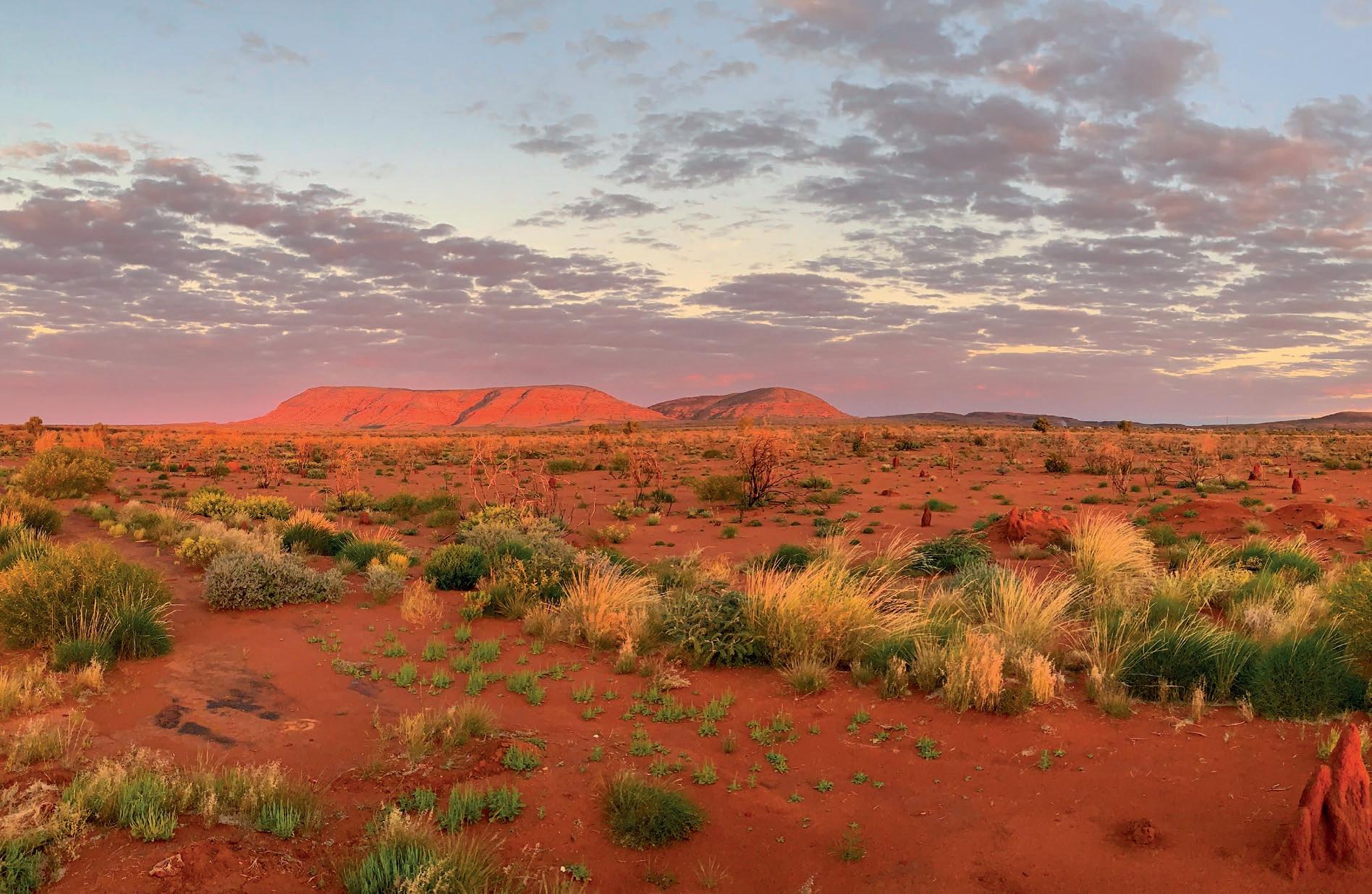

(c.1930 – 2011)
THE ROCKHOLE SITE OF LUPULNGA, 2006 synthetic polymer paint on Belgian linen 106.5 x 91.0 cm
bears inscription verso: artist’s name, size and Papunya Tula Artists cat. MN0609137
ESTIMATE: $18,000 – 25,000
Papunya Tula Artists, Alice Springs, Northern Territory Gallery Gabrielle Pizzi, Melbourne (label attached verso) Private collection, Brisbane, acquired from the above
This work is accompanied by a certificate of authenticity from Papunya Tula Artists which states:
‘This painting depicts designs associated with the site of Lupulnga, a rockhole situated south of the Kintore Community. The Peewee (small bird) Dreaming is associated with this site, as well as the Kungka Kutjarra or Two Travelling Women Dreaming. During mythological times a group of ancestral women visited this site holding ceremonies associated with the area, before continuing their travels north to Kaakuratintja (Lake MacDonald), and later the Kintore area. The lines in the painting represent spun hairstring which is used in the making of nyimparra (hair-belts), which are worn by both men and women during ceremonies.’

TJUNKIYA NAPALTJARRI
(1927 – 2009)
WOMEN AT THE ROCKHOLE SITE OF UMARI, 2004
synthetic polymer paint on linen
183.0 x 244.0 cm
bears inscription verso: artist’s name, size and Papunya Tula Artists cat. TN0409116
ESTIMATE: $20,000 – 30,000
Papunya Tula Artists, Alice Springs, Northern Territory
Gallery Gabrielle Pizzi, Melbourne Private collection, Victoria
This work is accompanied by a certificate of authenticity from Papunya Tula Artists which states:
‘This painting depicts designs associated with the rockhole site of Umari, situated in sandhill country east of Mt. Webb in Western Australia. A number of women gathered at the site to perform ceremonies associated with Umari. The women, one of the Nangala kinship subsection and the others of the Napaltjarri kinship subsection, later travelled towards the east. One of the mythologies associated with the area concerns a relationship between a man of the Tjakamarra kinship subsection and a woman of the Nangala kinship subsection. This is a mother–in–law relationship which is forbidden in Western Desert Aboriginal culture.’
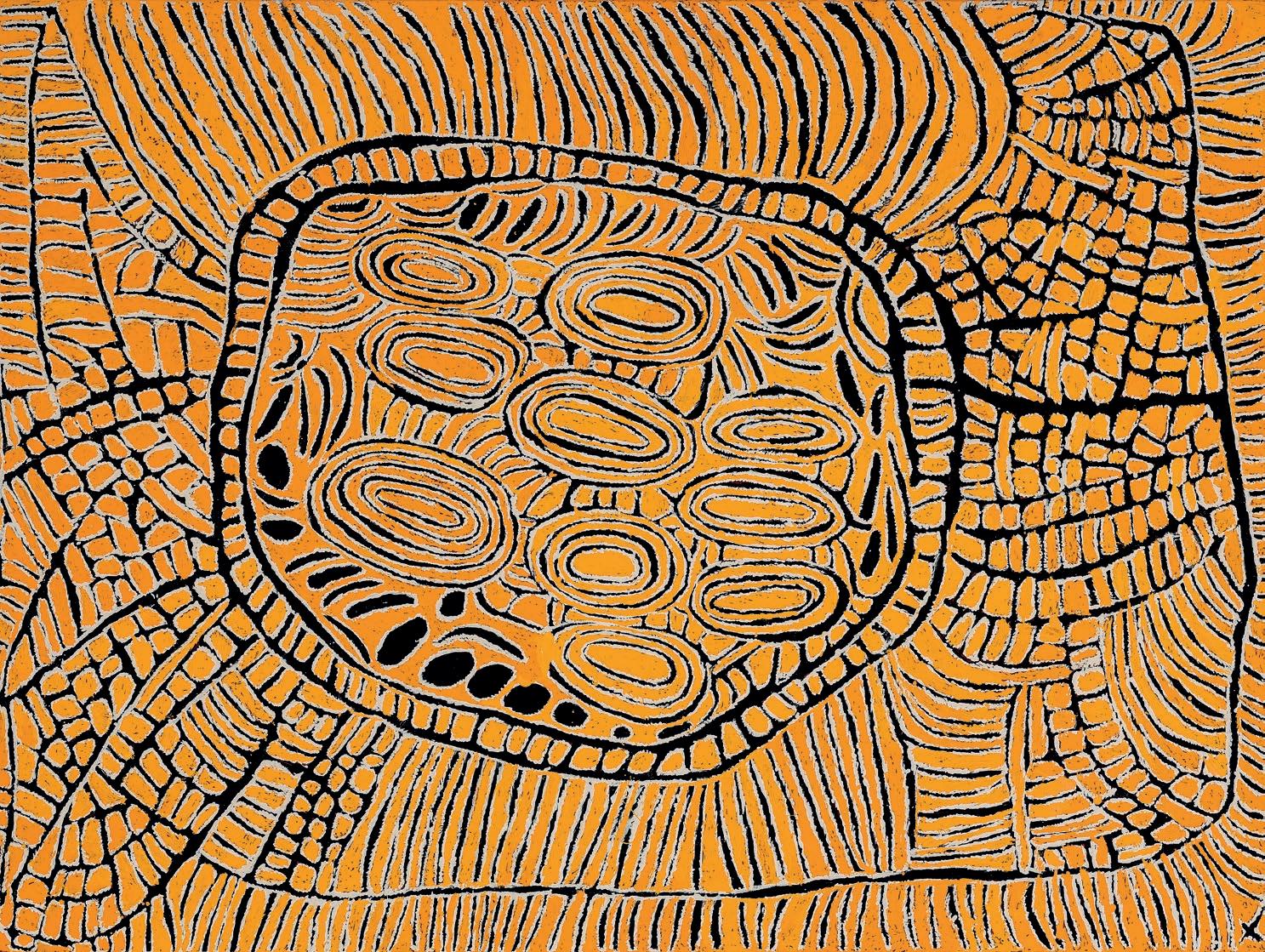
– 2019)
PARWALLA, 2002
synthetic polymer paint on Belgian linen
180.0 x 120.0 cm bears inscription verso: artist’s name, size and Warlayirti Artists cat. 65/02
ESTIMATE: $10,000 – 15,000
This work is accompanied by a copy of the certificate of authenticity from Warlayirti Artists which states:
‘This painting depicts the country of Elizabeth’s father. This country is known for Parwalla and is located far to the south of Balgo in the Great Sandy Desert, west of the community of Kiwirrkurra. The landscape of the area is dominated by tali, or sand dunes. The Parwalla area is a swampy area, filling a huge area with water after the wet season rain. These wet season rains result in an abundance of good bush tucker. The majority of the painting shows the different bush foods, including kantjili, or bush raisin, and minyili. Women, the U shapes, with their wana (digging sticks) and coolimons (sic) are also depicted. The white colour, which dominates the painting, represents the spinifex which grows strong and seeds after the wet season rains. These seeds are white in colour, and grow so thickly they obscure the ground and other plants below.’

EUBENA NAMPITJIN (c.1921 – 2013)
KINYU, 2010 synthetic polymer paint on linen 120.0 x 60.0 cm bears inscription verso: artist’s name, size and Warlayirti Artists cat. 17/10
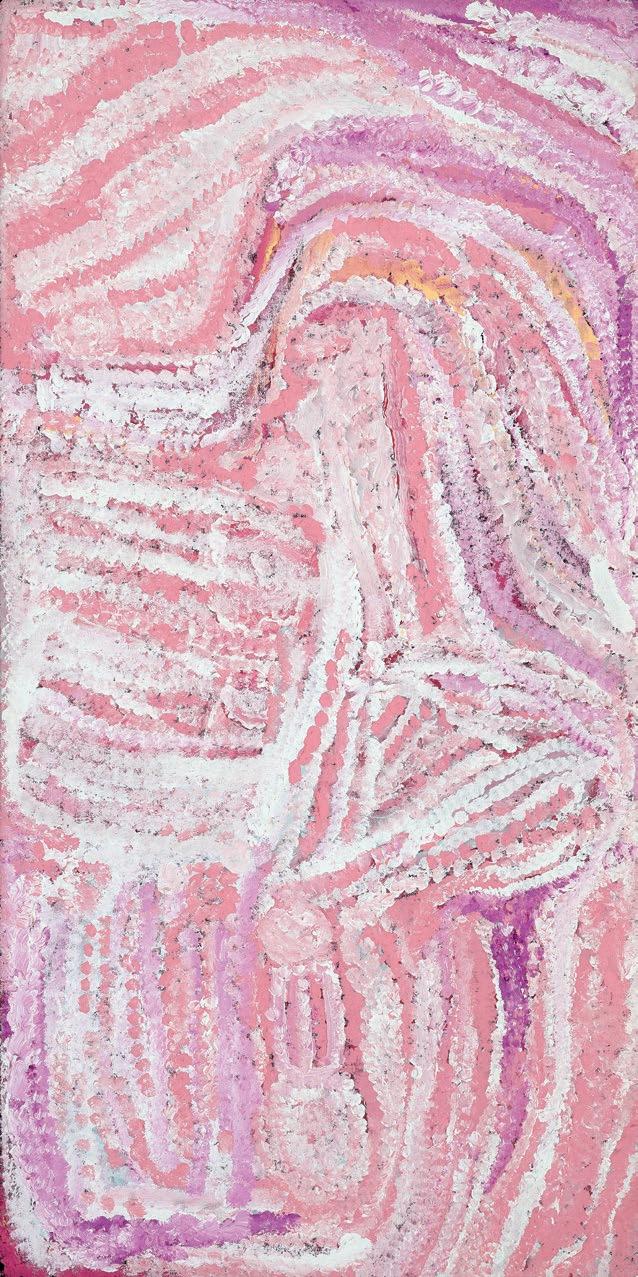
ESTIMATE: $6,000 – 9,000
Warlayirti Artists, Balgo Hills, Western Australia
Gallery Gabrielle Pizzi, Melbourne
Private collection, Melbourne, acquired from the above in 2014
Balgo 2014 , Gallery Gabrielle Pizzi in association with Warlayirti Artists, Melbourne, 25 June – 26 July 2014, cat. 10
This work is accompanied by a certificate of authenticity from Warlayirti Artists which states:
‘Eubena has painted some of her country south west of Balgo along the middle stretches of the Canning Stock Route. The majority of the painting shows the tali (sandhills) that dominate this country. The central circle is Tjurrnu (soakwater) named Midjul. This is the country where Kinyu the spirit dog lives. Eubena would often cover Midjul with leaves so Kinyu wouldn’t come out and would also leave gifts of goanna for Kinyu.’
(c.1921 – 2013)
KINYU, 2009 synthetic polymer paint on linen 120.0 x 59.0 cm bears inscription verso: artist’s name, size and Warlayirti Artists cat. 496/09

ESTIMATE: $6,000 – 9,000
Warlayirti Artists, Balgo Hills, Western Australia
Gallery Gabrielle Pizzi, Melbourne
Private collection, Melbourne, acquired from the above in 2014
Balgo 2014 , Gallery Gabrielle Pizzi in association with Warlayirti Artists, Melbourne, 25 June – 26 July 2014, cat. 12
This work is accompanied by a certificate of authenticity from Warlayirti Artists which states:
‘Eubena has painted some of her country south west of Balgo along the middle stretches of the Canning Stock Route. The majority of the painting shows the tali (sandhills) that dominate this country. The central circle is Tjurrnu (soakwater) named Midjul. This is the country where Kinyu the spirit dog lives. Eubena would often cover Midjul with leaves so Kinyu wouldn’t come out and would also leave gifts of goanna for Kinyu.’
(c.1924 – 2015)
MAKARRKI, 2008 synthetic polymer paint on linen 197.5 x 101.5 cm bears inscription verso: artist’s name, title, medium and Mornington Island Arts and Crafts cat. 3154–2–L–SG–0508 and Alcaston Gallery cat. AK14494B
ESTIMATE: $18,000 – 25,000
Mornington Island Arts and Crafts, Mornington Island, Queensland (stamped verso)
Alcaston Gallery, Melbourne
Private collection, Canberra, acquired from the above in 2008
This work is accompanied by a certificate of authenticity from Alcaston Gallery which states:
‘My painting shows my big brother King Alfred’s country. This is where he was born near a big river.’
In 1948, following a series of natural disasters, Sally Gabori along with the other inhabitants of Bentinck Island were forced to relocate to Gununa on nearby Mornington Island. Gabori had spent the first few decades of her long life on Bentinck Island, the island of her birth, living off the natural resources of the surrounding ocean and estuaries in the traditions of the Kaiadilt. Although Gabori resided on Mornington Island for the remainder of her long life, her connection to Bentinck Island life and culture was innate, and her success as an artist enabled her to return to country through her paintings. Makarrki , 2008 is a gestural and expressive tribute to the landscape and history of this country to the north of Bentinck Island.
Utilising a limited but bold palette of flat planes and solid colours, Sally Gabori records her memories of Makarrki, country that belonged to her brother King Alfred. A leader and warrior who was a rival of her husband Pat Gabori, and whose relationship with Gabori created intense friction within Kaiadilt society eventually resulting in her brother’s death. Makarrki is characterised by a large river and estuary of the same name that runs through the north of the Island with abundant sea-life including dugongs and turtles.1
CRISPIN GUTTERIDGE
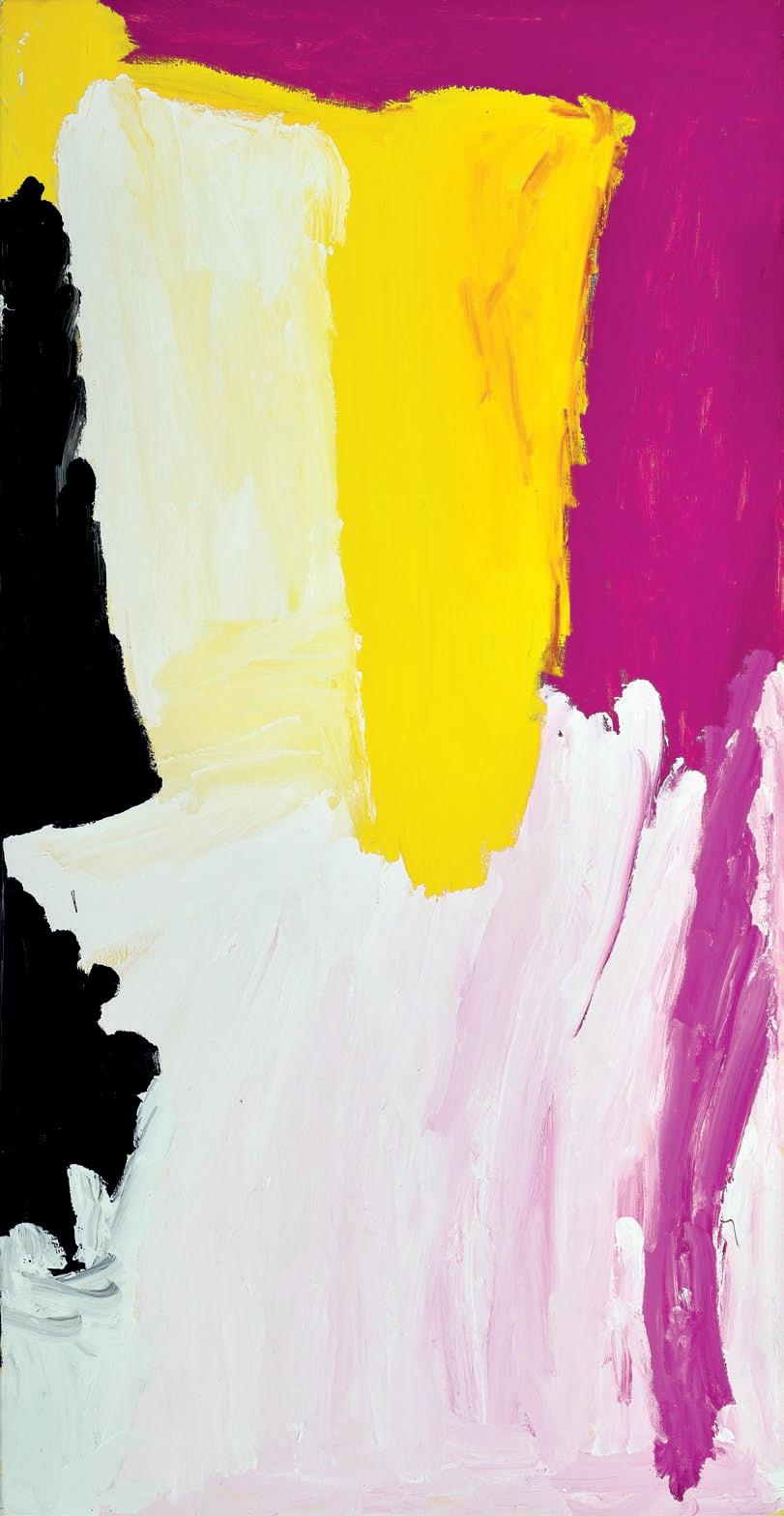
GUMANA (1952 – 2020)
GURRIMALA (LARRAKITJ), 2015 natural earth pigments on hollow log
193.0 cm height
ESTIMATE: $8,000 – 12,000
Buku–Larrŋgay Mulka Centre, Yirrkala, Northern Territory (cat. 4801X)
Chapman & Bailey Gallery, Melbourne
Private collection, Melbourne, acquired from the above in 2020
This work is accompanied by a certificate of authenticity from Buku–Larrŋgay Mulka Centre which states in part:
‘This work represents Garrimala, a billabong near the artist’s residence, the Dhalwaŋu clan homeland at Gängaņ. It is a sacred site for the artists’ mother’s Gälpu clan.
But this imagery really refers to perhaps the oldest continuous human religious iconographical practice- the story of the Rainbow Serpent. Estimates vary from 40,000–6,000 years on the depictions of the Rainbow Serpent in West Arnhem rock shelters.
Wititj is the all powerful rainbow serpent (olive python) that travelled through Gälpu clan lands and on further, during the days of early times called Waŋarr. Djaykuŋ the Javanese filesnake is a companion and possibly alternate incarnation of Wititj, living in amongst the Dhatam, or waterlillies, causing ripples and rainbows (Djari) on the surface of the water...
The Galpu clan miny’tji (sacred clan design behind the lillies) represents Djari (rainbows) and the power of the lightning within them. It also refers to the power of the storm created by Wititj, the diagonal lines representing trees that have been knocked down as Wititj moves from place to place. The ribs of the snake also form the basis of the sacred design here.
The sun shining against the scales of the snake form a prism of light like a rainbow. The arc which a snake in motion travels through holds to a rainbow shape but causes the oily shimmer to refract the colours of the rainbow. The power of the lightning is made manifest when they strike their tongue. The thunder being the sound they make as they move along the ground. The morning after a major cyclone there are swathes of stringybark bent over in snake trails through the bush in just the same way a normal scale snake leaves bent over grass traceable by trained trackers. After Cyclone Monica there was a path cleared through the stringybark forest almost from Maningrida to Jabiru.
The dots within the circle represent the water lily seed pod.'
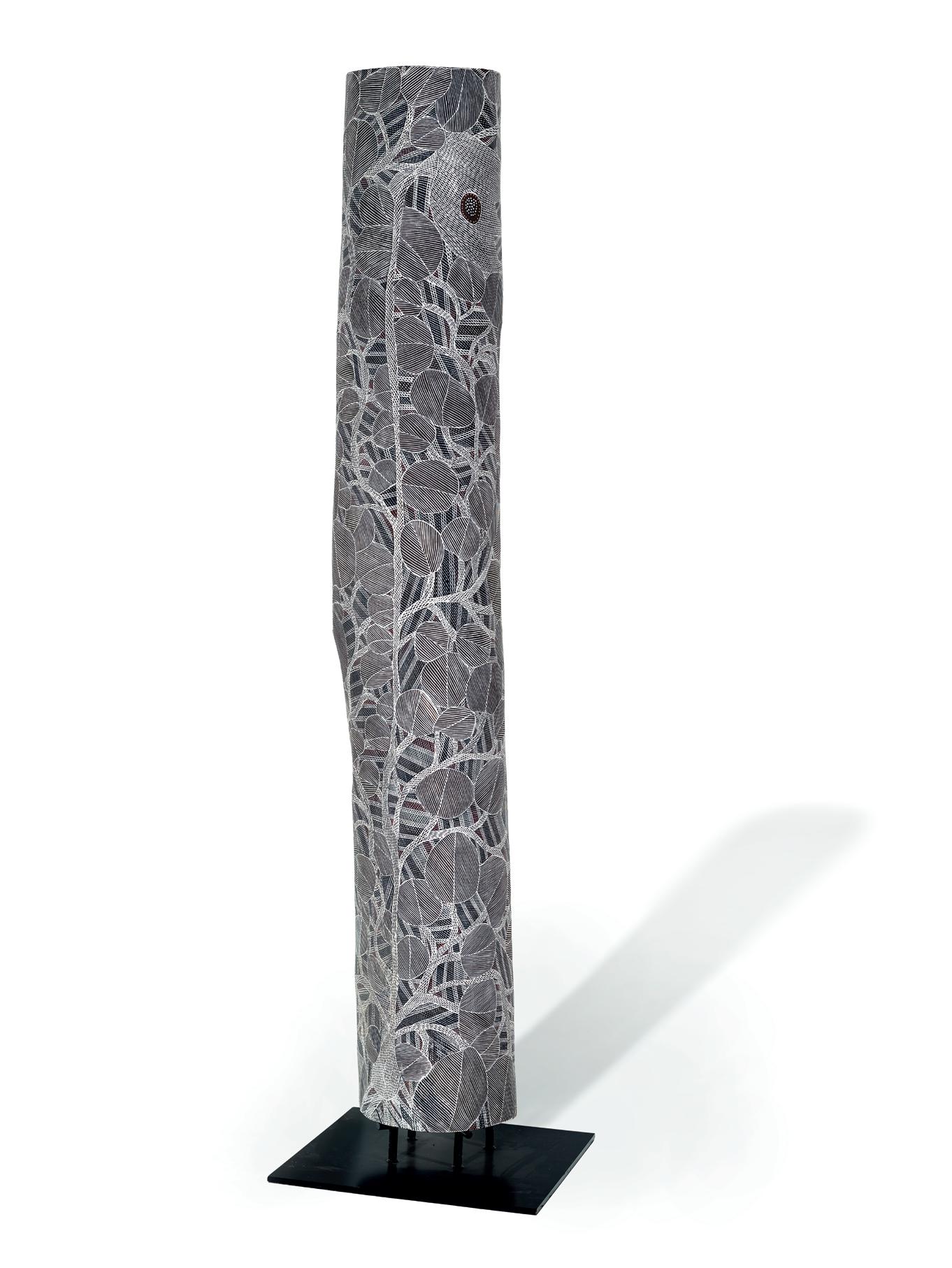
born 1952
KURU ALA, 2005
synthetic polymer paint on canvas
124.5 x 139.0 cm
bears inscription verso: artist's name, title, date and Tjungu Palya cat. TPMB05007
ESTIMATE: $8,000 – 12,000
Tjungu Palya Artists, Nyapari, South Australia
Vivian Anderson Gallery, Melbourne
Private collection, Adelaide, acquired from the above in 2006
This work is accompanied by a certificate of authenticity from Tjungu Palya Artists which states:
Ngura tjuta, kapi piti tjuta (there are many camps and rockholes here). This is seven sisters country. Minyma tjuta yuuangka nyinanyi (the women are sitting inside the windbreak). The women left this country and headed to Yukula.
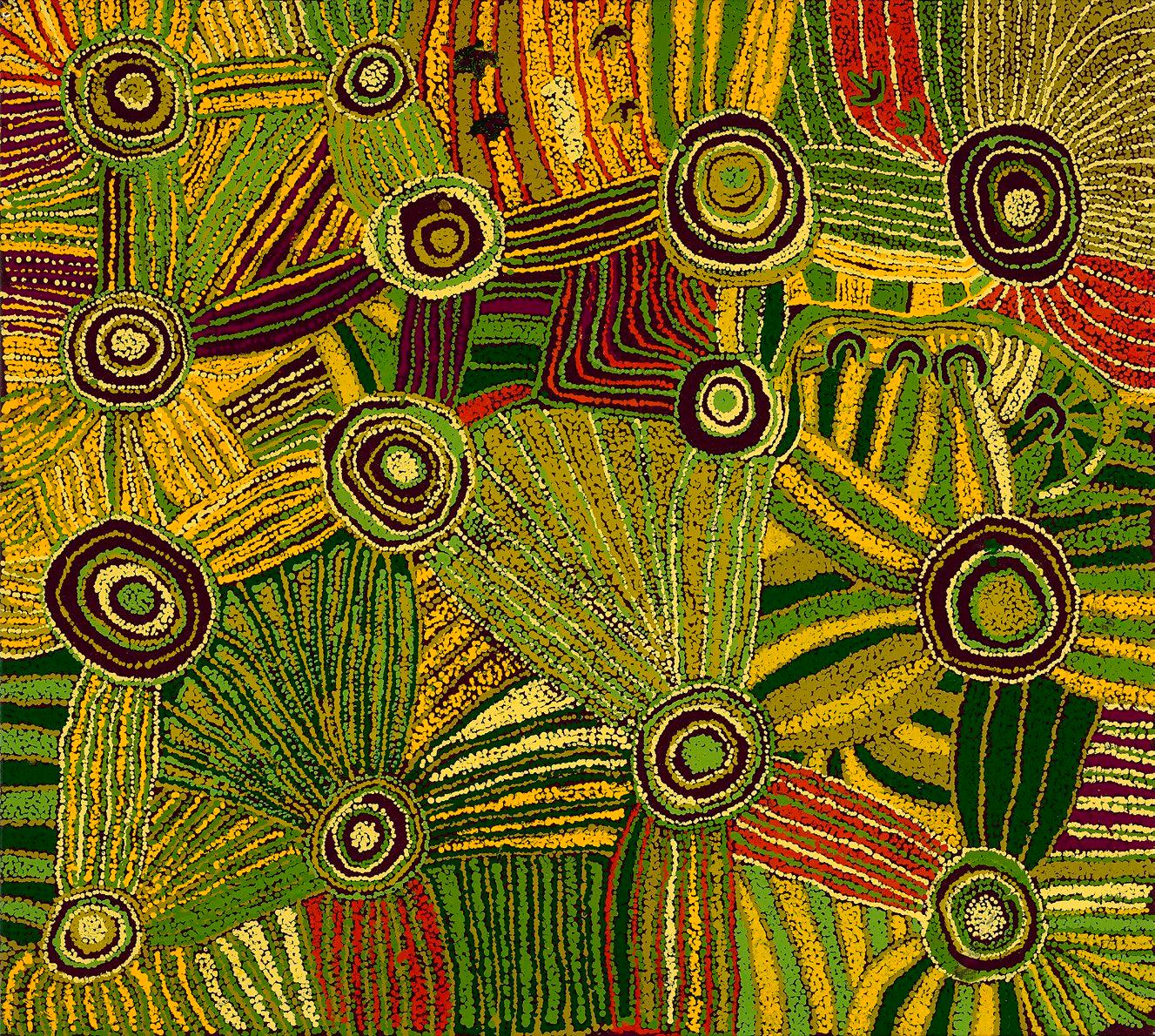
born 1962
WOVEN MAT, 2007
rusted galvanised iron with fencing wire 150.0 x 150.0 cm
ESTIMATE: $6,000 – 9,000
16 PROVENANCE
Gallery Gabrielle Pizzi, Melbourne
Private collection, Melbourne, acquired from the above in 2007
EXHIBITED
Lorraine Connelly-Northey: O’Possum Skin Cloaks and Narbongs , Gallery Gabrielle Pizzi, Melbourne 1 – 26 May 2007, cat. 18
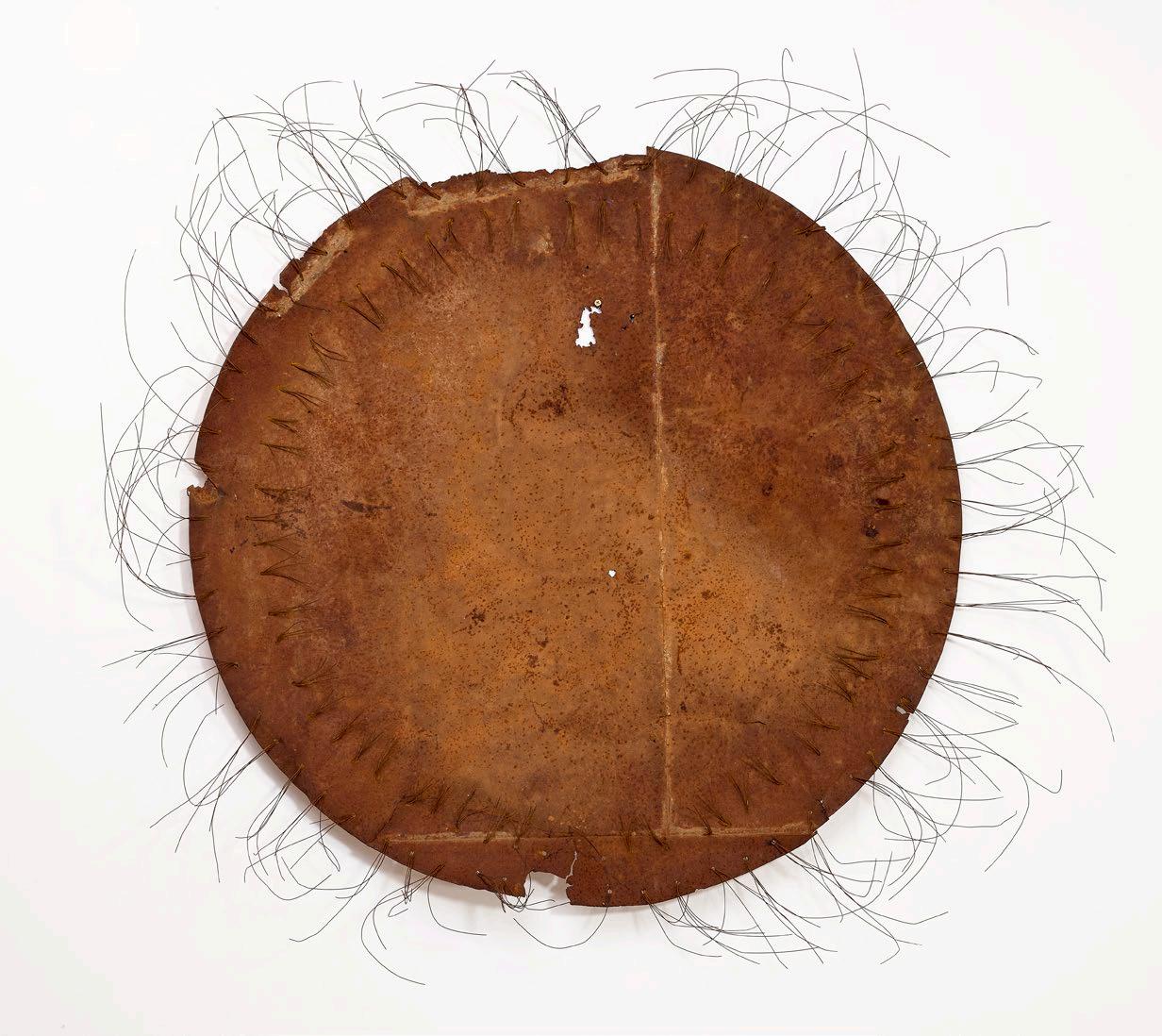
LORRAINE
born 1962
NARRBONG (STRING BAG), 2013 rusted corrugated iron with steel rod 167.0 cm height

ESTIMATE: $5,000 – 8,000
17
PROVENANCE
Gallery Gabrielle Pizzi, Melbourne
Private collection, Melbourne, acquired from the above in 2013
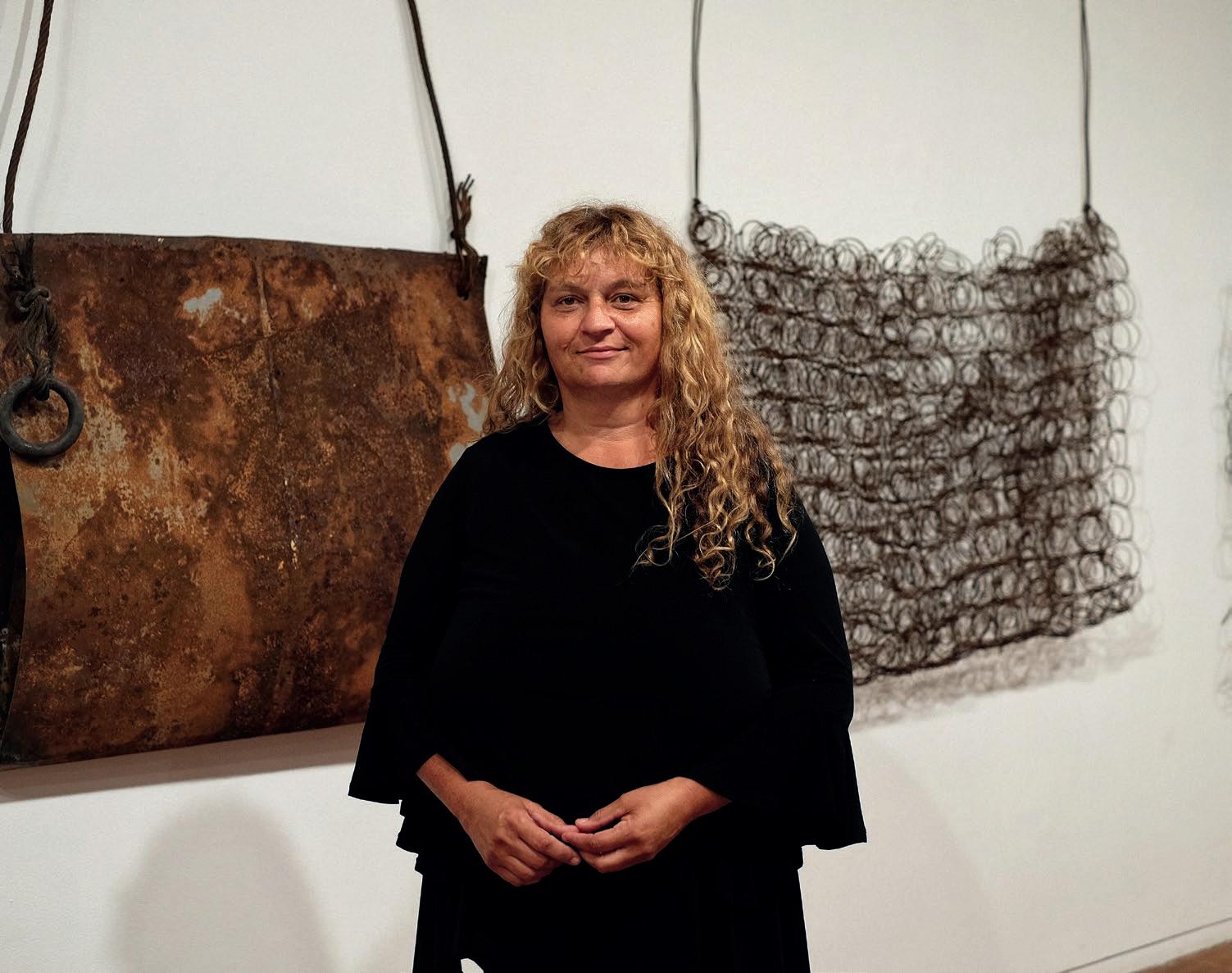
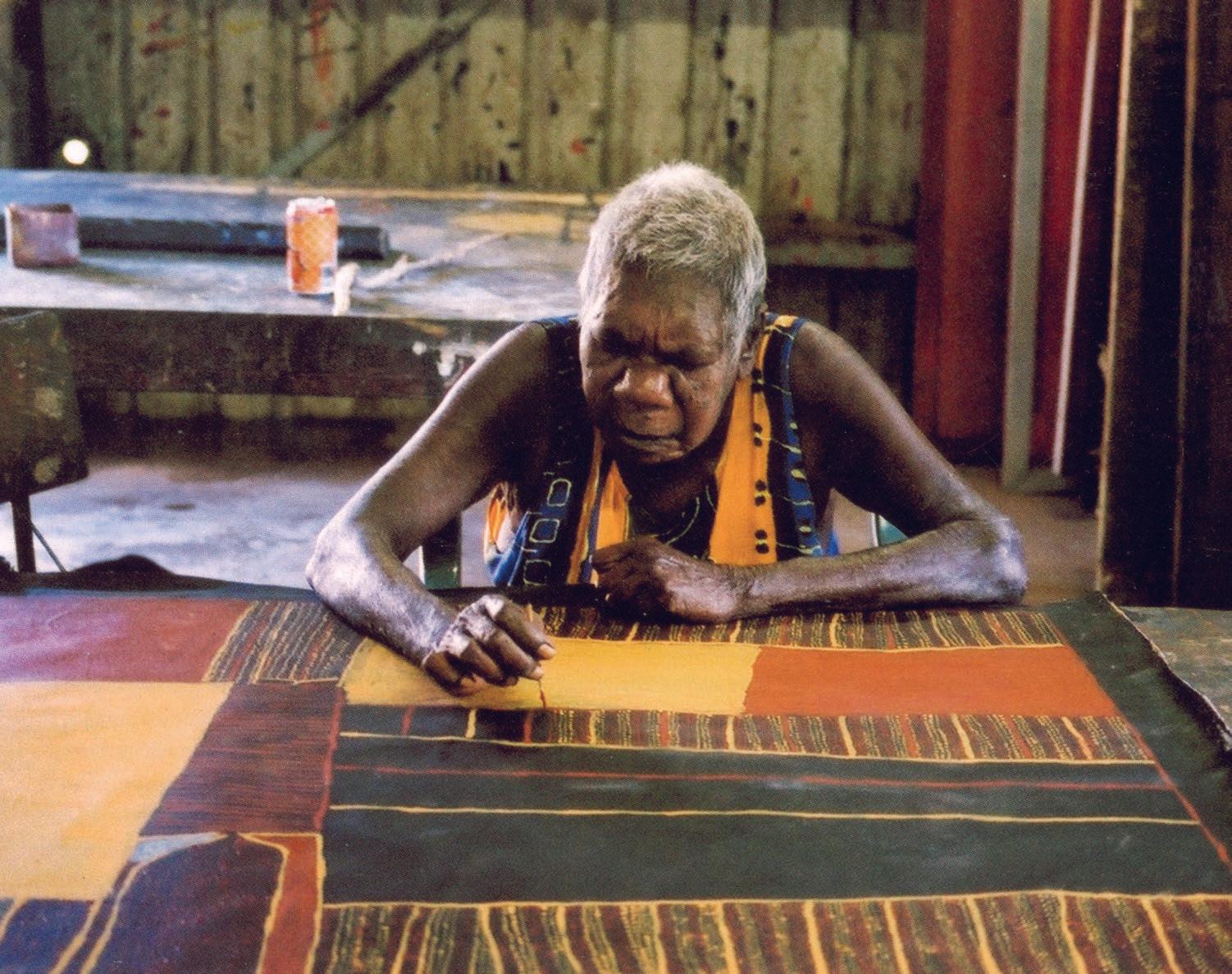
(c.1928 – 2003)
UNTITLED, 1997
natural earth pigments and synthetic binder on canvas
71.0 x 78.0 cm
bears inscription verso: artist’s name and date
ESTIMATE: $25,000 – 35,000
Jilamara Arts and Crafts, Milikapiti, Melville Island, Northern Territory (stamped verso)
Aboriginal and Pacific Art, Sydney
Private collection, Sydney
Sotheby’s, Melbourne, 22 November 1999, lot 410
Private collection, Melbourne
Sotheby’s, Melbourne, 26 July 2004, lot 223
Private collection, Sydney
‘I will paint until the day I die ’1
‘Kitty Kantilla was one of Australia’s most remarkable Indigenous artists, celebrated for her innovation, unique style and mastery of a range of mediums... She produced an extraordinary body of work from the 1970s until her last days in 2003. In her hands the magic of Tiwi culture was translated into works of international significance.’ 2
‘Her poetics of intimacy taught the art world that quality is not contingent upon scale. Her means were few: she needed only dots, lines and ochre colours to create infinite variations of rhythm, balance and beauty, of which no two are exactly alike. Kantilla’s works, like those of early European modernists, do not map space or tell a story, but radically affirm the painted surface and thereby guarantee the autonomy of art. Yet the power and inwardness of Kantilla’s innovative art hinges on its deep resonance with customary ritual. For the viewer, Kantilla’s inescapably modern works are also highly charged with ceremony, with something spiritual and untouchable.
Kantilla’s sophisticated form of abstraction eludes explanation in terms of narrative because she strenuously pursued her art from deep within her culture. By painting, Kantilla was also singing and dancing: she sensed and invoked holistically, through a special music of natural ochre and design, the decorated objects, the painted dancers and their kinetic movement, the percussive rhythm and dynamism of ceremony. This was her Tiwi-ness, her identity: it drove her to make art and was her special form of activism; painting was central to her identity...’ 3
3.

KULAMA–YAM, 2000
natural earth pigments on canvas
121.5 x 121.5 cm bears inscription verso: artist’s name and Tiwi Design cat. TD2356-00
ESTIMATE: $5,000 – 7,000
Tiwi Design, Bathurst Island
Private collection, United States of America
Deutscher and Hackett, Melbourne, 24 March 2010, lot 172
Private collection, Melbourne
This work is accompanied by a certificate of authenticity from Tiwi Design which states:
‘My husband taught me to paint Kulama (Yam) all the time. He taught mehow to paint. Kulama ceremony is very important to Tiwi. When finish rain we start Kulama. We used to have Kulama ceremonies at Munkarra Park in Nguiu. Kulama ceremony is good for health, good hunting, initiation and good marriage. We have this ceremony once a year. It lasts for three days. They give people Tiwi names, prepare Kulama yam and have lots of singing. It’s important to Kulama.’
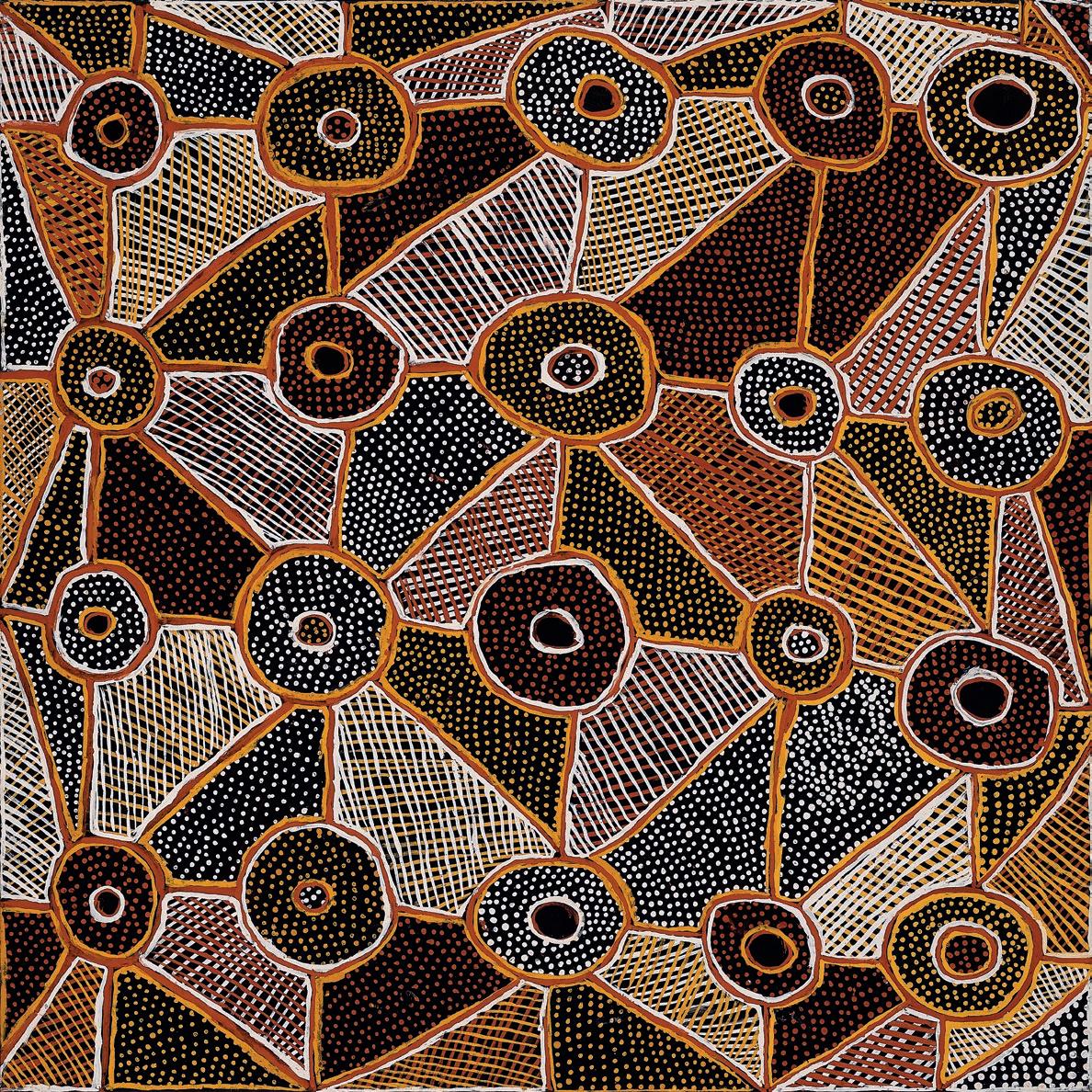

Lots 20 – 32
JOHN MAWURNDJUL born 1952
NGALYOD, RAINBOW SERPENT, 1999 natural earth pigments on eucalyptus bark 153.0 x 90.0 cm (irregular) bears inscription on label verso: artist’s name, language, location and Maningrida Arts and Culture cat. 20321 1999 BP
ESTIMATE: $80,000 – 120,000
Maningrida Arts and Culture, Maningrida, Northern Territory (label attached verso)
Gallery Gabrielle Pizzi, Melbourne (label attached verso) Private collection, Brisbane, acquired from the above in 2002
Kabarlekidyo to Milmilngkan: John Mawurndjul’s Country, Gallery Gabrielle Pizzi, Melbourne, 30 October – 23 November 2002 (illus. on front cover of exhibition invitation)
rarrk – John Mawurndjul, Journey Through Time in Northern Australia , Museum Tinguely, Basel, 21 September 2005 – 29 January
2006; Sprengel Museum, Hanover, 19 February – 5 June 2006
Kaufmann, C., et al., rarrk – John Mawurndjul: Journey Through Time in Northern Australia , Crawford House Publishing Australia, Belair, South Australia, 2005, pp. 129 (illus.), 228
‘My head is full up with ideas.’1
Original and uniquely Australian, the art of John Mawurndjul is the culmination of decades of learning and the fine tuning of his craft over time, resulting in a distinct record of country and an individual style of storytelling subtly contained within his intricate and beautiful paintings on bark.
Since he first began painting in the late 1970s, Mawurndjul has quietly transformed Kuningku bark painting. His early works of figures and creatures in Kuningku mythology evolved into a more metaphysical representation of specific sites, events and landscape that serve as a link between the spiritual and human worlds. However, it is in his renditions of Ngalyod, The Rainbow Serpent that this evolution is most evident. An omnipotent and significant creature in Kuninjku cosmology, Ngalyod is associated with the creation of all sacred sites, djang, in Kuninjku clan lands.
‘I always thought about Ngalyod and how to paint it… In [early] pictures I use dot infill like the old people, but now I have changed, I have my own style, my own ideas, you don’t see dot infill anymore… I went and painted bigger barks… Ngalyod is very powerful and dangerous... I paint her from my thoughts.’ 2
Ngalyod appears as a subject in his early paintings but as Mawurndjul’s knowledge grows through the guidance of his late elder brother Jimmy Njiminjuma and his participation in ritual ceremonies, his work reflects the more transformative power of Ngalyod. His paintings become representative of the destructive potential of this being and ‘many of
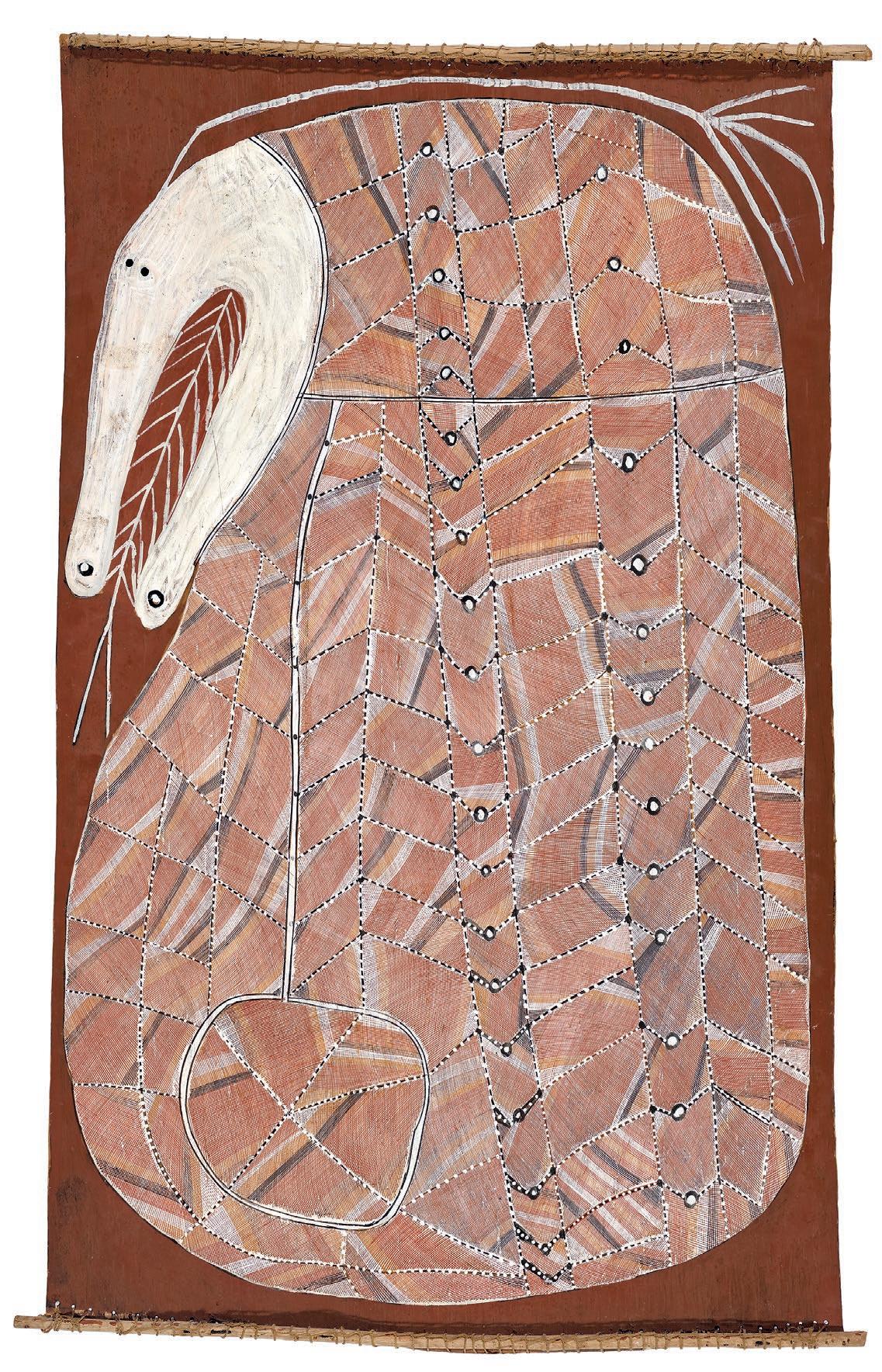
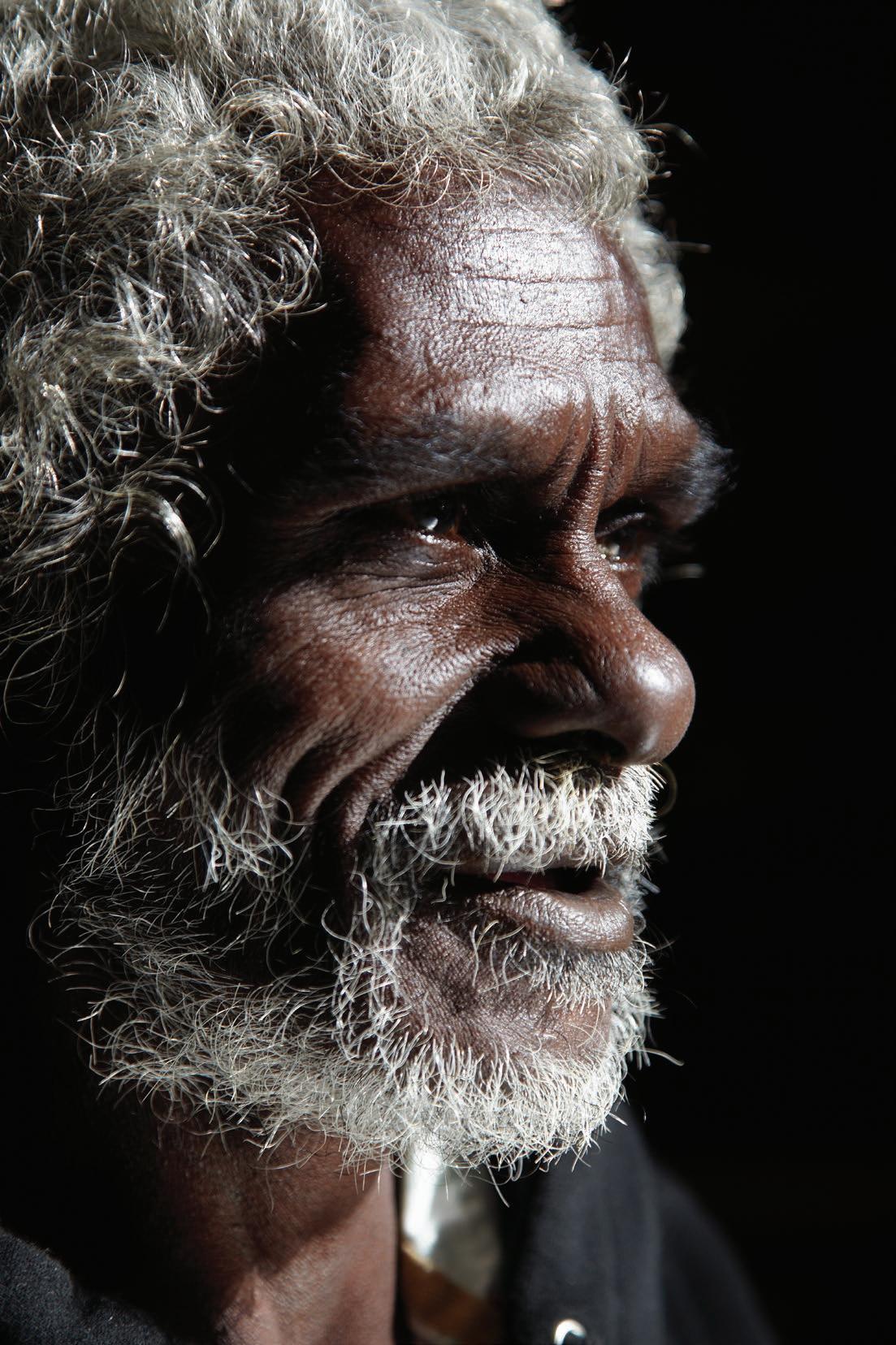 John Mawurndjul
John Mawurndjul
John Mawurndjul
Ngalyod Rainbow Serpent , 2004 natural pigments on eucalyptus bark
148.0 x 63.0 cm
Private Collection
his works, particularly the Ngalyod paintings, act as definitive warnings to family, friends and visitors alike, illustrating the vengeful capacity of beings to punish transgressors or those who do not have ritual authority.’ 3
‘Rainbow Serpents are found in many places in both dua and yirridjdja moiety. They live in the earth under the ground or in bodies of water at places such as Dilebang or Benedjangngarlwend. The white clay in the ground at Kudjarnngal is the faeces of the serpent. Waterlilies at certain places tell us that the Rainbow Serpent lives there. When the wet season storms come, we can see her in the sky (as a Rainbow). She makes the rain. When we the floodwaters of the wet season rise, we say the Rainbow Serpent is making the electrical storms of the monsoon wet season. Rainbow Serpents are dangerous, just like crocodiles, they can kill people and other animals.’4
As Mawurndjul relates above, Ngalyod resides in the waterholes and water courses. Waterlilies growing around their edges may indicate the presence of Naglyod and Kuninjku are careful not damage the lilies or disturb the still bodies of water so not to anger the spirit. The Power of Nagalyod is evident in Ngalyod, Rainbow Serpent , 1999, the profile of the serpent’s head is clearly distinguished in vivid white clay to the top left of the bark, its teeth reduced to a series of chevrons, the head bordered by shimmering fields of ochre rarrk
John Mawurndjul Ngalyod, c.1981 natural pigments on eucalyptus bark

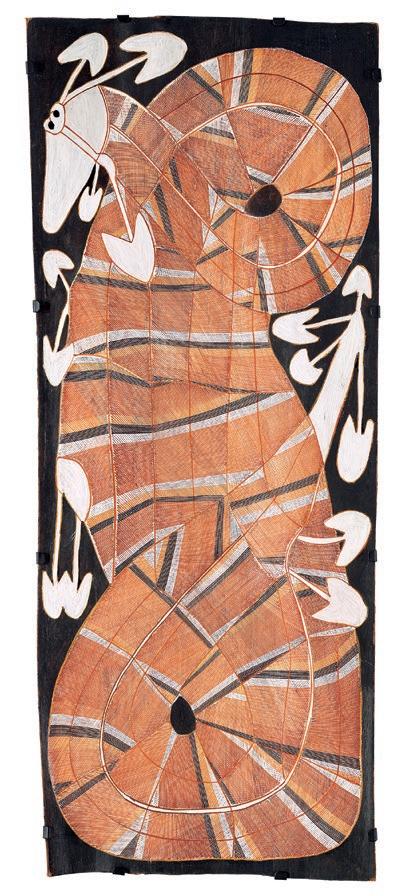
120.0 x 61.5 cm
Berndt Museum Collection, The University of Western Australia, Perth
that spreads out to the corners. Energy radiates from the painting, indicating the presence and potential power within that is both life giving with the rejuvenating rains of the annual monsoon and at the same time threatening with the destructive power of storms.
Mawurndjul’s paintings have pioneered a new interpretation of Kuningku clan sites and djang that inspire the next generation of bark painters. Constantly striving for new ways to interpret his country, Mawurndjul’s innovative use of rarrk to map important locations is evident in the fine lineal clan designs spread across the surface of his paintings, creating shifting patterns of grids that are rendered in fine interlocking lines. As Hetti Perkins writes ‘His works, lovingly crafted and sculpted depictions of flora and fauna, ancestral events, supernatural beings, significant sites and encrypted ceremonial designs are at once country and mnemonic of country.’ 5
CRISPIN GUTTERIDGELIN ONUS (1948 – 1996)
DEEP WATER (MATONG), 1995 synthetic polymer paint on linen
91.0 x 152.0 cm
signed lower right: LIN ONUS bears inscription verso: cat. 039 S011 and cat. 9512 bears inscription on label verso: artist’s name, date, title and medium bears inscription on stretcher bar verso: ‘MATONG’
ESTIMATE: $180,000 – 250,000
Estate of the Artist, Melbourne
Private collection, Melbourne
Deutscher and Hackett, Sydney, 20 September 2017, lot 20 Private collection, Sydney
Bama–Mutjing (Barmah – My Father’s Country), Gallery Gabrielle Pizzi, Melbourne, 12 September – 8 October 1995, cat. 18 (label attached verso)
Barmah Forest , 1994, synthetic polymer paint on linen, 183.0 x 244.0 cm, in the collection of the Australian Heritage Commission, Canberra, illus. in Neale, M., Urban Dingo: The Art and Life of Lin Onus 1948 – 1996, Craftsman House, Sydney, 2000, p. 76
Morumbeeja Pitoa (Floods and Moonlight), 1993, oil on canvas, 182.0 x 182.0 cm, in the collection of Queensland Art Gallery, Brisbane, illus. in Neale, M., Urban Dingo: The Art and Life of Lin Onus 1948 – 1996 , Craftsman House, Sydney, 2000, p. 104
reflected in the mirrored waters. There his uncle Aaron Briggs, also known as ‘the old man of the forest’, would tell Onus about his Koori heritage and the stories of the river.4 It is this spiritual narrative that ebbs and flows through this important body of works, which culminated in the critical example, Barmah Forest , 1994 now in the collection of the Australian Heritage Commission, Canberra and reflects a theme that Onus returned to often in the final period of his life. Deep Water (Matong), 1995, shows the forest during flood, a regular occurrence during high flows of the Murray River and a time of rejuvenation for the Barmah wetlands. Onus captures this sanctuary-like quality of the forest wetlands in his depiction of the still, reflective surface of the waters but it is his inclusion of cross hatched fish viewed through the water that illustrate his idea of (cultural) transparency and the existence of tradition and meaning beneath the surface of everything.
Lin Onus’ depiction of land has been interpreted by art historian Sylvia Kleinert as not only a ‘means of retrieving and rewriting history’, but also vitally important because he responded to the land as a ‘cultural archive’.1 When Onus was asked what school or movement of art he belonged to, he often replied, ’the Bower Bird School. You know the one – picking up bits and pieces, here and there.’ 2 The son of a Scottish mother and a Yorta Yorta man from the Aboriginal mission of Cummerangunja near Echuca, Onus described himself as a selfconfessed cultural mechanic, 3 someone whose art interlaced elements from his European and Aboriginal heritages bringing together the two parts; one Western and representational and the other Aboriginal and spiritual.
The Barmah Forest on the Victorian side of the Murray River is Onus’ ancestral and spiritual home. His father’s county and a place Onus would regularly return to, where he would sit along the banks of the Murray River looking out over the Barmah Forest and its great trees
This stylistic evolution was the result of the relationship he fostered in Arnhem Land with the highly esteemed Aboriginal painter Jack Wunuwun, who became his adoptive father and mentor. Margo Neale notes that from 1986 – 1996, Onus made 16 ‘spiritual pilgrimages’ to Garmedi, 5 resulting in a brilliant personal style that juxtaposed the rarrk clan patterns of Maningrida, learnt from the older artist, with a photorealist style of landscape. This combination created a visual disjuncture, rich in reflections and ambiguities, that acts as a metaphor for the cultural destruction suffered as a result of colonisation, substituting the traditional European panoramic view for one described by his mentor Wunuwun as ‘seeing below the surface’.
It has been over two decades since Lin Onus died tragically and prematurely in Melbourne in October 1996. Onus died before the recognition of his art and activism, both of which clearly exposed the inequality facing indigenous Australians, was honored at a retrospective of his work held at the Queensland Art Gallery in 2000 and touring nationally in 2001.
1. Kleinert, S., ‘Aboriginal Enterprises: negotiating an urban Aboriginality’, Aboriginal History, vol. 34, 2010 accessed online August 2017 http://press-files.anu.edu.au/downloads/press/p170581/html/ch07. xhtml?referer=1272&page=8
2. Neale, M., Urban Dingo - the Art and Life of Lin Onus 1948-1996 , Queensland Art Gallery, Brisbane, 2000, p. 12
3. Onus, L., artist statement, 1990
4. Neale, M., op. cit., pp. 13 – 14
5. ibid., p. 15
CRISPIN GUTTERIDGE

(c.1936 – 2002)
ANGRY BULUKBUN, 1990 synthetic polymer paint on canvas
141.0 x 169.0 cm bears inscription verso: artist’s name, date and Alcaston Gallery cat. AK856
ESTIMATE: $50,000 – 70,000
Painted at Ngukurr, Northern Territory Alcaston Gallery, Melbourne Private collection, Melbourne
EXHIBITED
Mother Country in Mind: The Art of Ginger Riley Munduwalawala , National Gallery of Victoria, Melbourne, 16 July – 22 September 1997, cat. 28 (label attached verso)
Ryan, J., Ginger Riley, National Gallery of Victoria, Melbourne, 1997, cat. 28, p. 69 (illus.)
Gallery. Enjoying tremendous success both locally and abroad over the following sixteen years before his untimely death in 2002, Riley received a plethora of awards including the inaugural National Heritage Commission Aboriginal and Torres Strait Islander Art Award in 1993 and an Australia Council Fellowship in 1997 – 98, and in 1997, was the first living indigenous artist to be honoured with a retrospective at the National Gallery of Victoria, Melbourne.
Distinguished by their daring palette, dynamic energy and strongly flattened forms, Riley’s bold, brilliantly-coloured depictions celebrating the landscape and mythology of his mother’s country are admired among the finest in contemporary Indigenous art. Emerging at a time when barks were the familiar output for his Arnhem Land country and Papunya Tula paintings were considered the norm, his striking interpretations not only challenged, but irrevocably changed, preconceived notions of Indigenous art – thus earning him the moniker ‘the boss of colour’ by artist David Larwill. Notably influential upon such idiom was Riley’s chance encounter during his adolescence with celebrated watercolourist Albert Namatjira, whose non-traditional aesthetic and concept of ‘colour country’ left an indelible impression upon the young artist. Encouraged by ‘…the idea that the colours of the land as seen in his imagination could be captured in art with munanga (white fella) paints’, 2 it was not, however, until three decades later that Riley would have the opportunity to fully explore his talent when the Northern Territory Open College of TAFE established a printmaking workshop in the Ngukurr Aboriginal Community (formerly known as the Roper River Mission). Notwithstanding his mature age of 50, Riley rapidly developed his own highly sophisticated style and distinct iconography and, after initially exhibiting with the other Ngukurrbased painters, soon established an independent career at Alcaston
Significantly exhibited in this ground-breaking retrospective, Angry Bulukbun , 1990 offers a stunning example of Riley’s heroic landscapes inspired by his mother’s country – specifically, the saltwater area extending from the coast of the Gulf of Carpentaria along the Limmen Bight River to the weather-worn rocky outcrops known as the ‘Four Archers.’ Pivotal to the composition is Ngak Ngak, the white-breasted sea eagle depicted in profile who plays the role of sentinel or guardian protecting the country, and on the right, the powerful creator-snake Garimala who is here dramatically transformed into the fierce, firebreathing serpent-dragon named Bulukbun. According to the ancestral dreaming, this mythological Taipan created the Four Archers – an area regarded as ‘…the centre of the earth, where all things start and finish’ 3 – and lives in the waterhole nearby. If elsewhere in Riley’s oeuvre Garimala is depicted as a pair of snakes (a typical convention to denote his travelling) or a rainbow (symbolic of water, the seasons and the life cycle), when portrayed in the guise of Bulukbun, he is invariably angry, as illustrated by the expanding scaly spines on his back and his fiery breath. Indeed, as the artist notes, the more aggressive Bulukbun becomes, the more he raises the spines on his back, while his forked tongue and the deadly flames he expels (or streams of bubbles if he is underwater, as pictured here) are a strong warning to all to keep their distance.4
Like the best of Riley’s achievements, the present embodies magnificently the artist’s powerful vision of his mother’s country as a mythic space – a mindscape whose kaleidoscope of dazzling colours and icons continually evokes wonder and mystery in the viewer with each new encounter.
‘My mother’s country is in my mind.’1

ROVER THOMAS (JOOLAMA)
(c.1926 – 1998)
YELDA, WELL 33 ON THE CANNING STOCK ROUTE, 1989
natural earth pigments and bush gum on canvas
60.0 x 105.0 cm bears inscription verso:
YELDA by Rover Thomas / Mary Macha 1989
ESTIMATE: $80,000 – 120,000
Commissioned by Mary Macha, Perth (Stock number 1889)
Private collection, Melbourne, acquired from the above
Deutscher Fine Art, Melbourne
Private collection, Melbourne, acquired from the above in 2008
Canning Stock Route , 1989, earth pigments and natural binders on canvas, 105.5 x 60.5 cm, in the Holmes à Court Collection, Perth
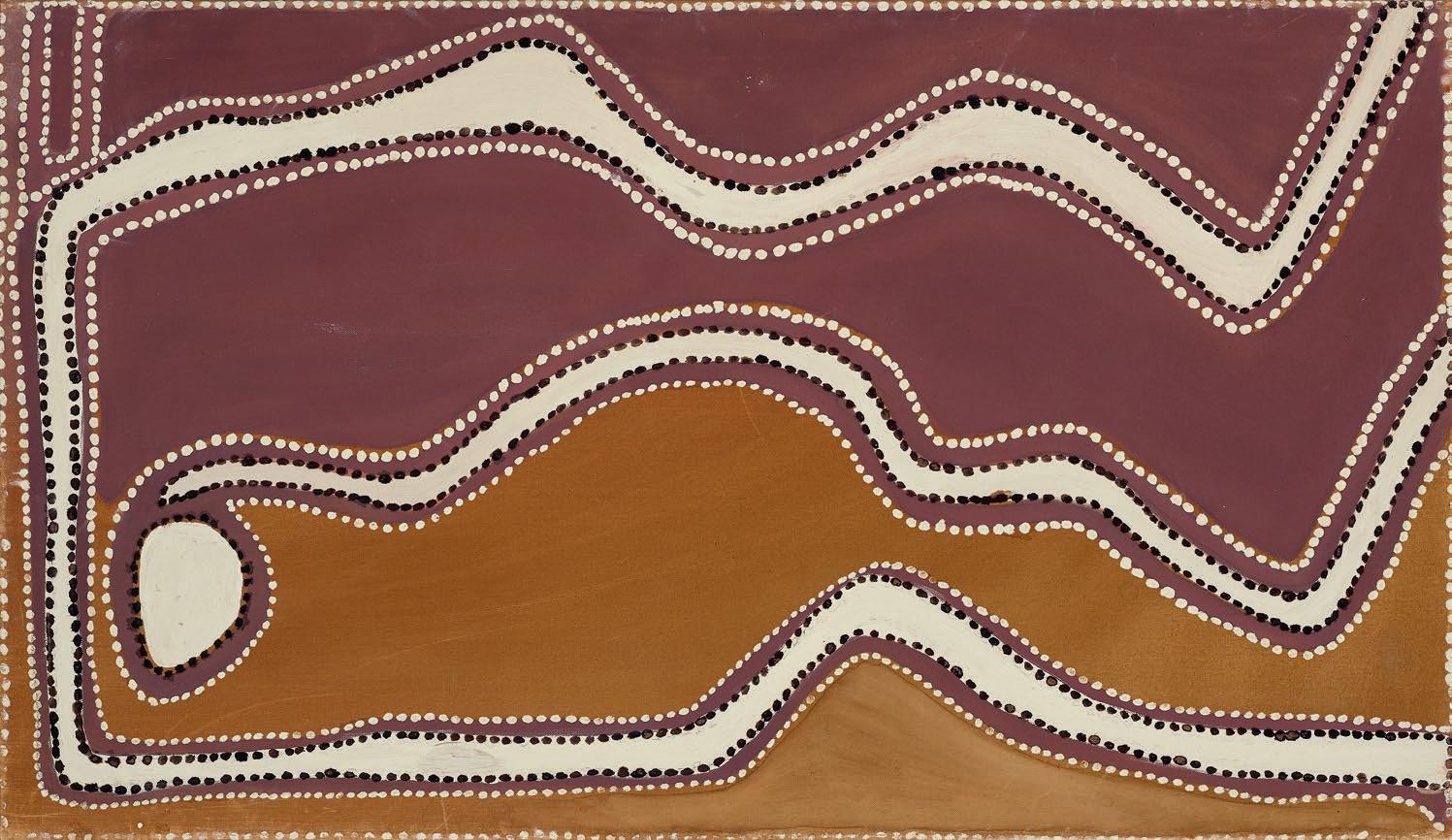
Yelda, Well 33 on the Canning Stock Route , 1989 is an intensely personal and autobiographical painting in that Rover Thomas has depicted the place where he was born and where his parents died and are buried. Yelda (Yalda/Yalta) is a soakage near Kunawarritji, also known as Well 33 on the central section of the Canning Stock Route. Rover Thomas’ mother, Ngakuyipa, belonged to the Kukatja group and his father, Lanikan Thomas, was a Wangkajunka man who reportedly assisted Alfred Canning as a guide to survey the Route in 1907. A severe drought in the late 1930s left Rover Thomas’ family destitute, on the point of starvation: some relatives headed north-east to Bililuna at the head of the Stock Route. Rover, then aged about eleven, remained as his mother died first, then his father. It was at Yelda that in 1942 the renowned stockman Wally Dowling picked up the young lad and took him to join his extended family on Bililuna Station on the south-eastern edge of the Kimberley where he grew up to become a stockman and fencer, and later in life a painter.
The composition of the present work is dominated by lines of white pigment and red ochre outlined in black and white dots set against a typical thinly painted but visually rich ground. The application of paint is characteristic of Rover’s gestural bravura, of his assured and intuitive genius. An annotated diagram of the painting drawn by Mary Macha, Rover Thomas’ agent and friend, indicates that the circular form in the lower left represents the soakage at Yelda (‘Rover’s country’ in the diagram) above which ‘Tank 33’ is located. The horizontal white meandering line emanating from the soak represents a river which is surrounded by a white meander that depicts sand dunes, while the red and yellow ochred ground of the canvas is described as desert country.

Related paintings by Rover Thomas include Canning Stock Route , also painted in 1989, in the Janet Holmes à Court Collection. Featured in the catalogue accompanying the exhibition Yiwarra Kuju: The Canning Stock Route at the National Museum of Australia in 2010, this related work most likely depicts the same soakage at Yelda.
WALLY CARUANA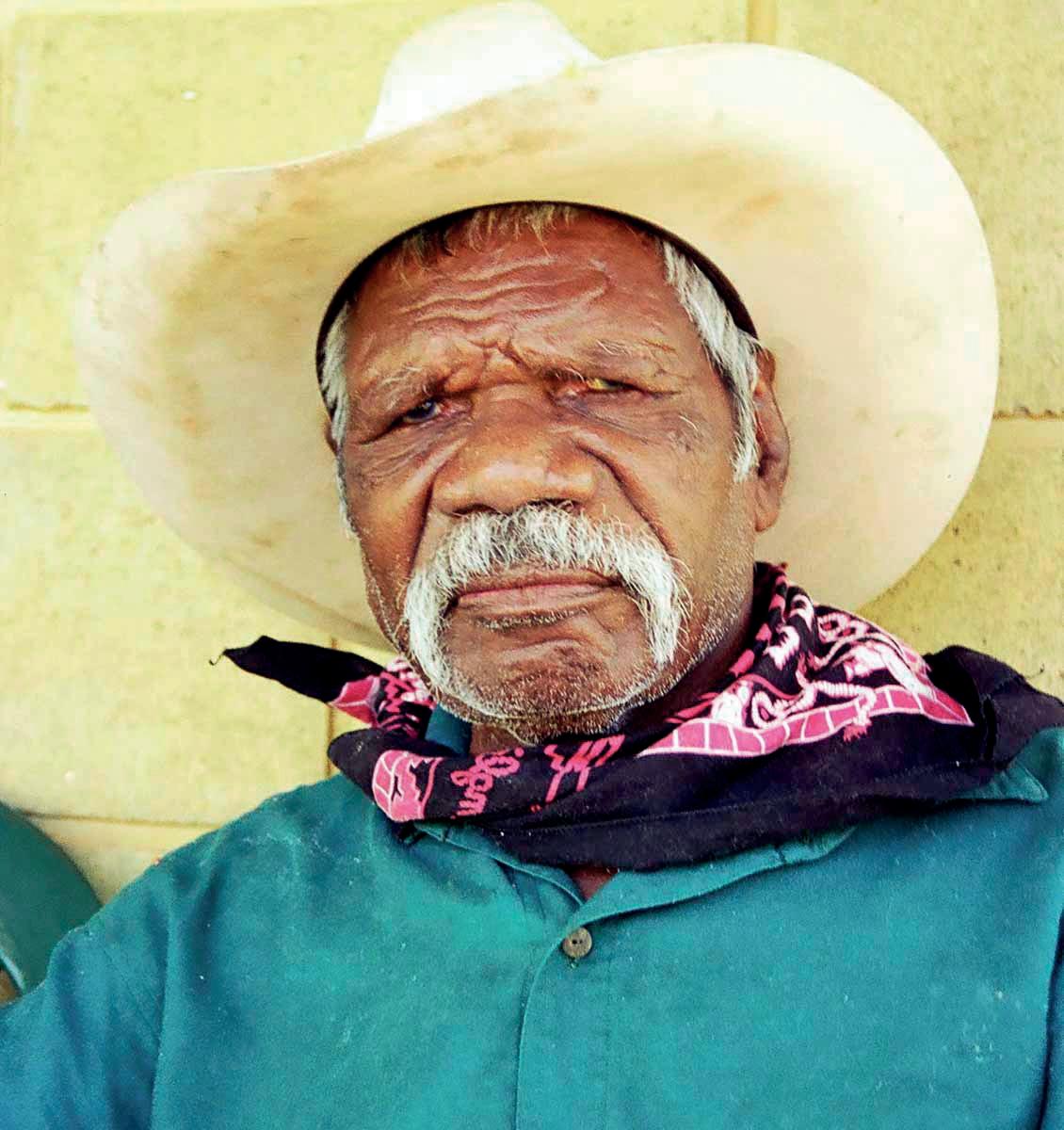
(c.1921 – 1999)
UNTITLED (MEN’S CEREMONY), 1972
synthetic polymer powder paint on composition board
61.0 x 51.0 cm
bears inscription verso: artist’s name, date and Stuart Art Centre cat. 19007
ESTIMATE: $50,000 – 70,000
Stuart Art Centre, Alice Springs, Northern Territory (painting number 7, consignment 19)
Private collection, Queensland
Private collection, Melbourne
Sotheby’s, Melbourne, 24 June 2002, lot 243 (as ‘Untitled’, 1971)
Private collection, Tasmania
Joel Fine Art, Melbourne, 3 June 2008, lot 23
Private collection, Melbourne
Charlie Wartuma Tjungurrayi was one of the founding artists at Papunya in 1971, an important man in traditional ceremony, and according to Dick Kimber ‘a naturally good teacher who enjoyed introducing anyone with a genuine interest to his country, and discussing aspects of Pintupi culture.’1 One of the leading lights in the genesis of the Western Desert painting movement, he was a founding shareholder of Papunya Tula Artists when it was incorporated in November 1972, and is credited with giving the company its name. His experience with Europeans from an early age, meant that he became the spokesman for the Pintupi men in the early days of the painting movement. 2
Painted on composition board, Untitled , 1972 relates to such paintings as Old Man Story, 1972, in the collection of the Museum and Art Gallery of the Northern Territory, Darwin – a work which refers to the travels of the mythological Old Man. 3 As in that work, Untitled is painted on a black ground with a central roundel linked to roundels at the four corners. Ovoid forms, possibly representing sacred boards, are randomly placed in the composition and left undecorated. The work retains a sense of balance and ancestral geometry devoid of any naturalistic imagery.
Wartuma developed a particularly strong friendship with the late Andrew Crocker, manager of Papunya Tula between 1980 and 1981, with whom he travelled to England and Hong Kong in 1982. Crocker subsequently organised a major retrospective of the artist’s work, Charlie Tjaruru Tjungurrayi: A Retrospective 1970 – 1986 , which toured four Australian states in 1987.

Johnson, V., Lives of Papunya Tula Artists , IAD Press, Alice Springs, 2008 p. 57
3. This work is illustrated in Scholes, L. (ed.), Tjungunutja: From having come together, Museum and Art Gallery of the Northern Territory, Darwin, 2017, p. 88 (illus.); and in Croker, A., Charlie Tjararu Tjungurrayi: A Retrospective 1970 – 1986 , Orange Regional Gallery, New South Wales, 1987, pp. 32 – 33 (illus.)
CRISPIN GUTTERIDGE
Outside the Great Painting Room, December 1971
From left: John Tjakamarra, Anatjari No. III Tjakamarra, Yala Yala Gibbs
Tjungurrayi, Shorty Lungkata Tjungurrayi, Old Walter Tjampitjinpa, Uta Uta Tjangala, Charlie Tarawa (fjaruru) Tjungurrayi, Kaapa Tjampitjinpa, Long Jack Phillipus Tjakamarra, Mick Namerari Tjapaltjarri, Johnny Warrangkula
Tjupurrula and Tim Payungka Tjapangati, with Geoffrey Bardon, outside the Great Painting Room, east end of the Town Hall hut. Far right: Lutheran Mission Church with bougainvillea.
Photographer: Fred Friis

(c.1938 – 1992)
UNTITLED (CEREMONY), 1972 synthetic polymer powder paint on composition board
53.5 x 34.0 cm
ESTIMATE: $60,000 – 80,000
Private collection, Tasmania, acquired by the vendor's father at Papunya in the early 1970s
Thence by descent
Private collection, Victoria
Described by Geoffrey Bardon as a man of wistful temperament, ‘slightly built with a particularly calm and gentle manner … very attentive and interested in what was going on but saying nothing.'1, Anatjari Tjakamarra was among the first of the Western Desert men to commence painting at Papunya in the Spring of 1971. Bardon recognised early that he was a painter of particular ability and by 1972, he had provided him with fine sable brushes that complemented his very fine line work. Anatjari occupied a particular place under the curved corrugated iron roof of the Nissen Hut that was the Men’s Painting Room – a place that ‘buzzed with excitement as men of high standing came together to paint a constellation of sites distributed across a broad band of country’ 2 and where Anatjari was able to observe the creative rush, individual styles and varied traditions that flourished in the early months of 1972.
Anatjari and his family were amongst the last of the desert dwellers to be moved off their lands by the ‘Pintupi Patrols’ and relocated to Papunya in mid-1966. These last arrivals became fringe dwellers, resistant to assimilation and consequently, the least acculturated of the Papunya settlement, renowned for their uninterrupted deep cultural links and ritual authority. With the resurgence of interest in traditional culture which occurred in the late 1960s, the new Pintupi arrivals began to
receive recognition as senior figures within the Papunya community. According to historian Dick Kimber, Anatjari was a ritually very correct, conservative man, with a great concern for country and the key influences on his work related to secret-sacred men’s activities.’ 3
The current attributed work, Untitled (Ceremony), 1972, was most likely painted in the first months of 1972, and illustrates a men’s ceremony at an unidentified site in the artist’s homelands, far to the west of Papunya in the Gibson Desert, Western Australia. Painted on a matte black ground, five roundels representing ceremonial sites create a vertical axis through the centre of the painting with men shown seated at these sites. Space is created in the composition by the careful separation of sites and related objects, all of which are depicted in fine detail. Bullroarers and other objects of varying designs are distributed throughout the composition. The painting is balanced with different elements repeated in the work – a characteristic that highlights the influence of Anmatyerre artist, Kaapa Tjampitjinpa. Despite coming from different cultural backgrounds, Anatjari’s art was heavily influenced by Kaapa; as John Kean notes, ‘Anatjari adopted Kaapa’s sparse background and shared his capacity for graphic precision, punctilious attention to detail and both artists express a similar meticulous sensibility.’4 Untitled (Ceremony) relates to other paintings by the artist such as Ceremony, 1972, in the collection of the Museum and Art Gallery of the Northern Territory, Darwin, and Men’s Ceremony, 1971, formerly in the Laverty collection, Sydney
1. Bardon, G., and Bardon, J., Papunya, A Place made after the Story, The Miegunyah Press, Victoria, 2009, p. 71
2. Kean, J., ‘Framing Papunya Painting: Form, Style and Representation, 1971 – 72’ in Scholes, L. (ed.), Tjungunutja: From Having Come Together, Museum and Art Gallery of Northern Territory, Darwin, 2017, p. 192
3. Johnson, V., Lives of the Papunya Tula Artists, Alice Springs, IAD Press, 2008, p. 7
4. Kean, op. cit., p. 179
CRISPIN GUTTERIDGE

(c.1932 – 2002)
LOVE STORY, 1981
synthetic polymer paint on linen
51.0 x 41.5 cm
ESTIMATE: $15,000 – 20,000
Purchased by the artist Tim Johnson, directly from the artist while working for Papunya Tula artists in 1981 Tim and Vivien Johnson collection, Sydney Private collection, Sydney
Dreamings: Art of Aboriginal Australia, Asia Society Galleries, New York; David Smart Gallery, Chicago, 6 October – 31 December 1988; Natural History Museum, Los Angeles; Museum of Victoria, Melbourne, 1988 – 89, cat. 51 (as ‘Man’s Love Story’, label attached verso)
The Painted Dream: Contemporary Aboriginal Paintings from the Tim and Vivien Johnson Collection, Auckland City Art Gallery, Auckland, 28 March – 2 June 1991; Te Whare Taonga o Aotearoa National Art Gallery and Museum, Wellington, 13 July – 8 September 1991
Clifford Possum Tjapaltjarri Retrospective Tour, Art Gallery of South Australia, Adelaide, 31 October 2003 – 26 January 2004; National Gallery of Victoria, Melbourne, 24 March – 3 May 2004; Art Gallery of New South Wales, Sydney, 14 May – 11 July 2004; Queensland Art Gallery, Brisbane, 7 August – 24 October 2004, cat. 30 (label attached verso)
Sutton, P., Dreamings: Art of Aboriginal Australia , The Asia Society Galleries and South Australian Museum in association with Penguin Books Australia Ltd, Melbourne, 1988, fig. 149, cat. 51, pp. 107, 109 (illus.), 224 – 225
Johnson, V., The Painted Dream , Auckland City Art Gallery, Auckland, 1990, p. 23 (illus., as ‘Man’s Love Story’)
Johnson, V., The Art of Clifford Possum Tjapaltjarri , Craftsman House G+B International, Sydney, 1994, cat. 30, pp. 134, 136, 137 (illus.), 240 (illus.)
Man’s Love Story, 1973, synthetic polymer paint and synthetic binders on hardboard, 45.5 x 62.0 cm, private collection
This painting depicts Clifford Possum’s very distinctive Love Story design. A Tjungurrayi man is shown at the site Ngarlu. He has fallen in love with a Napangardi woman of the wrong kinship subsection for marriage to him. Using the spindle on which he spins hair string, he entices the woman to his campsite, ‘talking with his thoughts on the wind.’ The hair string spindle is shown coming from the central roundel. His footprints are depicted on the left of the painting and his hair is blown away in the wind as he is distracted by her approach, shown on the right. In the lower half of the painting a curved line represents some Nungarrayi women who approached and gathered in the darkness around the lovers’ campsite. This mythology and the associated law are taught to post-initiate young men in ceremonies known as ‘Malliera’.
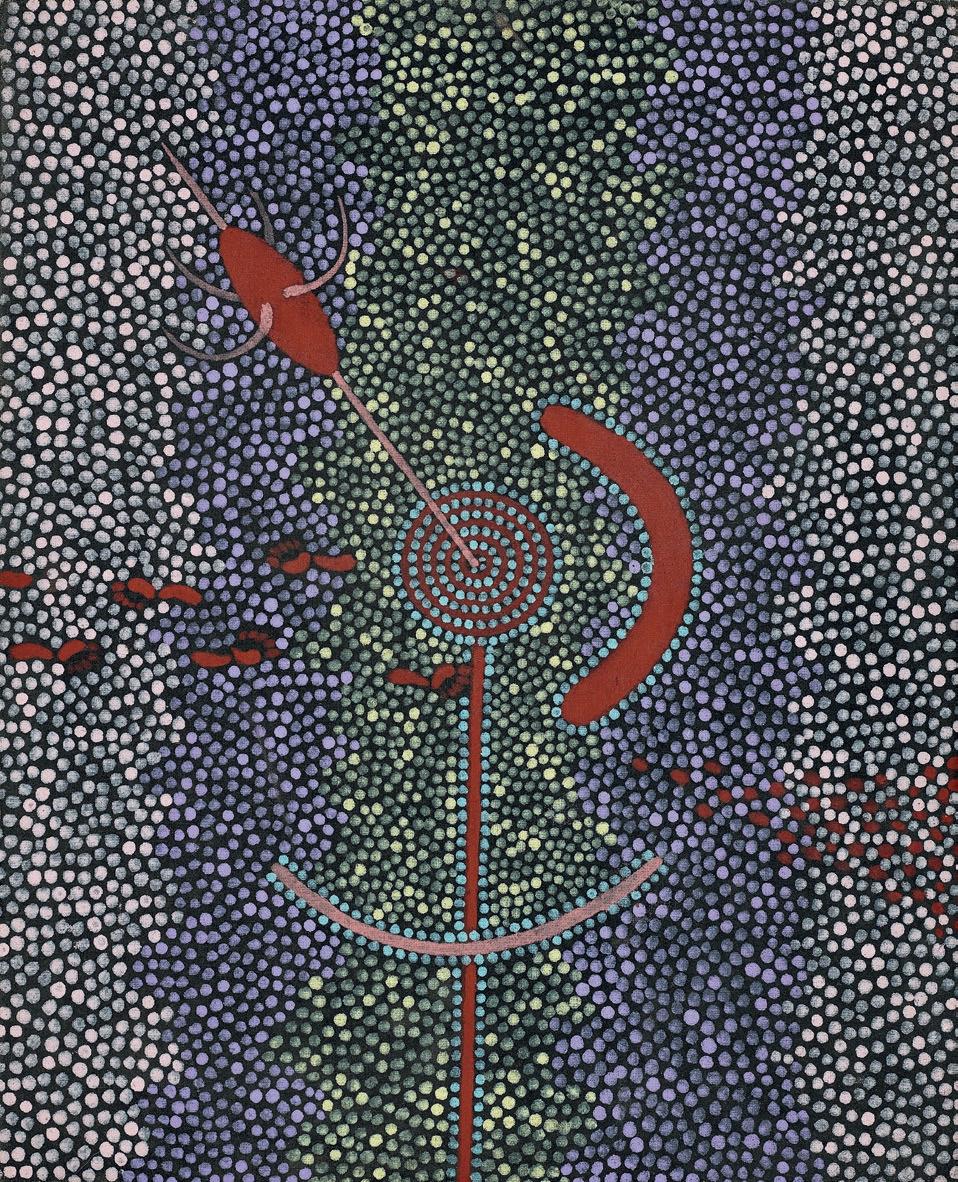
UTA UTA TJANGALA (1920 – 1990)
YUMARINYA, 1985
synthetic polymer paint on linen 139.0 x 121.0 cm bears inscription verso: artist’s name, size and Papunya Tula Artists cat. UU851088
ESTIMATE: $40,000 – 60,000
Papunya Tula Artists, Alice Springs, Northern Territory
Gallery Gabrielle Pizzi, Melbourne Private collection, Melbourne, acquired from the above in 1986
The title of the present painting, ‘Yumarinya’ has the literal meaning of ‘wife’s-mother’s-place’ 2, and is connected to the mythological story of Yina, the mythological Old Man. In this case, the Old Man travelled west from Henty Hills to Yumari, to engage in an illicit liaison with his ancestral mother-in-law.
There are recurring themes in the art of Uta Uta Tjangala and the best known of these relate to Yumari, a rock hole and important ancestral site in his mother’s country. A sacred site located in between the communities of Walungurru (Kintore) and Kiwirrkura across the border in Western Australia, Yumari had personal significance for the artist. He was the custodian of this site which is linked to his conception place at Ngurrapalangu through the story of Yina, the ancestral travelling Old Man. His father is buried in the area, and it is a place he regarded as home in the sense of the Aboriginal connection to country – Yumari was integral to Tjangala’s personal identity.1
One of the original band of artists that in 1971 initiated the revolution in Australian Aboriginal desert painting at the community of Papunya, Uta Uta Tjangala was a member of the Pintupi, the last group to be brought into the government run settlement. A man of high ritual status with deep ancestral knowledge, he created some of the great masterpieces of the modern Western Desert painting movement, from his first paintings on composition board to later monumental canvases produced in the 1980s. Two early major canvas works relate to this site, the first of which, Yumari , 1981, was exhibited at the XVII Biennale de São Paulo. This painting was also shown alongside Yumari , 1983, in Dreamings: The Art of Aboriginal Australia , the major exhibition that toured through the United States and Australia in 1988 – 89. Another painting related to the site is Old Man’s Dreaming , 1983, now in the collection of the Art Gallery of South Australia, Adelaide, which was included in the exhibition Australia at the Royal Academy, London in 2013.
1. Myers, F.R., Painting Culture: The Making of an Aboriginal High Art , Duke University Press, Durham and London, 2002, pp. 112 – 3
2. Ibid.
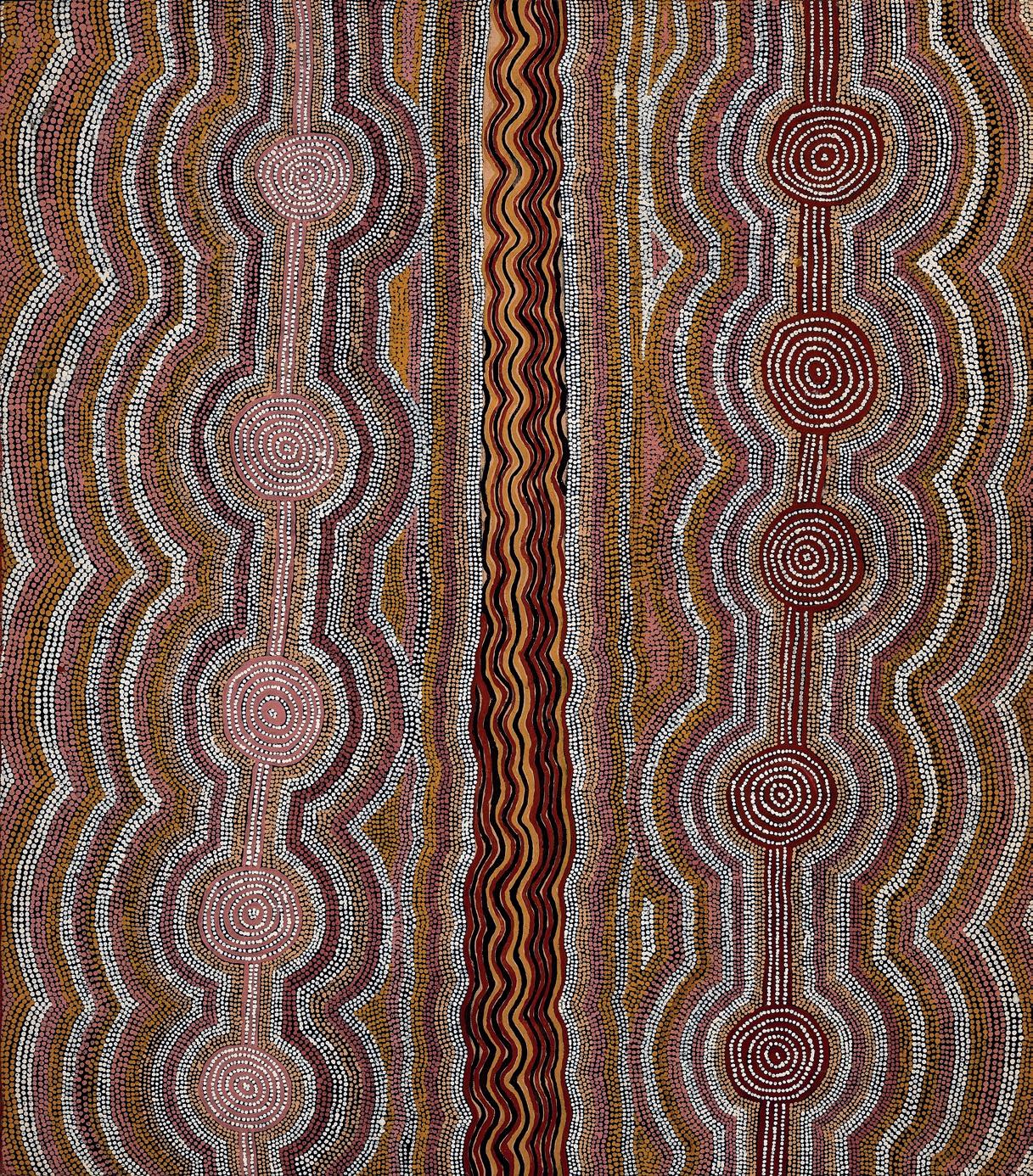
GEORGE WARD TJUNGURRAYI
born c.1945
UNTITLED, 2003
synthetic polymer paint on linen
151.0 x 182.0 cm bears inscription verso: artist’s name, size, and Papunya Tula Artists cat. GW0302221
ESTIMATE: $20,000 – 30,000
Papunya Tula Artists, Alice Springs, Northern Territory
Alcaston Gallery, Melbourne (cat. AK10862) Private collection, Melbourne
A highly respected artist, in 2004 George Ward Tjungurrayi received the prestigious Wynne prize for landscape painting at the Art Gallery of New South Wales. At the time he was only the second Indigenous art to be awarded the honour. Born in the desert in Western Australia, he is the half-brother of Yala Yala Gibbs Tjungurrayi and Willy Tjungurrayi. Relocated with his family to the Papunya settlement by the Northern Territory Welfare Branch in the 1960s, Ward worked as a butcher and fencer. Moving in the 1980s to Kiwirrkura, deep in Pintupi territory, inspired him to begin painting. His first exhibition was held in 1990, and his work has since been shown in group and solo shows throughout Australia and around the world.
This arresting work is a fine example of the artist’s multi layered compositions. Most likely depicting the site of Karrkurritinytja (Lake MacDonald), the painting tells of the travels of the mythological ancestors known as the Tingari, who moved across the landscape performing rituals and creating particular sites.
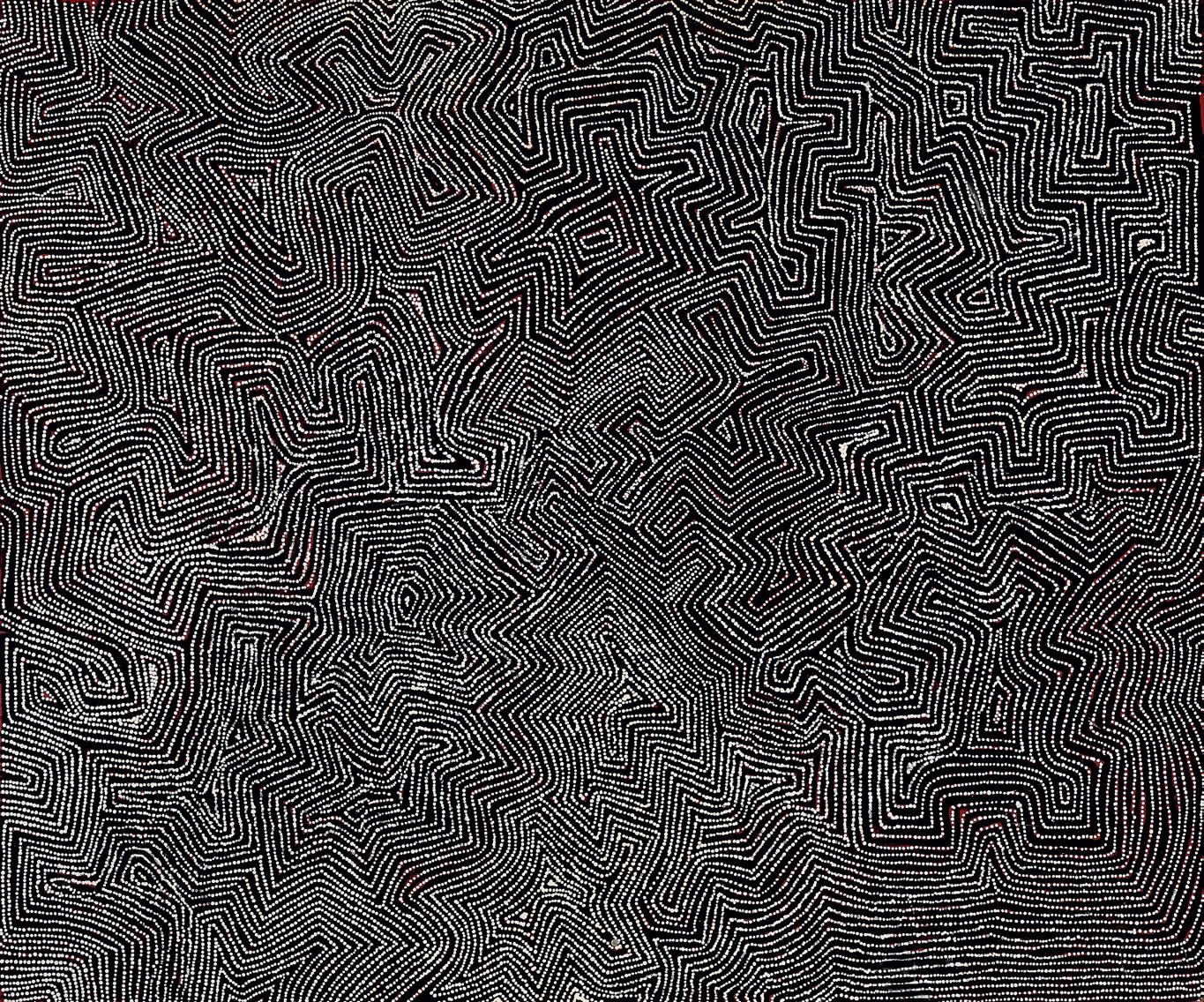
(c.1924 – 2015)
THUNDI, 2010 synthetic polymer paint on linen 197.5 x 100.5 cm
bears inscription verso: artist’s name, title, medium, Mornington Island Arts and Crafts cat. 6174–L–SG–1010 and Alcaston Gallery cat. AK18693
ESTIMATE: $15,000 – 20,000
Mornington Island Arts and Crafts, Mornington Island, Queensland (stamped verso)
Alcaston Gallery, Melbourne
Private collection, Melbourne, acquired from the above in 2014
Sally Gabori, Alcaston Gallery, Melbourne, 18 March – 16 April 2014
This work is accompanied by certificates of authenticity from Mornington Island Arts and Crafts and Alcaston Gallery which state:
‘This is my father’s country on Bentinck Island. This is where he was born next to the big river.’

(c.1910 – 1996)
AWELYE, 1994
synthetic polymer paint on linen 150.0 x 90.5 cm bears inscription verso: artist’s name and Delmore Gallery cat. 94K39
ESTIMATE: $50,000 – 70,000
Commissioned by Delmore Gallery, via Alice Springs, Northern Territory
Phillip Bacon Galleries, Brisbane (label attached verso) Private collection, Brisbane, acquired from the above in 1996
Renowned for her colourful and vibrant paintings, Emily Kngwarreye chronicled on canvas the ever-changing desert country of her homeland Alhalkere . Located at the western edge of Utopia this triangular shaped country was where Emily was born and where she lived in the traditional ways of the eastern Anmatyerre, following a way of life that had continued unchanged from long before European presence. Her mark making recorded the seasonal variations, sometime subtle, often dramatic, of the harsh desert environment and the explosion of growth that occurred after rain. Referred to by Emily as the ‘green time’1, the desert would come to life, wildflowers carpeting the red earth and plants and grasses flourishing, supplying the women with seeds, tubers and fruit.
Through her use of pattern and colour, Kngwarreye had seemingly endless variations to call upon in the depiction of her country. Her paintings would often dissolve into fields of layered colour achieved through a build-up of dots upon dots as in Awelye 1994. Here, Kngwarreye bears witness though her painting, to that abundance that carpets the earth after rain and provides a basis for understanding the reverence and enthusiastic anticipation of the woman's ceremonial activities called "Awelye" that celebrate the hardiness and fertility of their bush tucker and food sources, and in turn, their own resilience.

(c.1910 – 1996)
ALALGURA LANDSCAPE II, 1994
synthetic polymer paint on linen
150.0 x 91.0 cm
bears inscription verso: artist’s name and Delmore Gallery cat. 94A047
ESTIMATE: $50,000 – 70,000
Delmore Gallery, Alice Springs, Northern Territory
The Holt Collection, Alice Springs, Northern Territory
Private collection, Melbourne
EXHIBITED
Emily Kame Kngwarreye: Werke Australischer Privatsammlungen , Kunsthaus Zug, Zug, Switzerland, 1 October 2019 – 12 January 2020
Isaacs, J., Smith, T., Ryan, J., Holt, D., and Holt, J., Emily Kngwarreye Paintings , Craftsman House, Sydney, 1998, pl. 44, pp. 114 – 115 (illus.), 197
This work is accompanied by a certificate of authenticity from Delmore Gallery that states:
‘Painted in mid–summer of 1994, “Alalgura Landscape II ” is a direct reference to Emily Kngwarreye’s vast encompassing grasslands lying patiently “dry–harnessed” in the hope that summer will bring rain. She has captured the tonal colour of hayed–out water catchments, whilst ceremonies are in process accompanied by an over–arching serious need for rain to replenish all life forms. Here we see broad–brushed lines that float amongst dried flower heads and fragile grass remnants on bare soil, creating a wishful meditative expression of hope.
Sourced from her strong instinctive and measured awareness of the condition of food sources at such times, whilst drawing on past ceremonial body–painting memories, being permanently in tune with, and part of country, Emily is responding to the dry season as she paints her country on this special canvas.
This work was held in the Delmore Collection because it presented with bold spared body vertical lines within the work, thus referencing her later step into exceptional lineal works of vigour, abandon, and playful monotonal and coloured abstraction in 1995 and 1996. It is a work in which Emily has avoided her frequent use of various red and yellow colours, and painting with a more transparent and light–handed touch at the time – the dry season must have been influencing her.’

PRINCE OF WALES (MIDPUL) (c.1935 – 2002)
BODY MARKS, 2000 synthetic polymer paint on linen
137.0 x 80.0 cm bears inscription verso: Karen Brown Gallery cat. KB0892
ESTIMATE: $14,000 – 18,000
Commissioned by Karen Brown Gallery, Darwin Aboriginal Pacific Arts, Sydney Private collection, New South Wales, acquired from the above in 2000 Deutscher and Hackett, Melbourne, 29 November 2017, lot 48 Private collection, Melbourne
and intermittent bars, as if to read like sheet music for an improvised symphony. Prince's uninhibited use of colour belies the origins of these designs which were passed on by his ancestors as marks on the bodies of ceremonial participants.'1
Renowned for his unique interpretations of body decorations and markings used in the ceremonial activities of the Larrakia people, Prince of Wales (Midpul) drew inspiration from these traditional activities for the imagery in his contemporary paintings. Born Midpul at Kah'lin (Cullen) Beach, Darwin in 1935, Prince grew up at Belyuen (Dellisaville), a small community on the far side of Darwin Harbour. He was the son of acknowledged Larrakia leader and traditional land-owner Imabul (Old King George) and known as Prince of Wales. A custodian and leader of Larrakia ceremonies and dances, a leading didgeridoo player and ceremonial body painter for much of his life, Prince started painting, initially on discarded pieces of wood and cardboard in 1995, and participated in his first exhibition the following year.
'In taking up painting in 1995, Prince found a medium through which he could retain the essence of his active ceremonial life. His paintings have a musicality imparted by the lively staccato effect of the dots
Executed on a white ground, Body Marks , 2000 reinforces the ceremonial body decorations that Prince of Wales wanted to preserve in his painting. Alternate white and black dots of the body marks is contained within a bronze-coloured frame that together creates an rhythmic energy within the work. These markings evoke the patterns Prince would have originally painted onto the bodies of his clansmen prior to a ceremonial dance, but here they are transferred as a permanent record for posterity. The work was painted in the final years of his life and as Perkins notes ‘In his last years, Prince ‘upped the ante’, scaling up his Body Marks paintings to assert his cultural authority as a Larrakia elder’ 2 'These paintings ... I paint them on bodies ... young people and old ... ceremony for singing ... dance ... I make the marks'. 3 His first solo show was in Melbourne in 1997 at Gallery Gabrielle Pizzi, and in 2001, he won the painting sections of the Telstra National Aboriginal and Torres Strait Islander Art Award. Prince delighted in the whole process of painting, creating modern minimalist art works characterised by simple geometric forms floating above a sparse ground with dotting emphasising the forms.
CRISPIN GUTTERIDGE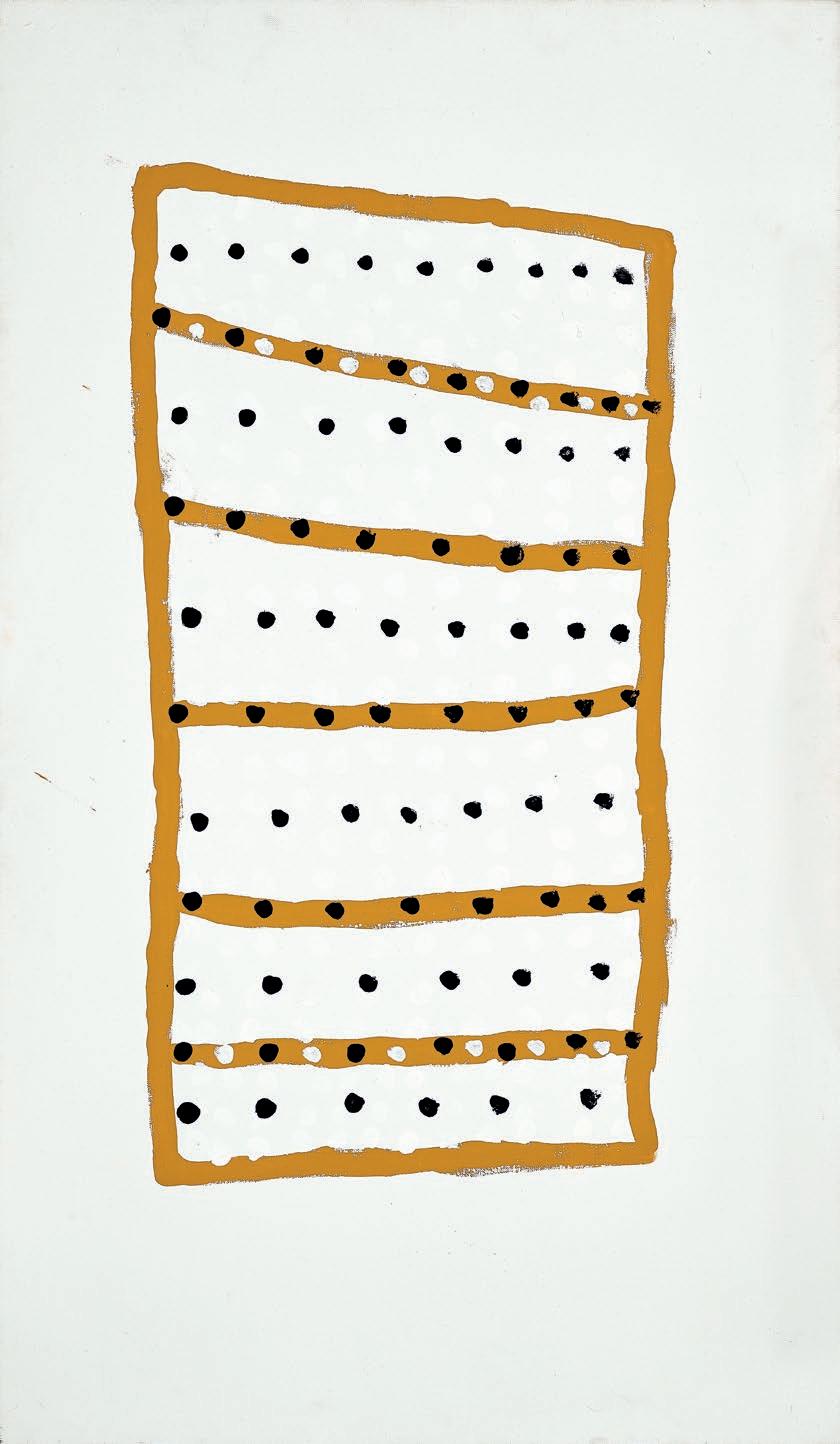
Lots 33 – 41

(c.1945 – 2021)
4 BUFFALOS 4 WENDYS, 2008 natural earth pigments on eucalyptus bark 114.0 x 62.0 cm (irregular) bears inscription verso: artist’s name and Buku–Larrŋgay Mulka cat. 3410P and 0308YIR bears inscription on Buku–Larrŋgay Mulka label attached verso: artist’s name, title, date, medium and size

ESTIMATE: $6,000 – 8,000
Buku–Larrŋgay Mulka Centre, Yirrkala, Northern Territory Roslyn Oxley9 Gallery, Sydney (label attached verso)
The Laverty Collection, Sydney, acquired from the above in October 2008
Nyapanyapa Yunupi ŋ u: Once Upon a Time , Roslyn Oxley9 Gallery, Sydney, 18 September – 11 October 2008
The Moment Eternal: Nyapanyapa Yunupi ŋ u, Museum and Art Gallery of Northern Territory, Darwin, 25 April – 25 October 2020
Scholes, L., et. al., The Moment Eternal: Nyapanyapa Yunupi ŋ u, Museum and Art Gallery of Northern Territory, Darwin, 2020, pp. 11 (illus.), 147
This work is accompanied by a certificate of authenticity from Buku–Larrŋgay Mulka Centre which states in part:
‘But once prompted to treat the story of her almost fatal goring by a Buffalo in the seventies Nyapanyapa threw these conventions over and unleashed a unique set of personal narrative paintings revolving around her own experiences. This subjective, individualistic and linear narrative construction was totally out of step with all previous Yolngu art. The first of these was so surprising it was entered in the 2008 Telstra NATSIAA Award. To bolster the chances of preselection an explanatory video was produced by the newly founded digital archive and studio attached to Buku–Larrŋgay Mulka Centre, The Mulka Project. As it happened the video was completed after the bark had been accepted but the entry was varied to include the bark and video as a 3D installation. Another first!
In the midst of this evolving story a visit from Roslyn Oxley planted the seed of a potential Nyapanyapa exhibition and throughout the first half of 2008 Nyapanyapa often accompanied by her sister Barrupu painted a succession of almost twenty narrative barks in the courtyard of Buku–Larrŋgay Mulka Centre. Her labours so regular they were only interrupted by ceremony. This bark shows the incident in repetitive form. During her travel to Darwin to collect her Award after this work was completed, she was awoken by a dream of the Buffalo’s red eyes staring at her. This work has a dreamlike quality, and the series was nicknamed ‘Wendy in Wonderland’ by irreverent art centre staff. The video outlining the story of this incident is included on the DVD “Nhama” released at Garma 2008.’
JOHN MAWURNDJUL born 1952
MARDAYIN AT MANKARRARD, 2004 natural earth pigments on eucalyptus tetrodonta bark 206.0 x 74.0 cm (irregular) bears inscription on label verso: artist’s name, subject, medium, size, language group and Maningrida Arts and Culture cat. 1982–04
ESTIMATE: $40,000 – 60,000
Maningrida Arts and Culture, Maningrida, Northern Territory (label attached verso) Annandale Galleries, Sydney
The Laverty Collection, Sydney, acquired from the above in October 2004
EXHIBITED
John Mawurndjul, New paintings, bark paintings & ceremonial poles from Maningrida, Arnhem Land, Annandale Galleries, Sydney, 27 September – 30 October 2004 (illus. in exhibition catalogue, p. 11 and illus. on front cover of exhibition invitation)
John Mawurndjul: I am the Old and the New, Museum of Contemporary Art, Sydney, 6 July – 23 September 2018; Art Gallery of South Australia, Adelaide, 26 October 2018 – 28 January 2019
Beyond Sacred: Australian Aboriginal Art: The Collection of Colin and Elizabeth Laverty, Hardie Grant Books, Melbourne, 2008, pp. 277 (illus.), 341
Beyond Sacred: Australian Aboriginal Art: The Collection of Colin and Elizabeth Laverty, edition II, Kleimeyer Industries Pty Ltd, Melbourne, 2011, pp. 318 (illus.), 391
Altman, J., et al., John Mawurndjul: I am the Old and the New, Museum of Contemporary Art, Sydney and Art Gallery of South Australia, Adelaide, 2018, pp. 110 (illus.), 378
This work is accompanied by a certificate of authenticity attached verso from Maningrida Arts and Culture which states:
‘This work by the artist concerns a major patrimoiety ceremony of a secret and sacred nature called ‘Mardayin’. Much of the meaning of the iconography in the painting is not in the domain of public knowledge and so it cannot be explained in detail here. The painting refers to a site, Mankarrard, which is a billabong in Dangkorlo clan estate in the Mann River region.’
Mankarrard is associated with the site of Kakodbebuldi, ‘a yirridjdja moiety place of the Darnkolo clan. There is the billabong at Kakodbebuldi with the dangarrk lights from the Mardayin ceremony and where they gather the Trophis scandens vine for making conical fish traps.’1

(c.1924 – 2015)
DIBIRDIBI COUNTRY, 2009 synthetic polymer paint on linen
198.0 x 102.5 cm
bears inscription verso: artist’s name, title, medium and Mornington Island Arts and Crafts cat. 4302–L–SG–0509
ESTIMATE: $18,000 – 25,000
Mornington Island Arts and Crafts, Mornington Island, Queensland
Raft Artspace, Darwin
The Laverty Collection, Sydney, acquired from the above in September 2009
EXHIBITED
Sally Gabori , Raft Artspace, Darwin, in partnership with Bentick Arts, 13 August - 5 September 2009

PADDY NYUNKUNY BEDFORD (c.1922 – 2007)
UNTITLED, 2004 gouache on crescent board 51.0 x 76.0 cm bears inscription verso: Jirrawun Arts cat. PB WB 2004–186
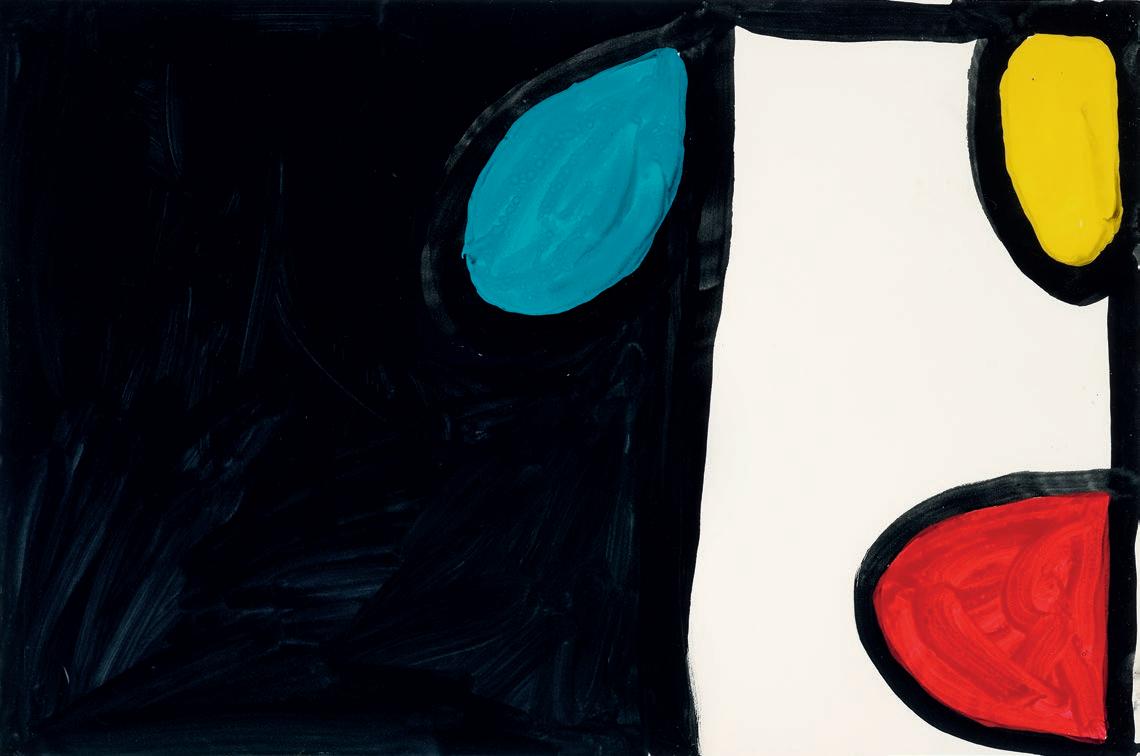
ESTIMATE: $8,000 – 12,000
36 PROVENANCE
Jirrawun Arts, Kununurra, Western Australia
The Laverty Collection, Sydney, acquired from the above in April 2004
EXHIBITED
Talking About Abstraction, Ivan Dougherty Gallery, Sydney, 27 May – 3 July 2004
LITERATURE
Storer, R., Paddy Bedford, Museum of Contemporary Art, Sydney, 2006, p. 177 (illus.)
(c.1922 – 2007)
UNTITLED, 2004
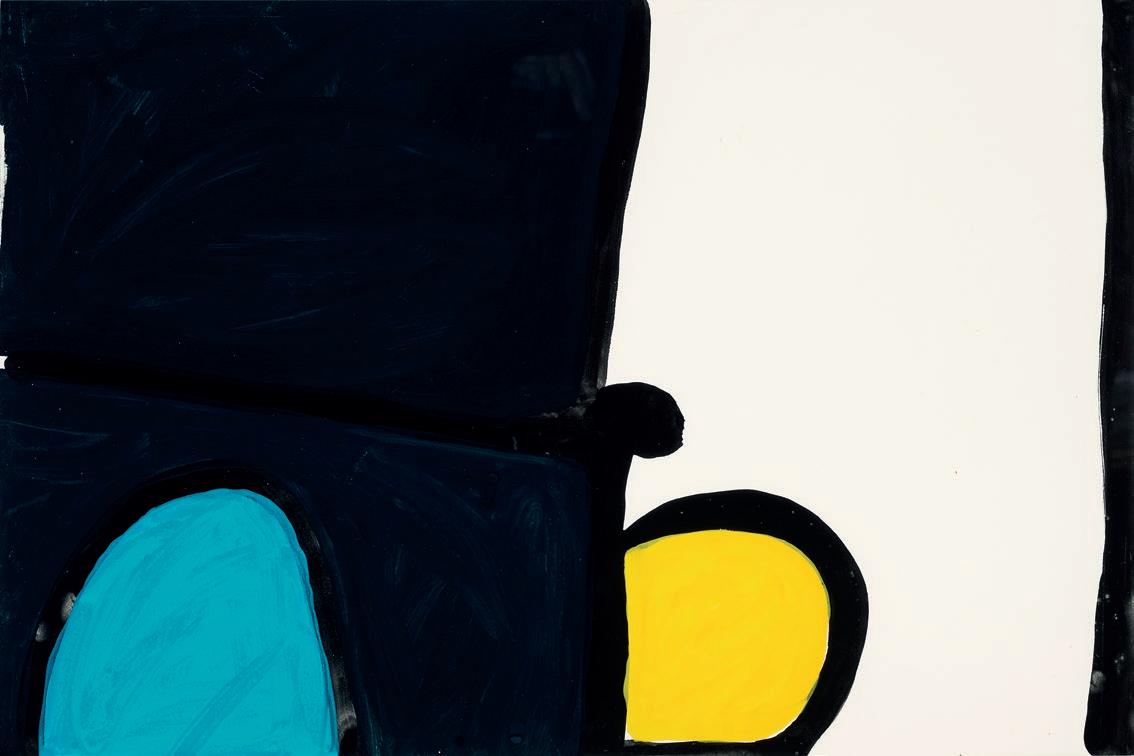
gouache on crescent board 51.0 x 76.0 cm bears inscription verso: Jirrawun Arts cat. PB–WB–3–2004–188
ESTIMATE: $8,000 – 12,000
Jirrawun Arts, Kununurra, Western Australia
The Laverty Collection, Sydney, acquired from the above in April 2004
Paddy Bedford , Museum of Contemporary Art Australia, Sydney, 6 December 2006 – 15 April 2007, then touring Art Gallery of Western Australia, Perth, 12 May – 22 July 2007; Bendigo Art Gallery, Victoria, 11 August – 16 September 2007; University Art Museum, University of Queensland, Brisbane, 16 November 2007 – 1 March 2008
Storer, R ., Paddy Bedford, Museum of Contemporary Art, Sydney, 2006, p. 177 (illus.)
Beyond Sacred: Australian Aboriginal Art: The Collection of Colin and Elizabeth Laverty, edition II, Kleimeyer Industries Pty Ltd, Melbourne, 2011, p. 249 (illus.)
RAMMEY RAMSEY born c.1935
WARLAWOON COUNTRY, 2007
ochres and pigments with synthetic binder on custom board 80.0 x 100.0 cm
signed with initials verso: RR bears inscription verso: Jirrawun Arts cat. RR II 2007 120
ESTIMATE: $5,000 – 7,000
38 PROVENANCE
Jirrawun Arts, Wyndham, Western Australia
The Laverty Collection, Sydney, acquired from the above in December 2007
EXHIBITED
Paintings from Remote Communities: Indigenous Australian Art from the Laverty Collection, Sydney, Newcastle Region Art Gallery, Newcastle, 5 July – 31 August 2008
Heart and Soul: the Laverty Collection, Sydney, AAMU, Utrecht, The Netherlands, 20 January – 10 June 2012
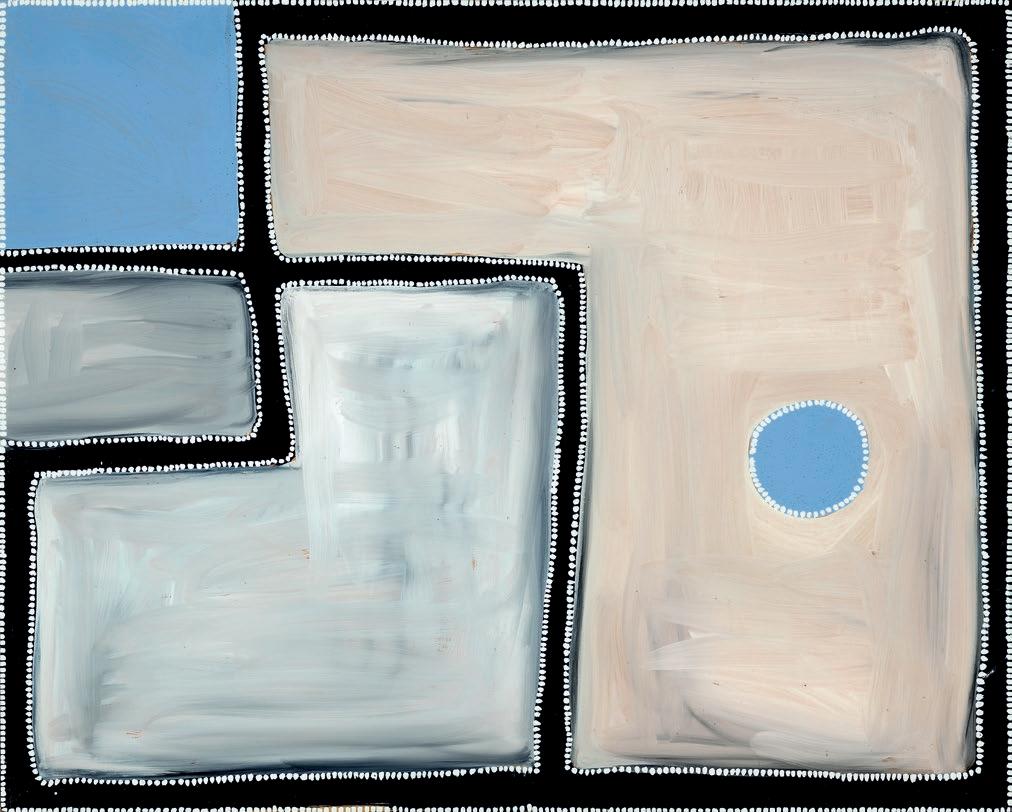
LITERATURE
Beyond Sacred: Australian Aboriginal Art: The Collection of Colin and Elizabeth Laverty, edition II, Kleimeyer Industries Pty Ltd, Melbourne, 2011, pp. 259 (illus.), 394
RAMMEY RAMSEY born c.1935 WARLAWOON COUNTRY, 2008 ochres and pigments with synthetic binder on custom board
80.0 x 100.0 cm signed with initials verso: RR bears inscription verso: artist’s name and Jirrawun Arts cat. RR 2008 04 175 CB
ESTIMATE: $5,000 – 7,000
Jirrawun Arts, Kununurra, Western Australia
Raft Artspace, Darwin
The Laverty Collection, Sydney acquired from the above in August 2008
Jirrawun Colour. Rammey Ramsey & Freddie Timms , Raft Artspace, Darwin, in partnership with Jirrawun Arts, 16 August - 6 September 2008
39 This work is accompanied by a certificate of authenticity from Jirrawun Arts which states:

‘This is Warlawoon country, my country, that I painted here. When the strong wind comes blowing from the east it throws dust everywhere. The dust floats when the wind blows from the east. People used to walk along in the hot sun long ago. When they had been walking in the hot sun, never mind, they would bathe in the water and start off again in the cool time of the day.
It is a place for the rainbow snake, the dangerous one. In olden days just anyone could not go there. In early days if strange people went there the people who belonged there had to perform a welcoming ceremony, putting water from the country on them (the strangers). Lots of people would come to dance Joonba style song and dance. Then they would split up and leave. Those two (my parents) used to go around there. They lived there.'
TWO MEN DREAMING, 1991 synthetic polymer paint on canvas 150.0 x 75.0 cm bears inscription verso: artist’s name, size and Warlayirti Artists cat. 585/91
ESTIMATE: $15,000 – 20,000
Warlayirti Artists, Balgo Hills, Western Australia Kimberley Art, Melbourne The Laverty Collection, Sydney, acquired from the above in April 1997
EXHIBITED
Recent Works from Balgo Hills, Kimberley Art, Melbourne, 7 – 21 August 1995, cat. 2
Beyond Sacred: Australian Aboriginal Art: The Collection of Colin and Elizabeth Laverty, edition II, Kleimeyer Industries Pty Ltd, Melbourne, 2011, pp. 153 (illus.), 388

(c.1936 – 2002)
I. CREATION – FOUR ARCHERS WITH NGAK NGAK, GARIMALA AND ANT HILLS, 1993
II. WAWALU AT THE FOUR ARCHERS WITH SACRED SHARK LIVER TREE, 1993
III. NGAK NGAK ACTING AS SENTINEL IN LIMMEN BIGHT COUNTRY, 1993
IV. ANGRY BULUKBUN IN LIMMEN BIGHT COUNTRY, 1993
V. WAWALU WITH ANCESTORS AT THE FOUR ARCHERS, 1993
VI. LIMMEN BIGHT COUNTRY BEFORE THE WET, 1993 synthetic polymer paint on craft paper 56.0 x 56.0 cm (each) each signed lower centre: GINGER . RILEY each inscribed with titles on typed labels verso
ESTIMATE: $25,000 – 35,000 (6)
Painted in the Ngukurr region of South–East Arnhem land in 1993 Alcaston Gallery, Melbourne
The Laverty Collection, Sydney, acquired from the above in September 1993
A century of collecting, 1901 – 2001: celebrating the Centenary of Federation by showcasing works from private collections, Ivan Dougherty Gallery, Sydney, 29 March – 28 April 2001 (IV)
Heart and Soul: the Laverty Collection, Sydney, AAMU, Utrecht, The Netherlands, 20 January – 10 June 2012 (I, II, III, IV, V, VI)
Laverty, C., Diversity and Strength: Contemporary Australian Aboriginal Art – A Private Collection, Arts of Asia, Hong Kong, November – December 2013, cat. 31 (illus. front cover and p. 93 (VI))
Beyond Sacred: Australian Aboriginal Art: The Collection of Colin and Elizabeth Laverty, edition II, Kleimeyer Industries
Pty Ltd, Melbourne, 2011, pp. 358 – 361 (illus.), 390
‘Expressieve kracht’, Kunst & Cultuur magazine , The Netherlands, no. 1, March 2012, p. 24 (illus.) (III)
Pulsating with energy and enlivened by Riley’s daring use of colour, the suite of six paintings offered here encapsulate a sequence of events inspired by the artist’s mother country – the coastal saltwater area in south-east Arnhem Land which extends from the Gulf of Carpentaria along the Limmen Bight River to the Four Archers, approximately 50 kilometres inland. Punctuating the works are many signature
motifs from Riley’s repertoire, including the mythological serpent Garimala (here depicted as two snakes to denote him travelling, or alternatively as a rainbow associated with water and the life cycle); the totemic white-breasted sea eagle, Ngak Ngak, who fulfils the role of a sentinel or guardian protecting the country; the heavy, rain-filled clouds which herald the fertile abundance of the wet season, while also symbolising the artist’s mother; and the shark liver tree which is not a natural tree but a ceremonial totemic construction pertaining to his mother’s creation story. Indeed, according to the ancestral dreaming, Garimala journeyed from afar down the Limmen Bight River to create the geographical formation known as the Four Archers – an area to which Riley refers as ‘the centre of the earth, where all things start and finish’1 and where the serpent lives nearby. The story continues that Garimala ‘travelled from the Four Archers to Nyamiyukanji in the Limmen Bight River, disappeared under the water and metamorphosed into the Rainbow Serpent’ 2, associated with the life-giving properties of fresh water, the monsoon season and the continuing cycle of life; while in another manifestation, this snake hero becomes Bulukbun, an aggressive, fire-breathing serpent dragon who rises out of the sea and kills people.
Although much of Riley’s oeuvre is distinguished by the endurance of this singular narrative, his iconography is not restrictive, nor does it betray a lack of innovation. To the contrary, the repetition of his mother’s stories allows for greater depth of exploration and revelation; as Riley himself reflects, such paintings are ‘…the same, but different.’ 3 Same referring to the consistently employed subject matter, story and country, but different in each work’s unique conception, paint and design.


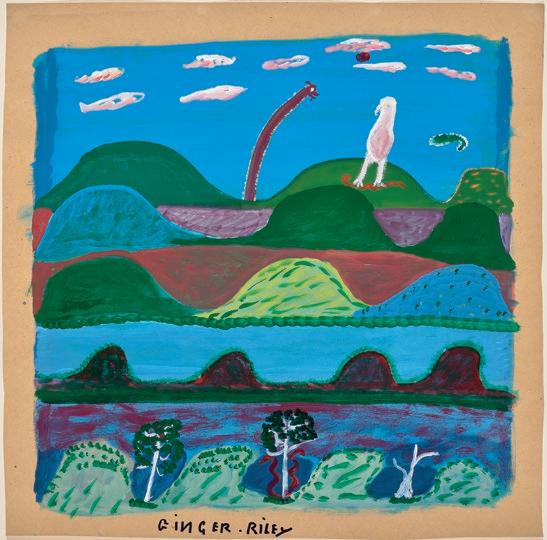
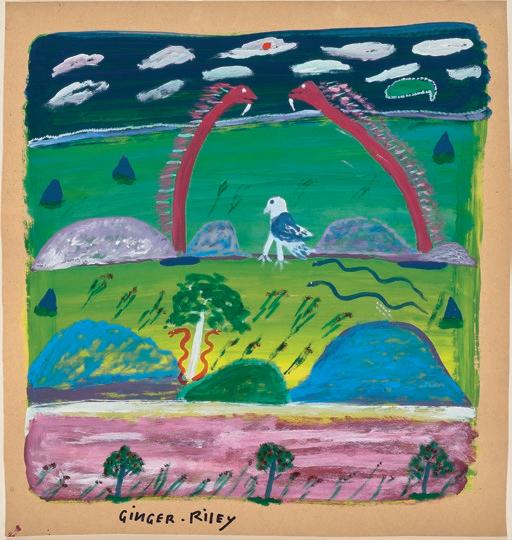
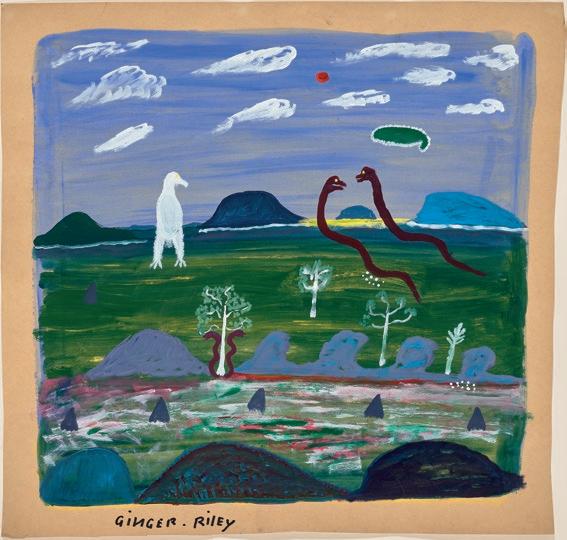

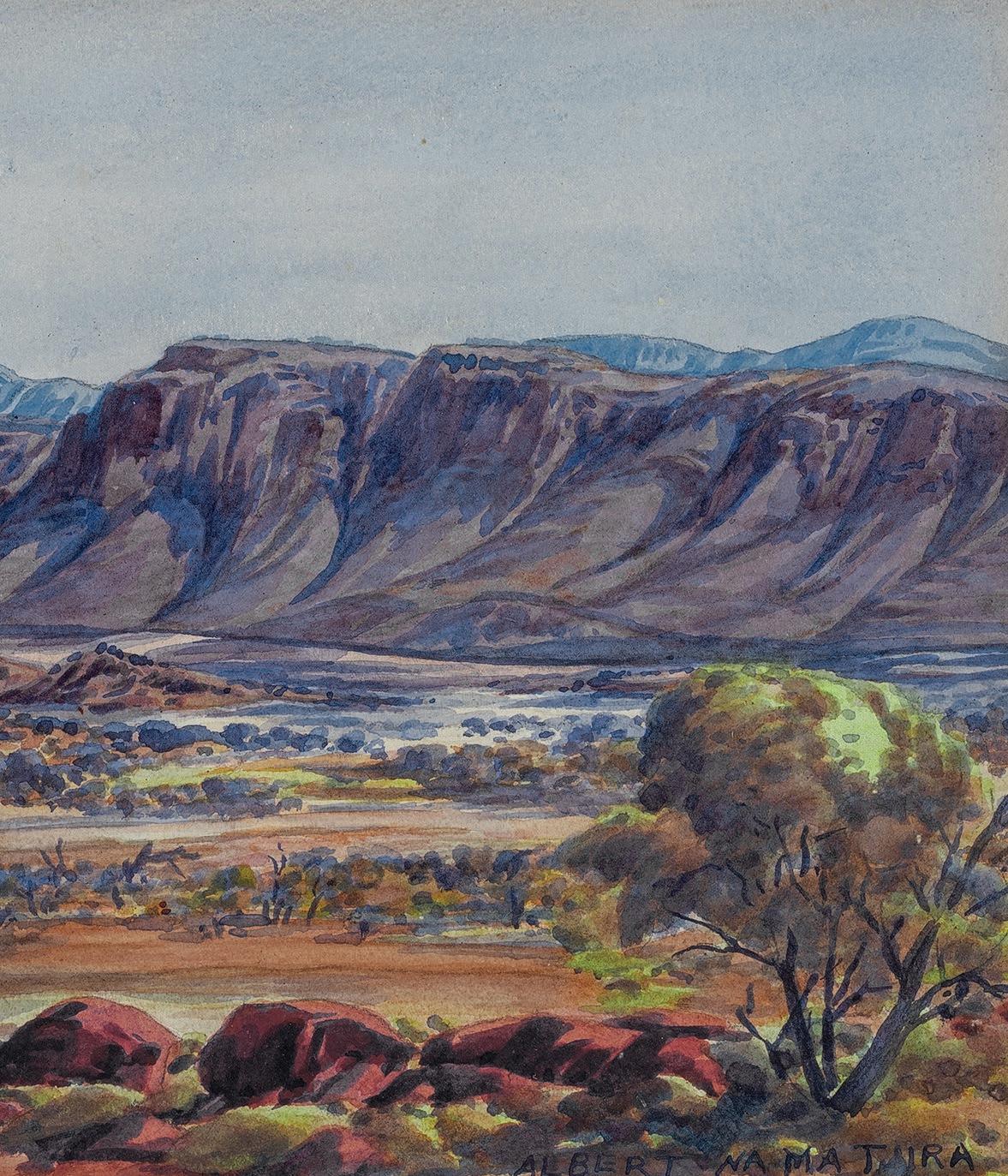
Lots 42 – 73
ALBERT NAMATJIRA (1902 – 1959)
RANGES NEAR JAY CREEK, c.1950s watercolour on paper 26.0 x 35.0 cm signed lower right: ALBERT NAMATJIRA signed and inscribed with title verso: Ranges Near Jay Creek / Albert Namatjira bears inscription on backing verso: Ranges Near Jay Creek bears inscription on partial gallery label verso: ALBERT NAMATJIRA / THE PLAINS NEAR JAY CREEK / 769 / 3
ESTIMATE: $25,000 – $35,000
Spinifex Gallery, Alice Springs, Northern Territory
Private collection, New South Wales, acquired from the above c.2000
‘…Many years ago, an Aboriginal man from central Australia, Albert Namatjira, became very famous as a painter. Using Western watercolour techniques he painted many landscapes. But what nonaboriginal people didn’t understand, or chose not to understand, was that he was painting his country, the land of the Arrernte people. He was demonstrating to the rest of the world the living title held by his people to the lands they had been on for thousands of years.’1
Although today synonymous with our vision of the Australian outback, Namatjira’s art nevertheless experienced many vicissitudes over the course of the last century. If his first solo exhibition in 1938 at the Fine Arts Society in Melbourne was a sell-out success, with popularity and fame continuing throughout his lifetime, praise for Namatjira’s skilful adaptation of a Western medium was, nevertheless, inevitably accompanied by a bitter twist; his paintings ‘…were appreciated because of their aesthetic appeal, but they were at the same time a curiosity and sign that Aborigines could be civilised.’ 2 Ironically such perceived ‘assimilation’ would later bring his art into disrepute, with Namatjira
virtually ignored by the Australian art establishment during the 1960s and 70s. Fortunately, the Papunya Tula Aboriginal art ‘renaissance’ and cultural politics of reconciliation during the 80s prompted long overdue reassessment of Namatjira’s unique contribution, and more recently, he has received the recognition he so deserves with three biographies published, and three major exhibitions mounted by public galleries, including a retrospective at the National Gallery of Australia in 2002 to celebrate the centenary of his birth, Seeing the Centre: The Art of Albert Namatjira 1902 – 1959
With its striking aesthetic appeal and embedded, multi-layered possibilities of meaning, Rangers near Jay Creek , c.1950s, offers a superb example of Namatjira’s achievements, encapsulating the highly unique vision that has subsequently inspired generations of Indigenous and non-Indigenous artists alike across Australia. As Belinda Croft elucidates, however, ‘Albert’s Gift’ was more far-reaching than simply the tangible legacy of his art, ‘…more than the sum parts of watercolour paints on paper. It is an essence that resides in the strength of Namatjira’s work – his courage, his sorrow, his spirituality – in these days of ‘reconciliation’, but most of all, in the spiritual heritage of every indigenous person in Australia.’ 3
1. Galarrwuy Yunupingu cited in ‘The black/white conflict’ in Caruana, W. (ed.), Windows on the Dreaming, Australian National Gallery, Canberra, Ellsyd Press, Sydney, 1989, p. 14
2. Morphy, H., Aboriginal Art, Phaidon Press, London, 1998, p. 270
3. Croft, B., ‘Albert’s Gift’ in French, A., Seeing the Centre: The Art of Albert Namatjira , 1902 – 1959, National Gallery of Australia, Canberra, 2002, p. 148
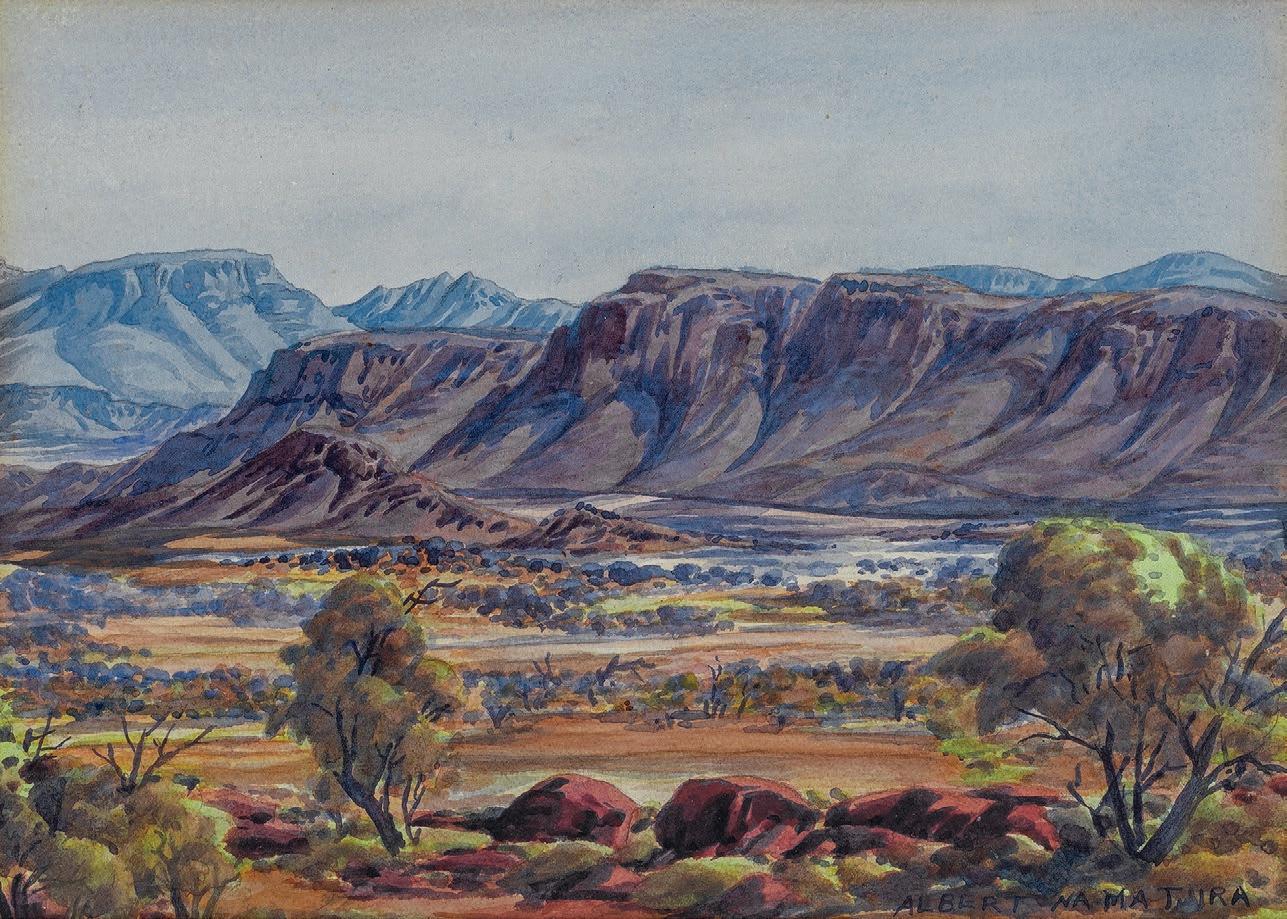
OTTO PAREROULTJA (1914 – 1973)
CENTRAL AUSTRALIAN LANDSCAPE, c .1950 s watercolour on paper
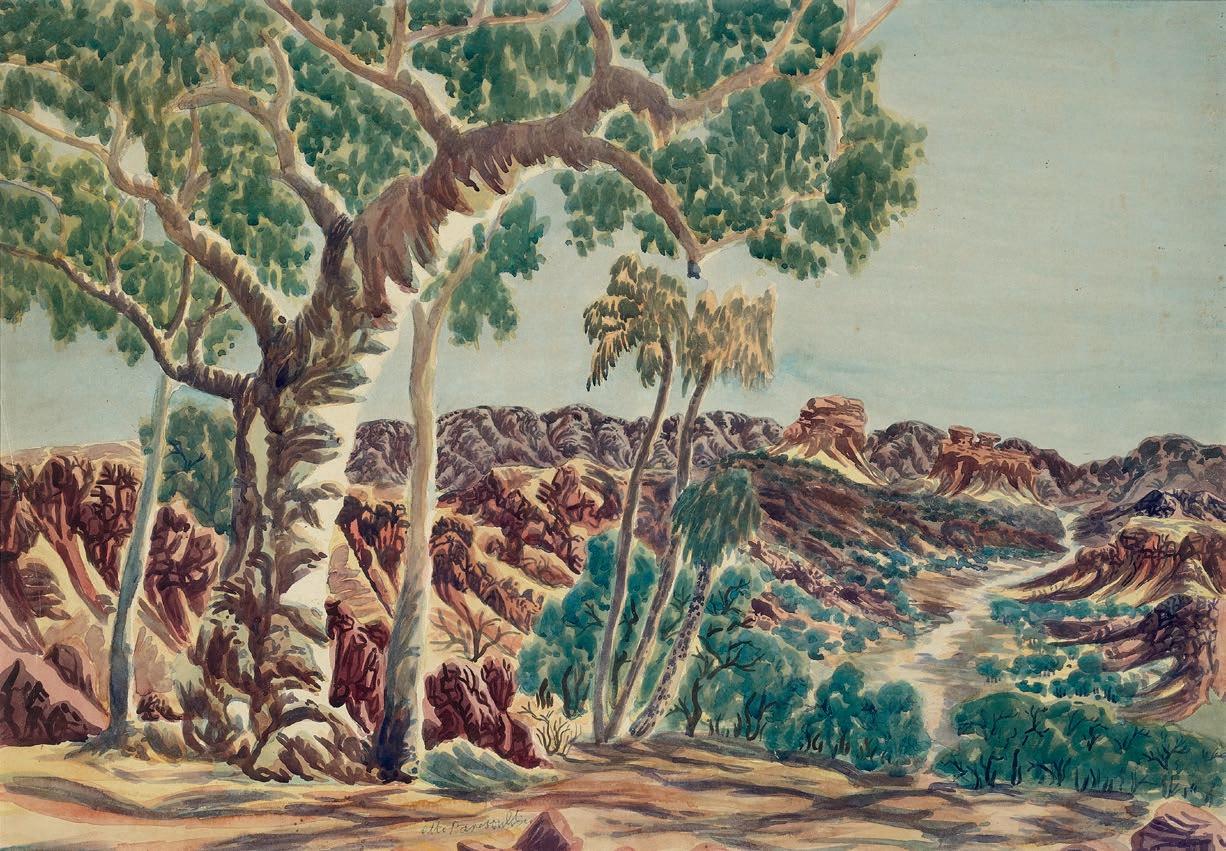
53.0 x 76.0 cm (sight)
signed lower centre: Otto Pareroultja
ESTIMATE: $3,000 – 4,000
WALTER EBATARINJA (1915 – 1968)
MOUNT HERMANNSBURG, 1950

watercolour on paper 28.0 x 46.0 cm (sight) signed indistinctly lower centre: WALTER EBATARINJA bears inscription on label attached verso: Mt. Hermannsberg [sic.] / May 1950
ESTIMATE: $1,500 – 2,500
44 PROVENANCE
Private collection
Theodore Bruce Auctions, Adelaide, 14 March 2010, lot 87
Private collection, Brisbane
UNTITLED, c.1986 natural earth pigments and natural binder on plywood
80.0 x 100.0 cm
bears inscription verso: Rover Thomas. / Waringarri. Aboriginal. Arts / S-500 / P829 /AFJ bears inscription on label on frame: 17
ESTIMATE: $40,000 – 60,000
Waringarri Aboriginal Arts, Kununurra, Western Australia Aboriginal Arts Australia Limited, Sydney Private collection, France, acquired from the above in June 1990
100.0
Private collection
Rover Thomas’s practice of rendering sites, stories and landscapes of the eastern Kimberley in a planar, map-like perspective was a radical innovation and one which created an entirely original mode of depicting the land, redefining the conceptual framework by which Aboriginal art was judged. This form of landscape painting, with the elements of each work referring to sites of ancestral or historical significance, and routes travelled by both the creator beings and the artist himself in his days as a drover on cattle stations in the region, became the basis of the style now recognised as the East Kimberley or Warmun School of Australian art.
Rover Thomas moved to Turkey Creek (Warmun) in early 1975. A government reserve, Warmun had previously been a rations depot and apart from a post office had few other facilities or amenities. Here, Indigenous workers displaced from the cattle stations found a place of refuge and for Rover Thomas, Paddy Tjamatji and other artists, Warmun also provided the background for their creative output, as the place where the Kuirr Kuirr song cycle first emerged and where the ensuing art movement flourished.
Painted from Waringarri Aboriginal Arts in Kununurra, Untitled , 1986 is characteristic of Rover’s early paintings where layers of traditional pigments affixed with natural resin binders are outlined by a tracery of white dots painted with huntite, a white chalky pigment used in ceremony and rock art. The work shows a planar view of landscape where lines indicate geological features, while at the same time recalling ancestral paths and delineating areas of country.
Rover Thomas was widely recognised as a significant Australian artist by the late 1980s, participating in group exhibitions throughout Australia every year from 1987 until his death in 1998. In 1990 he was awarded the John McCaughey Prize and was one of the first two Aboriginal artists (together with Trevor Nickolls), to represent Australia at the Venice Biennale. In his tribute to Rover Thomas, Kim Akerman noted that, ‘as an artist he took the experiences of a rich and varied life and, drawing on the cosmological and historical references that so vividly underpin the lives of Aboriginal peoples throughout Australia, presented us all with a new and profound view of the land we occupy’.1


ALEC MINGELMANGANU (1905 – 1981)
WANJINA, c.1978
natural earth pigments on carved and engraved wood 28.5 x 9.0 cm

bears inscription verso: artist’s name ‘Alec’ and cat. A111
ESTIMATE: $7,000 – 9,000
Executed c.1978
Private collection, Washington, USA
Sotheby’s, Melbourne, 29 July 2003, lot 465
Private collection, Sydney
GARKMAN, 1992 gouache on illustration board 50.0 x 37.5 cm signed lower right: Lin Onus
ESTIMATE: $15,000 – 20,000
Gallery Gabrielle Pizzi, Melbourne (label attached verso) Private collection, Melbourne, acquired from the above in 1992
Lin Onus began painting during the 1970s, coinciding with both the acknowledgment of Aboriginal art in Australia and the emergence of the political debate on issues of native title and equal opportunity. Straddling such dualistic perspectives – one Western and representational, the other Aboriginal and spiritual – Onus was thus able to explore fresh ideas from a diverse range of influences.
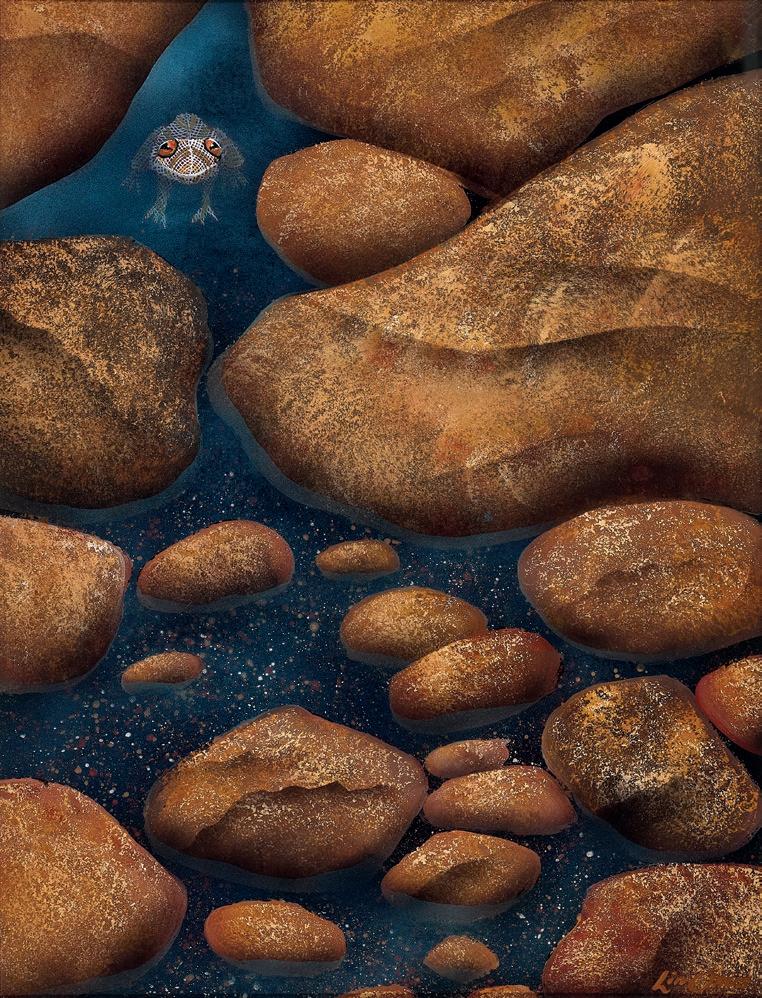
Of particular relevance to his ‘water and reflection’ paintings such as the present, were Onus’ regular spiritual pilgrimages to Arnhem Land which, he later mused, gave him ‘back all the stuff that colonialism had taken away.’1 As Neale observes, ‘...now, in addition to his own ancestral site at Barmah forest he was permitted to access new sites of significance such as Arafura Swamp, or his adoptive community at the outstation Garmedi; skin names; to language that he used for many of the titles of his works; to ceremony and Dreaming stories.’ 2 Arguably most influential upon his stylistic evolution, however, was the relationship he developed in Arnhem Land with the highly esteemed Aboriginal painter, Jack Wunuwun. Inspired by the older artist’s bark painting techniques such as rarrk (crosshatched designs), Onus subsequently embarked upon his celebrated series of watery landscapes which, rich in reflections and ambiguities, substituted the traditional European panoramic view for one described by his mentor Wunuwun as ‘seeing below the surface.’ The presence of indigenised frogs within the landscape as in this painting refers also to totemic landscape and is part is part of Onus claiming custodianship or expressing a sense of belonging.
2.
born 1952
FROGS, 1994
natural earth pigments on eucalyptus bark
190.0 x 67.5 cm (irregular)
bears inscription verso: artist’s name and Maningrida Arts and Culture cat. 037/94
ESTIMATE: $40,000 – 60,000
Maningrida Arts and Culture, Maningrida, Northern Territory Private collection, Melbourne
EXHIBITED
John Mawurndjul: I am the Old and the New , Museum of Contemporary Art, Sydney, 6 July – 23 September 2018; Art Gallery of South Australia, Adelaide, 26 October 2018 – 28 January 2019
Altman, J., et al., John Mawurndjul: I am the Old and the New , Museum of Contemporary Art, Sydney and Art Gallery of South Australia, Adelaide, 2018, pp. 97 (illus.), 377
Untitled, 1993, earth pigments on Stringybark, 136.9 x 40.4 cm, private collection, Queensland illus. in Altman, J., et al., John Mawurndjul: I am the Old and the New, Museum of Contemporary Art, Sydney and Art Gallery of South Australia, Adelaide, 2018, p. 95
‘The studies of flora and fauna in the paintings of John Mawurndjul are encyclopedic and reflect an intimacy with country and a prowess as hunter and conservationist. His later depictions of animals incorporate an added layer of complexity combining their position in cultural/ spiritual and natural worlds. Djaddi (frogs) and yibba (an ornate burrowing frog) are recorded as being pets of the Rainbow Serpent and are associated with stories of a secret nature.’1
‘Kudjidmi is the main ornate burrowing frog sacred site. It belongs to Gurrgoni language people, who sing bunggurl songs about that frog. The frog speaks Gurrgoni, ‘gah gah’. The ornate burrowing frog is a Gurrgoni speaker. The ornate burrowing frog put that sacred place at that location. Kudjidmi is the main site and the one at Nangak is on the hill, near the Djinkarr Ranger Station. The two sites point at each other. Both sites are yirridjdja moiety. Those sites are for those people from Bulkay on the Tomkinson flood plain – people like Jack Adjdjarral of the Boburerri clan on top and people from the Darnkolo clan below.’ 2
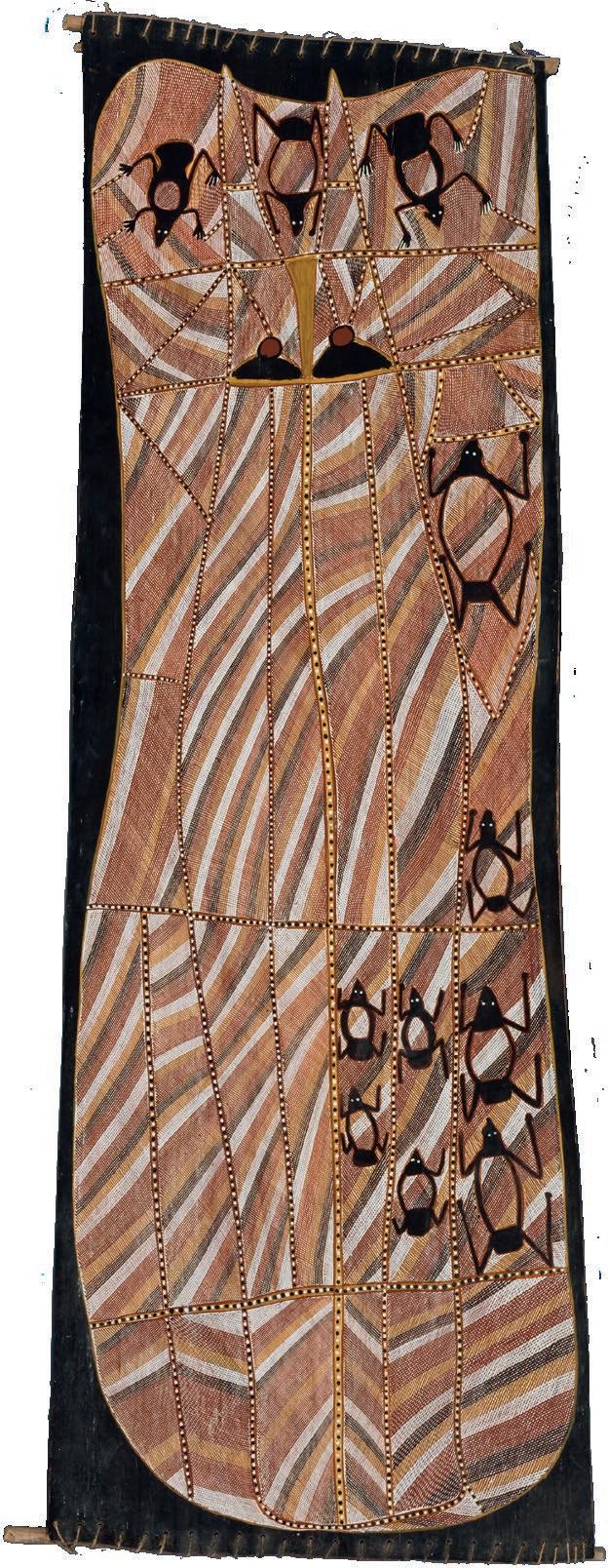
MICK KUBARKKU (c.1922 – 2008)
NAMARRKON, LIGHTNING SPIRIT, 1981
natural earth pigments on eucalyptus bark
84.0 x 70.0 cm (irregular)
ESTIMATE: $10,000 – 15,000
49 PROVENANCE
Maningrida Arts and Culture, Maningrida, Northern Territory (cat. K509/OAR)
Private collection, Perth
Namarrkon, the lightning spirit, 1973, earth pigments on eucalyptus bark, 61.1 x 50.1 cm, in the collection of the National Gallery of Victoria, Melbourne, illus. in Ryan, J., (ed), LAND MARKS , National Gallery of Victoria, Melbourne, 2006, p. 27

(1926 – 2009)
NAKURRUNDIHBA 1, 2004
natural earth pigments on eucalyptus bark 149.0 x 53.5 cm (irregular)
ESTIMATE: $8,000 – 12,000
Maningrida Arts and Culture, Maningrida, Northern Territory

Annandale Galleries, Sydney (label attached verso, cat. LB37)
Private collection, New South Wales
Deutscher and Hackett, Melbourne, 14 October 2009, lot 5
Private collection, Sydney
GUNYBI GANAMBARR born 1973
MILNGURR/MILŊURR, 2011
natural earth pigments on eucalyptus bark with bark felt 143.0 x 71.5 cm (irregular) bears inscription verso: artist’s name, date and Buku–Larrŋgay Mulka cat. 4047R bears inscription on certificate attached verso: artist’s name, title, medium, size and Buku–Larrŋgay Mulka cat. 4047R
ESTIMATE: $8,000 – 12,000
Buku–Larrŋgay Mulka Centre, Yirrkala, Northern Territory (label attached verso)
Annandale Galleries, Sydney (label attached verso)
Private collection, Sydney, acquired from the above in May 2012
GUNYBI GANAMBARR: From My Mind, Annandale Galleries, Sydney, 2 May – 16 June 2012
This work is accompanied by a certificate of authenticity attached verso from Buku–Larrŋgay Mulka Centre which states in part:
‘This bark identifies the reservoirs of the Ŋaymil/Datiwuy clan. Nalkan is an area on Ŋaymil land and sea between the Gurrumuru and Cato Rivers that run into the Arnhem Bay. Within this area is another watercourse that leads up into a sacred area of a freshwater spring or Milŋurr with special qualities called Balawurru. Gudurrku or Brolga dance here. Djanda the sacred goanna swim in the lagoon created by the spring, their actions as they swim causing patterns to be made on the surface that is covered by the totemic water weed Darra.’
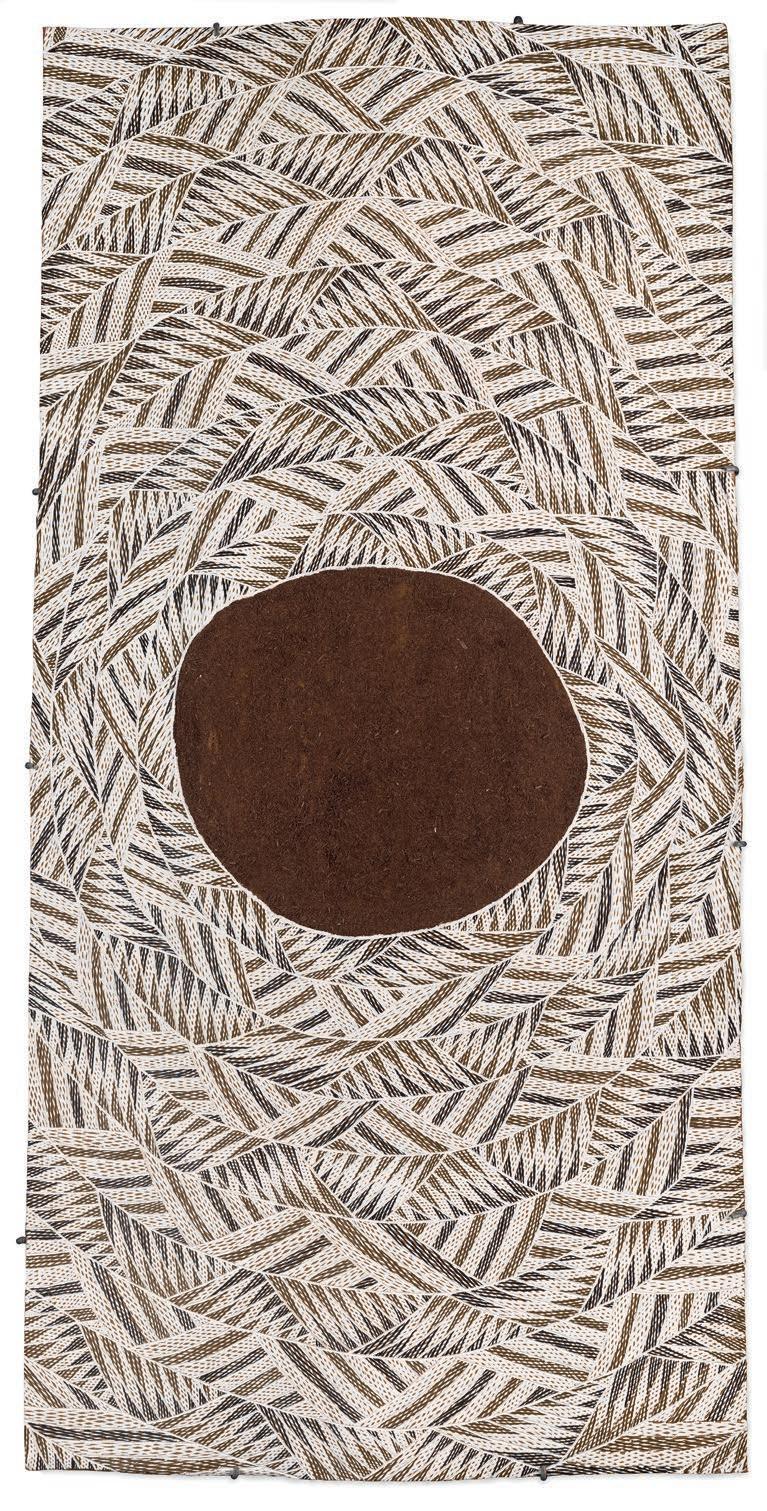
DHURRUMUWUY MARIKA born 1981
RULYAPA, 2007
natural earth pigments on eucalyptus bark 121.0 x 58.0 cm (irregular) bears inscription verso: artist’s name, date and Buku–Larrŋgay Mulka cat. 3313H bears inscription on certificate attached verso: artist’s name, title, medium, size and Buku–Larrŋgay Mulka cat. 3313H
ESTIMATE: $3,000 – 4,000
Buku–Larrŋgay Mulka Centre, Yirrkala, Northern Territory (cat. 3313H) (label attached verso) Annandale Galleries, Sydney (label attached verso) Private collection, Sydney acquired from the above in April 2008
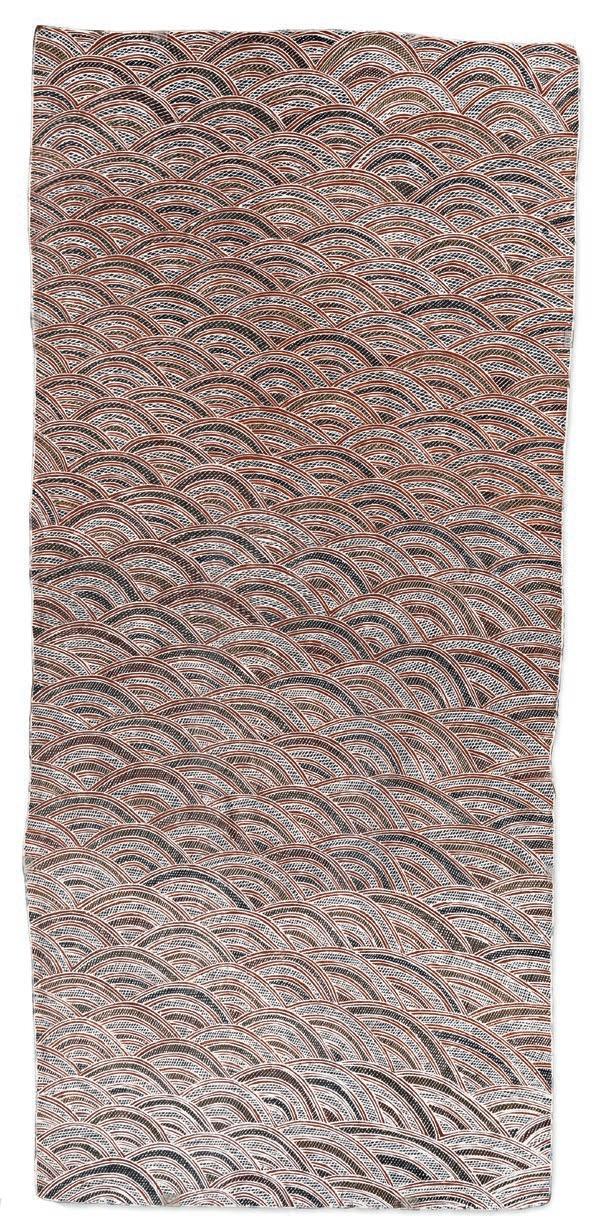
YOUNG GUNS II: bark paintings & ceremonial poles , Annandale Galleries, Sydney, 16 April – 10 May 2008
This work is accompanied by a certificate of authenticity attached verso from Buku–Larrŋgay Mulka which states in part:
‘This miny’tji represents Rulyapa, the rough saltwater country between Nhulunbuy and the large island of Dhambaliya, ballooning up from the secret depths, around the sacred rock Manhala, which can be a manifestation of Daymirri. Daymirri is the whale (or perhaps sea monster) that according to Rirratjiŋu and Djambarrpuyŋu clan manikay (sacred song) pertains to the saltwater country close to Yirrkala. The dome–shamed rock Manhala exposes itself at the low tide, above the raŋ (tide marks), bleached white, a patina of brine and weather.
Manhala is one of many names given to the rock. Djambarrpuyŋu and Rirratjiŋu clans have many ‘deep’ names that intoned by the ritual specialists at the culmination of appropriate ceremony. The sea surrounding the rock, its tidal movements, differing states and the effect it has on Yolŋu visiting this site in Ancestral times is all recorded in the sacred song.’
DJAMBAWA MARAWILI born 1953
WALU, 1983
natural earth pigments on eucalyptus bark
207.0 x 89.0 cm bears inscription verso: artist’s name and Buku–Larrŋgay Mulka cat. 1506J and 797B FW
ESTIMATE: $8,000 – 12,000
Buku–Larrŋgay Mulka Art Centre, Yirrkala, Northern Territory Private collection, Melbourne

This work is accompanied by a certificate of authenticity from Buku–Larrŋgay Mulka Art Centre which states:
‘Mayawuluk (c.1937) is a descendant of the warrior Wirrpanda and mother of Wakuthi’s eldest son Djambawa. Djambawa has painted her Dhudi–Djapu clans design of country that was transformed by the principal creator beings for the Dhuwa moiety – the Djaŋ’kawu.
They passed through the plains country of Yalata towards where the Dhudi–Djapu live today at Dhuruputjpi. These the Djaŋ’kawu, two Sisters with names in this country of Ganaypa and Banyali, sang the brolga Dhan gultji as they went with their walking sticks – Wapitja. With these they dug waterholes as they went, naming, thus sanctifying them with special qualities. Today they retain these same qualities for the Yolŋu, the water and knowledge that surfaces from these wells by their actions are sung in ceremony for this country.
Waŋ’kawu the sacred goanna for Djapu clans and associate Dhuwa emerged from one of these waterholes by the upper reaches of the plain, a place called Dhakarra or Walirrwan. Waŋ’kawu witnessed the first sunrise over this area to see Daŋgultji walking over the plain, waterhole to waterhole, leaving their footprints in the drying mud.
The sacred clan design throughout this painting declares ownership of this country from Yalata to Dhuruputjpi for the Dhudi–Djapu. Through his mother’s connection with these people Djambawa has the right to paint these designs with their permission. The ribbons of red, white and yellow hatching refer to the freshwater that flows from the water holes of this area that is aflood during the wet. It has also been incorporated as Walu’s (sun) first rays over this place.’
TONY ALBERT
born 1981 GREEN SKINS, 2014 suite of 14 synthetic polymer paint on paper 27.5 x 21.0 cm (each) signed on label verso: tony ALBERT / X. each bears inscription on label verso: artist’s name, title, date, medium and size
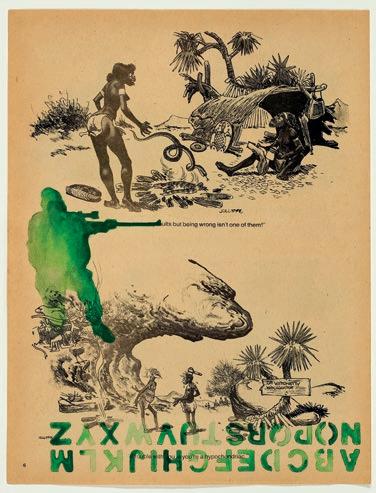

ESTIMATE: $18,000 – 25,000 (14)

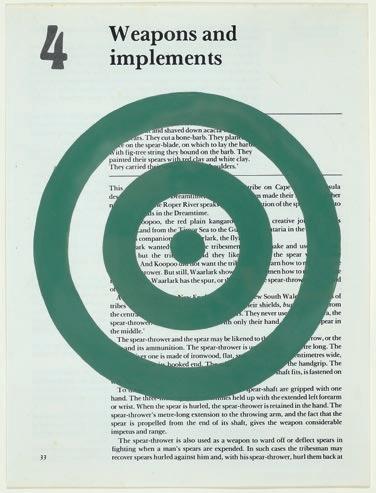
Sullivan and Strumpf, Sydney (labels attached verso) Private collection, Sydney, acquired from the above in 2015
EXHIBITED
Tony Albert: Guarding the Home Front , Casula Powerhouse Arts Centre, Sydney, 20 March – 17 May 2015

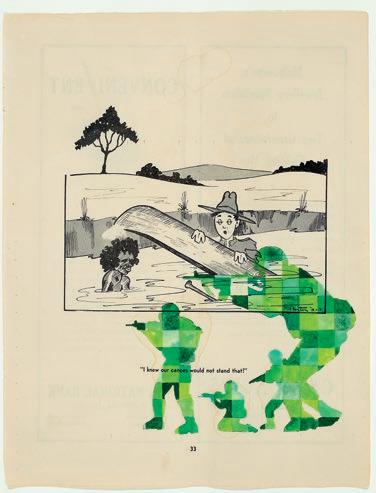
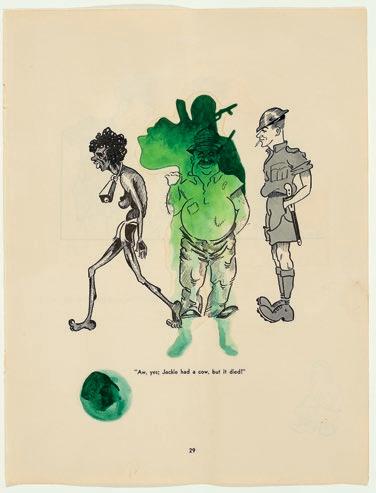

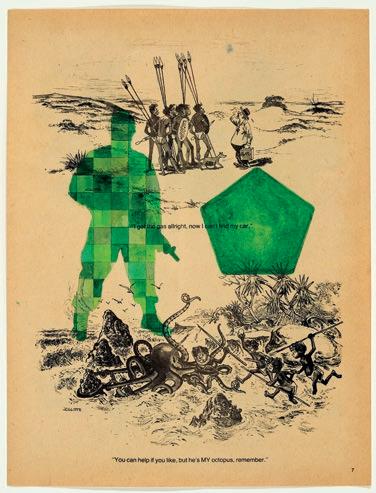


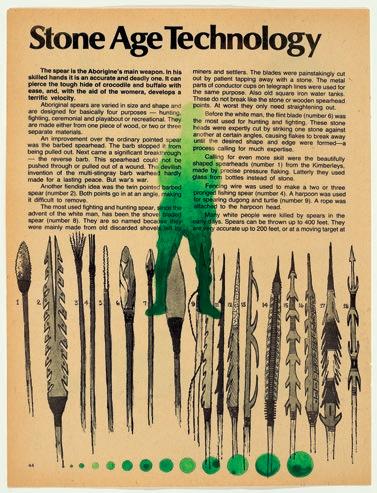
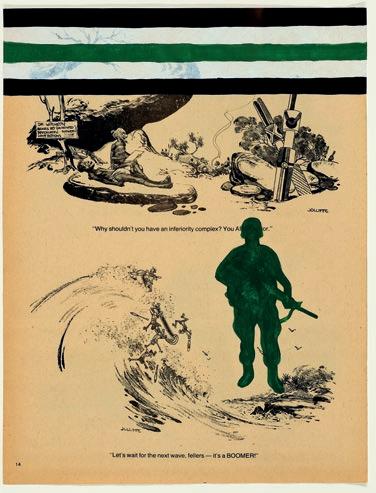
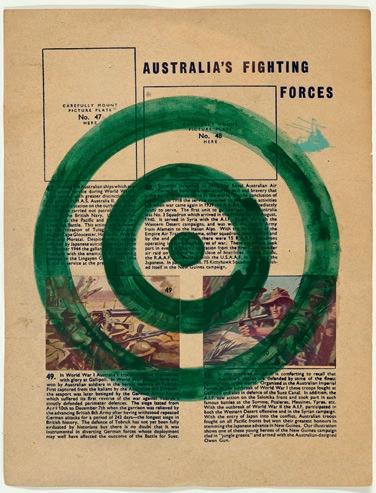
MICHAEL RILEY (1960 – 2004)
UNTITLED (LOCUST), 2000/2005 from the CLOUD series inkjet print on Ilford Galerie paper
112.0 x 150.0 cm edition: 2/5
ESTIMATE: $8,000 – 12,000
Gallery Gabrielle Pizzi, Melbourne
Private collection, Brisbane, acquired from the above in October 2004
EXHIBITED
Sights Unseen , National Gallery of Australia, Canberra, 14 July – 22 October 2006 and touring nationally (another example)
Home: Aboriginal Art from NSW, Art Gallery of New South Wales, Sydney, 9 June – 2 December 2012 (another example)
Other examples of this photograph are held in the collections of the National Gallery of Australia, Canberra, the Queensland Art Gallery | Gallery of Modern Art, Brisbane, the Art Gallery of New South Wales, Sydney and the Musée du Quai Branly, Paris.
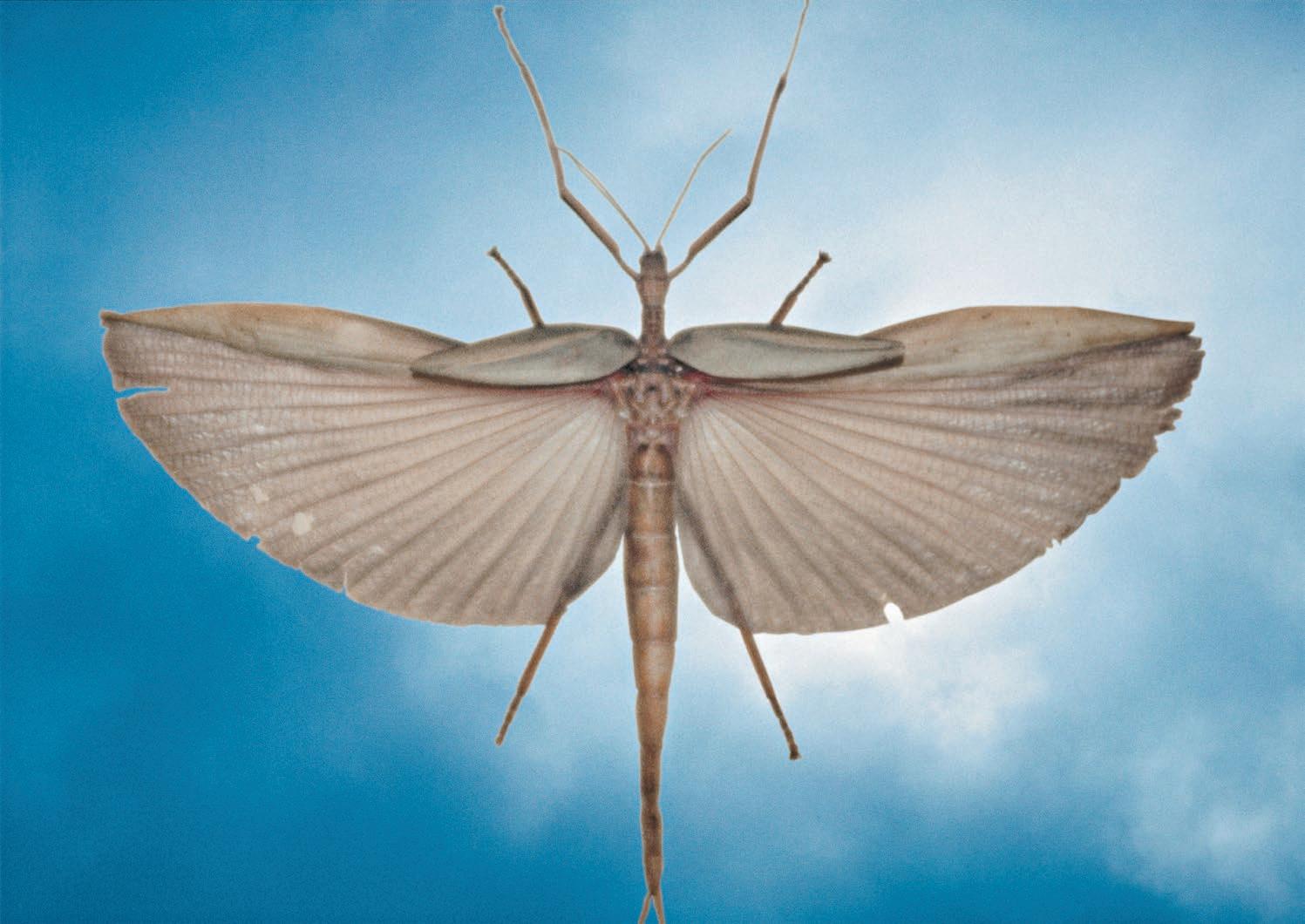
DIBIRDIBI COUNTRY, 2007
synthetic polymer paint on linen 198.0 x 101.0 cm bears inscription verso: artist’s name, title, medium and Mornington Island Arts and Crafts cat. 2104–L–SG–0307
ESTIMATE: $18,000 – 25,000
Mornington Island Arts and Crafts, Mornington Island, Queensland (stamped verso)
Alcaston Gallery, Melbourne
Private collection, Canberra, acquired from the above in 2008
This work is accompanied by a certificate of authenticity from Mornington Island Arts and Crafts which states:
‘My painting shows my husband Pat’s country on Bentinck lsland.’
Mirdidingkingathi Juwarnda Sally Gabori grew up on Bentinck Island in Northern Queensland, in the traditions of the Kaiadilt people who used the local marine resources to fulfill all their needs and had very little outside contact. After an intense drought followed by a tidal surge made the island uninhabitable, at the age of 24, Mirdidingkingathi (meaning born at Mirdidingki River) Juwarnda (her totem, the dolphin) Sally Gabori and her family were persuaded to move to the adjacent Mornington Island – a move that prompted feelings of huge loss for the Kaiadilt people. Gabori began her art career late in life, at the age of 85, and Judith Ryan of the National Gallery of Victoria compares her immense innovation and star power to that of similar late-starters, Emily Kame Kngwarreye and Lorna Fencer Napurrula.1 Unlike many other Aboriginal language groups, the Kaiadilt did not have a tradition of mark making, whether on tools, objects or bark. Taking this cultural background into consideration, Gabori’s style is completely self-made, conjured from maps in her mind of Bentick Island and the country she loved.
Dibirdibi Country, 2007 evokes a subject painted more often by the artist than any other – the land and the story inherited from her husband. Known primarily for her brightly coloured canvases, with vital, intuitive and boldly executed brushstrokes, when Gabori paints Dibirdibi, the meanings layer in multitudes; she is at once painting the saltpans of the land, the Rock Cod Ancestor Dreaming of Dibirdibi Country, a portrait of her late husband in connection to his country, and finally, her own longing, loss and memory.
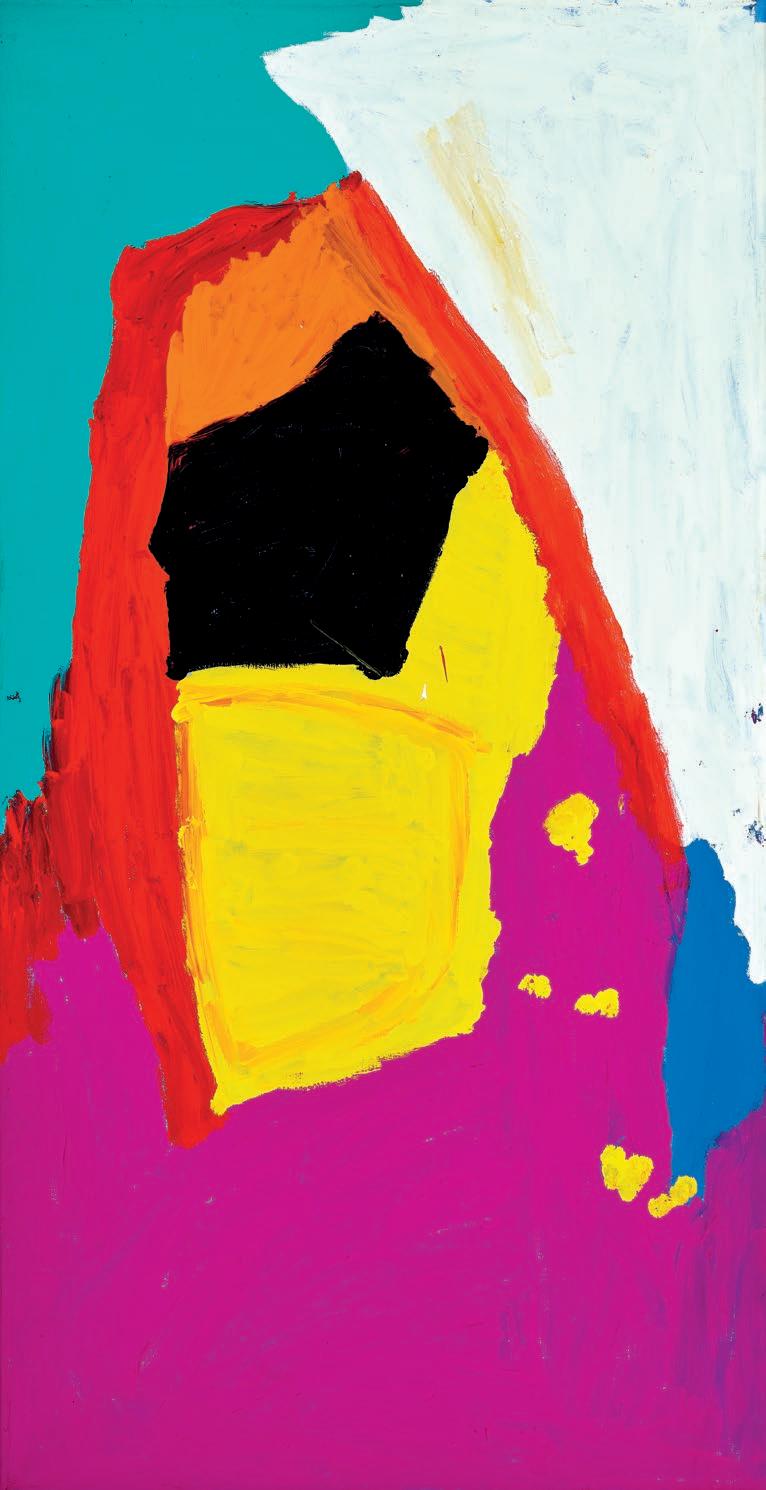
(c.1924 – 2015)
DIBIRDIBI COUNTRY, 2008
synthetic polymer paint on linen 121.0 x 91.0 cm
bears inscription verso: artist’s name, title, medium and Mornington Island Arts and Crafts cat. 3364–L–SG–0708 and Alcaston Gallery cat. AK14651
ESTIMATE: $8,000 – 12,000
Mornington Island Arts and Crafts, Mornington Island, Queensland (stamped verso)
Alcaston Gallery, Melbourne
Private collection, Canberra, acquired from the above in 2008
This work is accompanied by a certificate of authenticity from Alcaston Gallery which states:
‘This is a hunting ground on my husband’s country on Bentinck Island. At the edge of the big saltpan is a mangrove swamp where we get crab and mudshell.’

(c.1940 – 2018)
TALI – SAND DUNE, 2013
synthetic polymer paint on linen
198.0 x 121.0 cm

bears inscription verso: artist’s name, Tjala Arts cat. 786–13 and Alcaston Gallery cat. AK 19326
ESTIMATE: $6,000 – 8,000
Tjala Arts, Amata, South Australia
Alcaston Gallery, Melbourne (stamped verso)
Private collection, Melbourne, acquired from the above in 2014
EXHIBITED
Ray Ken | Ngayulu Witira Kanyini, Ngayuku Tjukurpa - I Hold the Story of My Country, Alcaston Gallery, Melbourne, 24 June – 18 July 2014 (illus. on front cover of exhibition invitation)
PUNGKALUNGKA MAN, 1983 synthetic polymer paint on linen 162.0 x 103.0 cm
ESTIMATE: $20,000 – 30,000
Purchased by the artist Tim Johnson directly from the Papunya Tula Artists storeroom in 1983.
Tim and Vivien Johnson collection Private collection, Sydney
According to Mr Johnson, Namarari explained that the painting depicted the Pungkalungka Man. The then Papunya Tula Artist’s manager, Daphne Williams, sold the work with out a catalogue number or documentation as she found the subject matter unusual and had placed the work temporarily into the storage. (personal correspondence with Tim Johnson)
Two Worlds Collide , Artspace, Sydney, 1985 (illus., as ‘Pulku Pulku Men’ on front cover of exhibition catalogue)
Western Desert painting operates in the space between ceremony and country, referencing each whilst exploring ancestral inheritance. Mick Namarari's works are loaded with symbolism which is closely tied to traditional narratives in a densely and tightly coded abstraction. He developed a visual language which was influenced by cultural protocol, but never restrained by it. His innovation was a consequence of his continual need to paint and a refining of his imagery over time.
Namarari was one of the first to experiment with fields of dotting devoid of figuration or traditional design motifs and in the early 1990s, together with Turkey Tolsen Tjupurrula, Namarari explored minimal representation. Utilising bold, undotted lines of colour and at the same time focusing on just one aspect of a story, this shift in direction would influence Papunya Tula painting from the late 1990s well into the 2000s.
This work painted 1983, is a rendition of the Punkalungku , mythical men who lived in a large cave in the hills near Papunya and who frightens and punishes lawbreakers. Painted on a black ground, the repeated figure of the giant framed by alternating broad bands of red and yellow ochre creates a minimal repetitious template typical of the artist’s work at this time.
One of the most accomplished artists of the founding Papunya painters, Namarari also served on the Papunya Council. In 1991 he was awarded the National Aboriginal Art Award, a moment which heralded not only public attention for the Papunya Tula artists, but also confirmed the importance of his practice within the community. Exhibited in every Australian capital and at international art fairs, Namarari spearheaded the acceptance of Western Desert art in the ultra-competitive world of contemporary art.
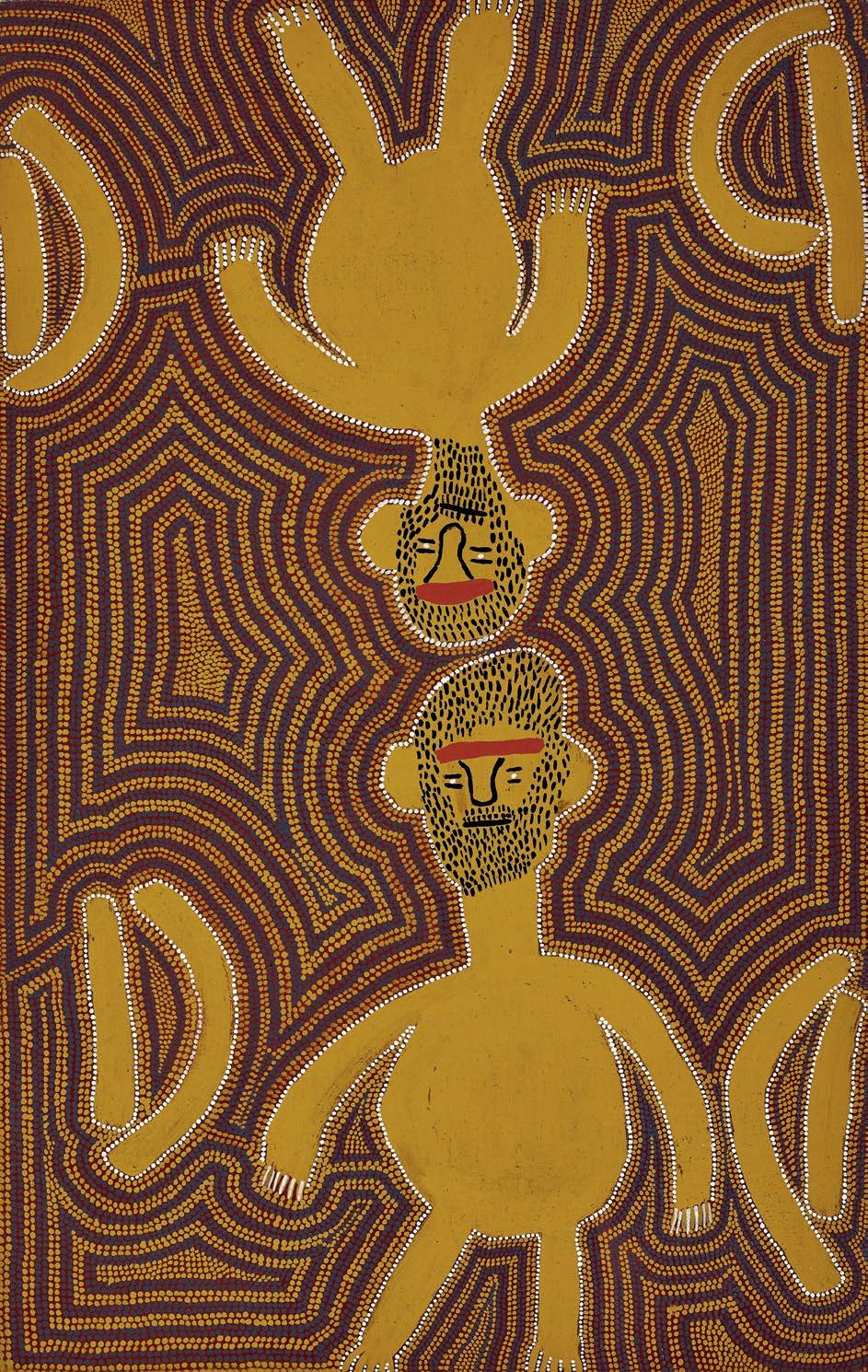
TIM LEURA TJAPALTJARRI (c.1929 – 1984)
PERENTIE (LIZARD), 1980 synthetic polymer paint on carved wood 94.0 x 14.0 x 9.0 cm

ESTIMATE: $8,000 – 10,000
59 EXHIBITED
Papunya Painting: Out of the Desert , National Museum of Australia, Canberra, 28 November 2007 – 3 February 2008
LITERATURE
Johnson, V., Papunya Painting: Out of the Desert , National Museum of Australia Press, Canberra, 2007, p. 130 (illus.)
PROVENANCE
Purchased by the artist Tim Johnson, directly from the artist while working for Papunya Tula artists in 1981
Tim and Vivien Johnson collection, Sydney Private collection, Sydney
CLIFFORD POSSUM TJAPALTJARRI
(c.1932 – 2002)
UNTITLED, 1990 synthetic polymer paint on canvas 133.5 x 85.0 cm bears inscription verso: artist’s name, CAAMA cat. 8–290 and Alcaston Gallery cat. AK395
ESTIMATE: $15,000 – 20,000
Commissioned by the Central Australian Aboriginal Media Association, Alice Springs, Northern Territory Alcaston Gallery, Melbourne (stamped on stretcher bar verso) Private collection, Melbourne
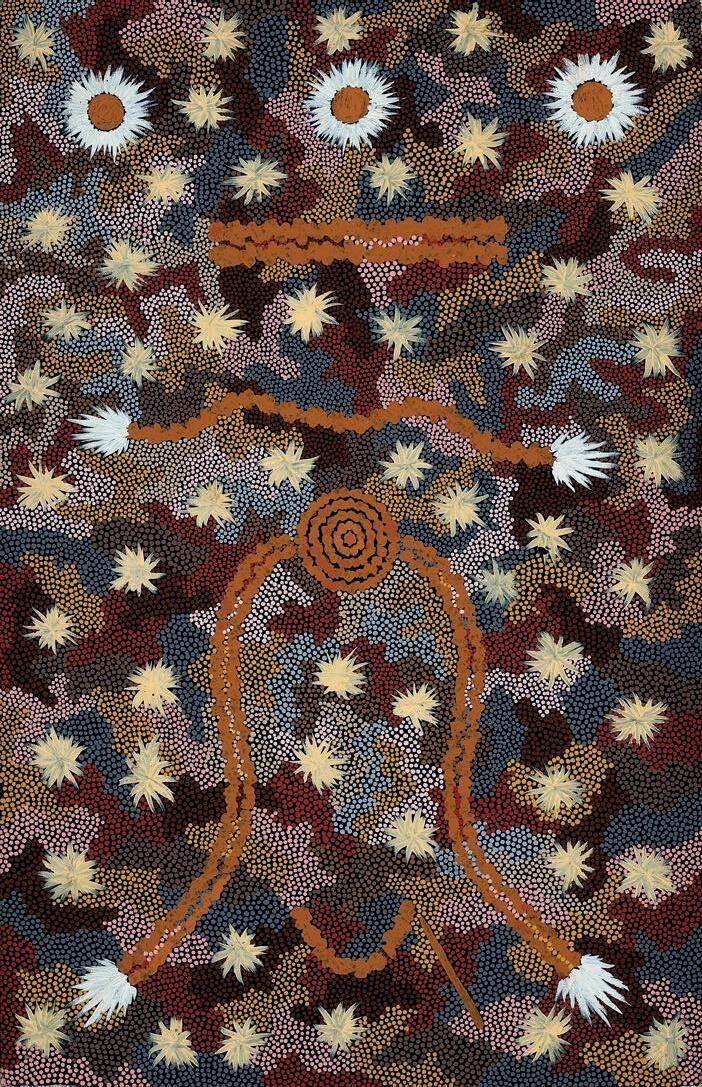
DINI CAMPBELL TJAMPITJINPA (c.1945 – 2000)
KUTAKUTA (WEST OF JUPITER WELL), 1989 synthetic polymer paint on linen 152.5 x 122.0 cm bears inscription verso: artist’s name and Papunya Tula Artists cat. DC890649

ESTIMATE: $8,000 – 12,000
61 PROVENANCE
Painted at Kintore for Papunya Tula Artists, Alice Springs in 1989 Private collection, Queensland
born c.1950
WIRUINGA, 1990
synthetic polymer paint on linen
181.0 x 122.0 cm
bears inscription verso: artist’s name, size and Papunya Tula Artists cat. JJ900759
ESTIMATE: $10,000 – 15,000
Painted at Kintore for Papunya Tula
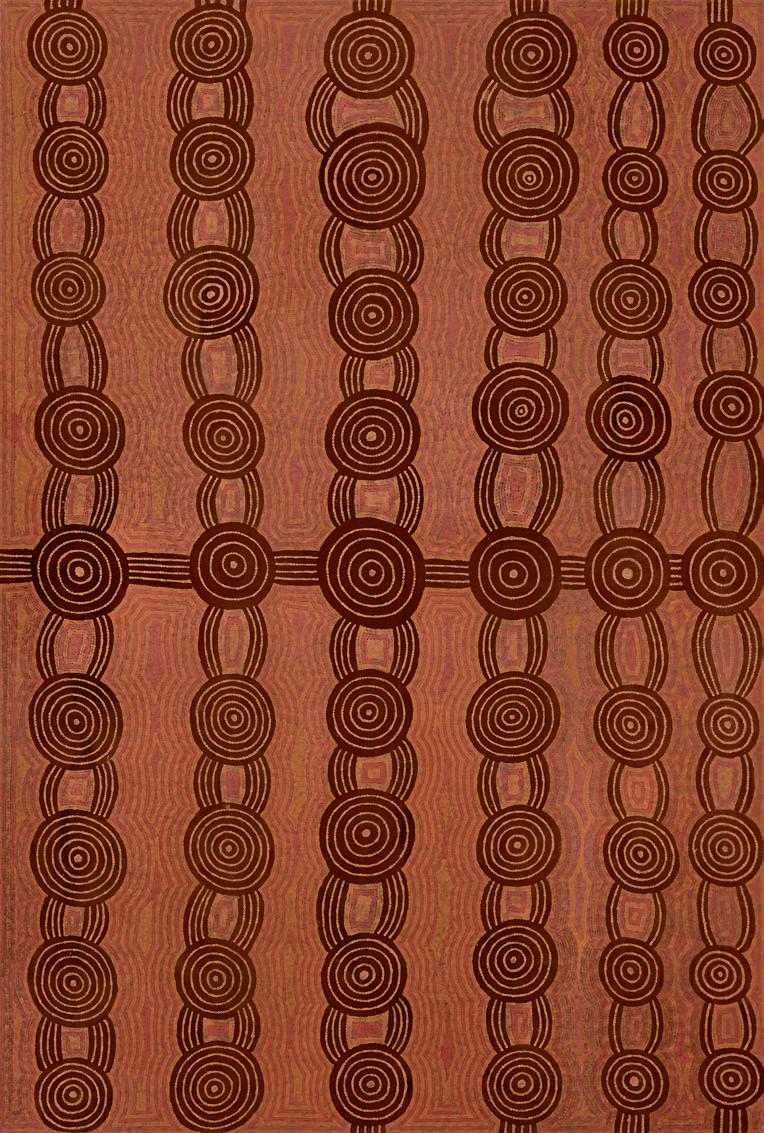
Artists, Alice Springs in 1990
Private collection, Queensland
BOBBY WEST TJUPURRULA born 1958
UNTITLED, 1999 synthetic polymer paint on linen 122.0 x 91.0 cm bears inscription verso: artist’s name, size and Papunya Tula Artists cat. BW9910249

ESTIMATE: $5,000 – 7,000
63 This work is accompanied by a certificate of authenticity from Papunya Tula Artists which states:
‘This painting depicts designs associated with the sand dune site of Yampura Tjungku, just to the west of the Kiwirrkura Community airstrip.
In mythological times two Ngangkari (Aboriginal Healers) were travelling in the area. They had killed a number of dogs at Muntja, south–east of here. They brought the dead dogs and piled them up at this site, forming the sand dune.’
Papunya Tula Artists, Alice Springs, Northern Territory Private collection, Melbourne, acquired from the above in 2000
JOSEPH JURRA TJAPALTJARRI
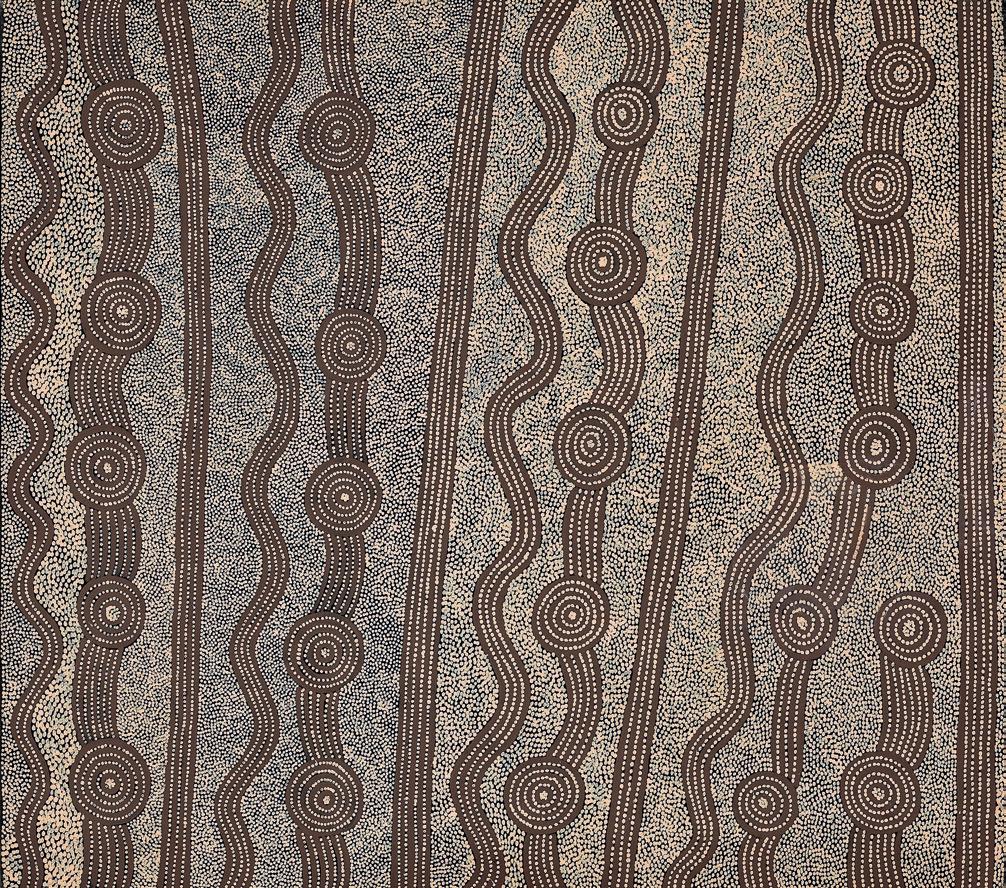
born c.1950
TIMALNGA, 2000 synthetic polymer paint on linen 122.5 x 137.5 cm
bears inscription verso: artist’s name, size and Papunya Tula Artists cat. JJ2000561
ESTIMATE: $10,000 – 15,000
Painted at Kintore for Papunya Tula Artists, Alice Springs
Aboriginal and Pacific Art, Sydney Private collection, Sydney
64
This work is accompanied by a copy of the certificate of authenticity from Papunya Tula Artists which states:
‘This painting depicts designs associated with the soakage water site of Timalnga, north of the Kiwirrkura Community. There are rocks at this site which are associated with Tingari Mens’ Ceremonies. In mythological times a large group of Tingari Men camped at this site before travelling east towards Pinari, north–west of the Kintore Community. Since events associated with the Tingari Cycle are of a secret nature no further detail was given.
Generally, the Tingari are a group of mythical characters of the Dreaming who travelled over vast stretches of the country, performing rituals and creating and shaping particular sites. The Tingari Men were usually followed by Tingari Women and accompanied by novices and their travels and adventures are enshrined in a number of song cycles. These mythologies form part of the teachings of the post initiatory youths today as well as providing explanations for contemporary customs.’
YUKULTJI NAPANGATI born 1970
YUNALA, 2007
synthetic polymer paint on linen
122.0 x 61.0 cm
65 PROVENANCE
Painted at Kiwirrkura in 2007 for Papunya
Tula Artists, Alice Springs
Chapman Gallery, Canberra
Private collection, New South Wales
Tula Artists cat. YN0705011
bears inscription verso: artist’s name, size and Papunya
ESTIMATE: $4,000 – 6,000
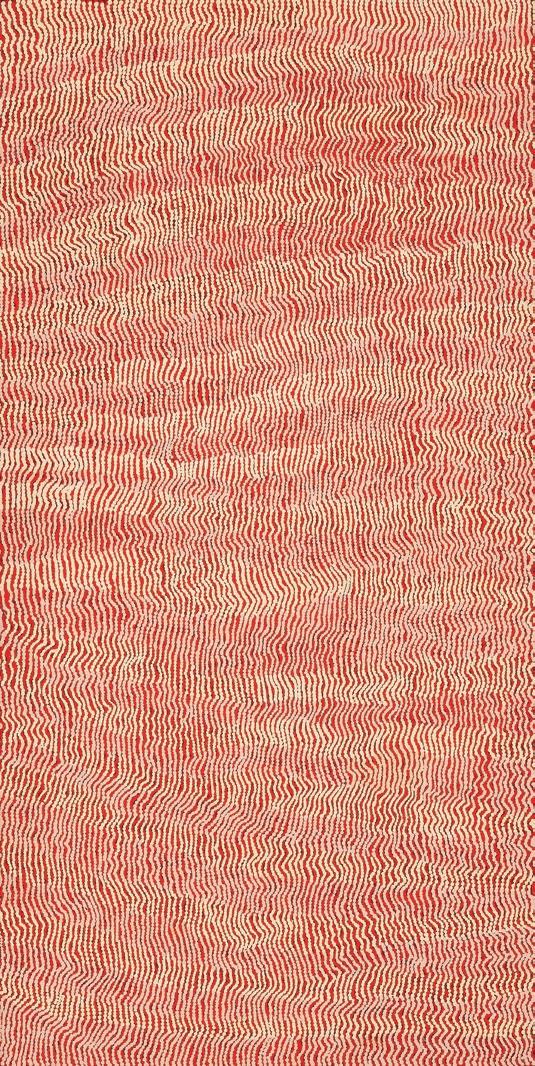
NAATA NUNGURRAYI (1932 – 2021)
UNTITLED, 2004 synthetic polymer paint on linen 93.5 x 94.0 cm bears inscription verso: artist’s name, size and Papunya Tula Artists cat. NN0409023
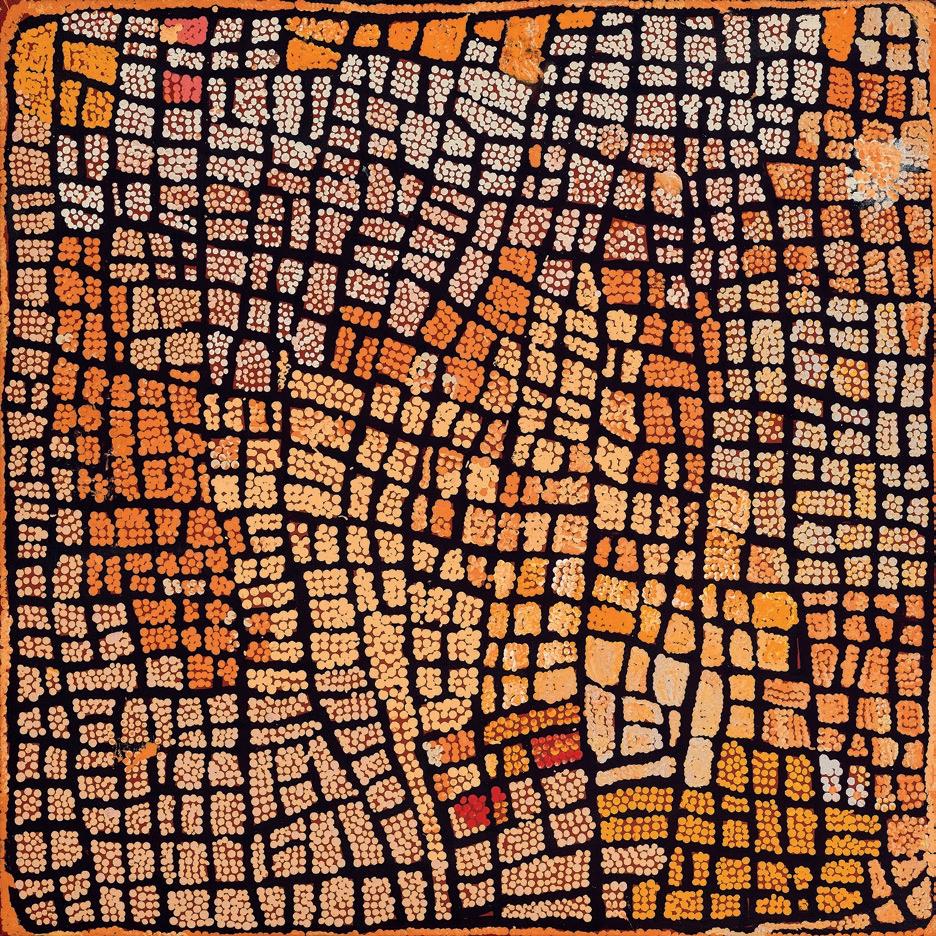
ESTIMATE: $5,000 – 7,000
66 This work is accompanied by a certificate of authenticity from Papunya Tula Artists which states:
‘This painting depicts designs associated with Yunala, a rockhole and soakage water site situated among sandhills just to the west of the Kiwirrkura community in Western Australia. During ancestral times a group of women camped at this site after travelling further west. While at Yunala the women camped beside the rockhole, digging for the edible roots of the bush banana or silky pear vine Marsdenia australis, also known as yunala. The lines in this painting represent both the sandhills surrounding the site and the yunala. The women later continued their travels towards the east, passing through the Kiwirrkura area on their way to Wilkinkarra (Lake Mackay).’
– 2003)
TJARLINYU ROCKHOLE IN THE GREAT SANDY DESERT, WA, 1999 synthetic polymer paint on linen 150.5 x 75.5 cm bears inscription verso: artist’s name, size, Warlayirti Artists cat. 141/99 and Alcaston Gallery cat. AK5066

ESTIMATE: $3,000 – 4,000
67 EXHIBITED
Tjurrnu – Living Water, Alcaston Gallery, Melbourne, 1999, cat. 7 (label attached verso)
This work is accompanied by a certificate of authenticity from Warlayirti Artists which states:
Warlayirti Artists, Balgo Hills, Western Australia
Alcaston Gallery, Melbourne
Private collection, Melbourne, acquired from the above in 1999
‘We see Tjarlinyu Rockhole in the centre of the painting. This is a place with permanent water in Lucy’s traditional country. The rockhole is lined with Pamarr (stone country). This was an important traditional camping place. It is also the Tjukurrpa (dreaming) place of the Warturnuma, the winged form of termites.’
SAM TJAMPITJIN
(c.1930 – 2003)
UNTITLED, 1995 synthetic polymer paint on canvas
120.0 x 80.0 cm
bears inscription verso: artist’s name, size and Warlayirti Artists cat. 110/95
ESTIMATE: $4,000 – 6,000
68 PROVENANCE
Warlayirti Artists, Balgo, Western Australia Private collection, Victoria
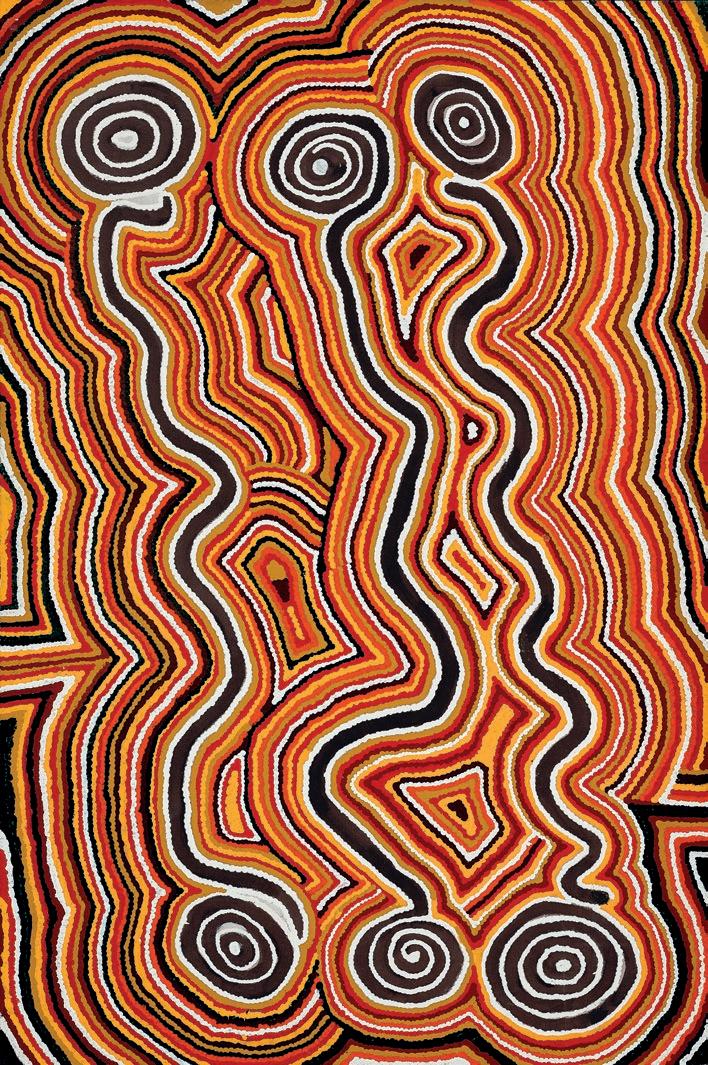
JAN BILLYCAN (DJAN NAMUNDIE) (c.1930 – 2015)
KIRRIWIRRI, 2010
synthetic polymer paint and natural pigment on linen 91.0 x 91.0 cm

bears inscription verso: artist’s name, date, medium, size and Short Street Gallery cat. 27298
ESTIMATE: $4,000 – 6,000
69 PROVENANCE
Short Street Gallery, Broome, Western Australia
Private collection, Melbourne, acquired from the above in 2011
WEAVER JACK (c.1928 – 2010)
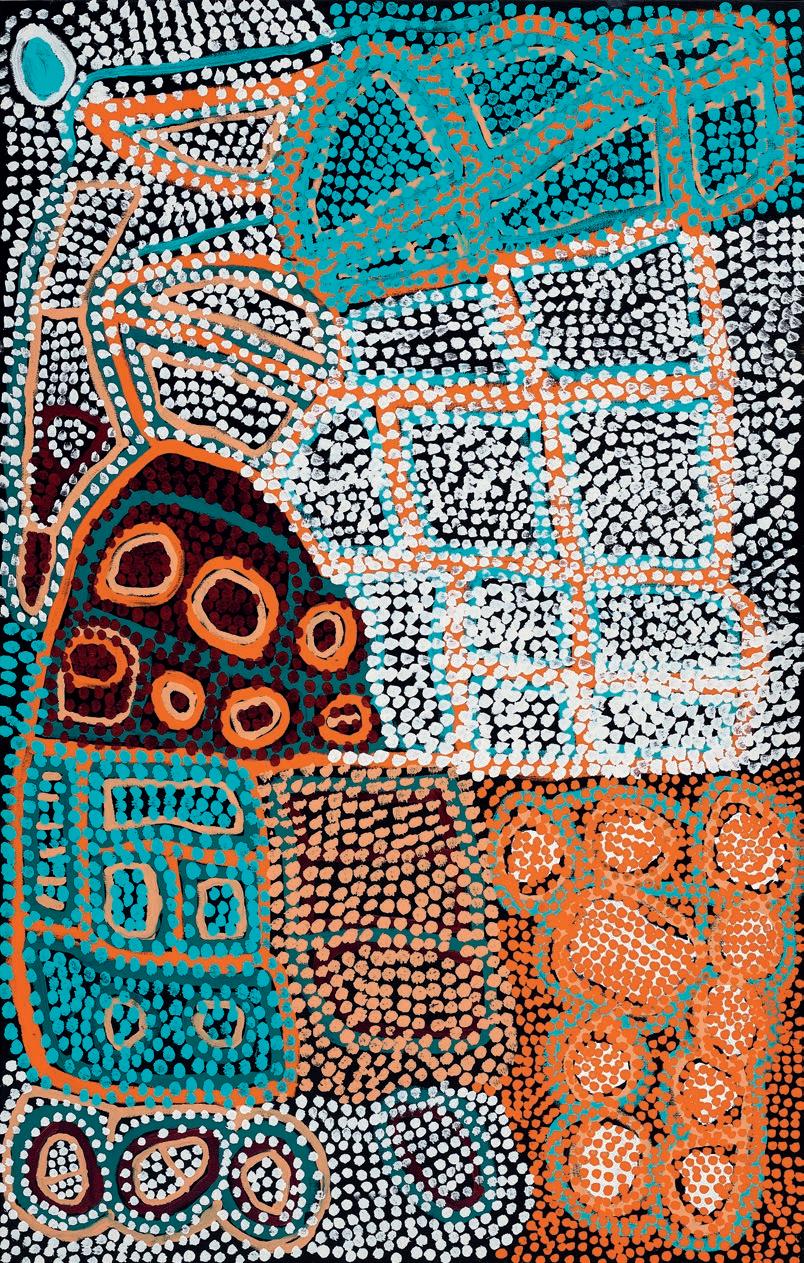
LUNGARUNG, 2004
synthetic polymer paint on canvas
166.5 x 106.0 cm
bears inscription verso: artist’s name, medium, size, date and Short Street Gallery cat. 2936
ESTIMATE: $6,000 – 8,000
70
PROVENANCE
Short Street Gallery, Broome, Western Australia
William Mora Galleries, Melbourne (stamped verso)
Private collection, Melbourne, acquired from the above in 2004
born c.1940s
KUMPIYARRA (TWO ROCKHOLES), 2007

synthetic polymer paint on linen 76.5 x 58.5 cm
bears inscription verso: artist’s name, title, size and Martumili Artists cat. 07.785
ESTIMATE: $4,000 – 6,000
Martumili Artists, Newman, Western Australia
William Mora Galleries, Melbourne (stamped verso)
The Collection of William and Lucy Mora , Deutscher and Hackett, Melbourne, 21 July 2010, lot 44
Private collection, Melbourne
EXHIBITED
Martumili Artists Recent Works (Part 2), William Mora Galleries, Melbourne, 5 – 25 April 2008
(1927 – 1999)
GUMIRRINGU CEREMONY, c .1960 natural earth pigments on eucalyptus bark 123.0 x 72.0 cm (irregular)

ESTIMATE: $5,000 – 7,000
PROVENANCE
Painted in Central Arnhem Land, Northern Territory
Private collection, Perth
LORRAINE CONNELLY–NORTHEY born 1962
NARRBONG (STRING BAGS), 2007
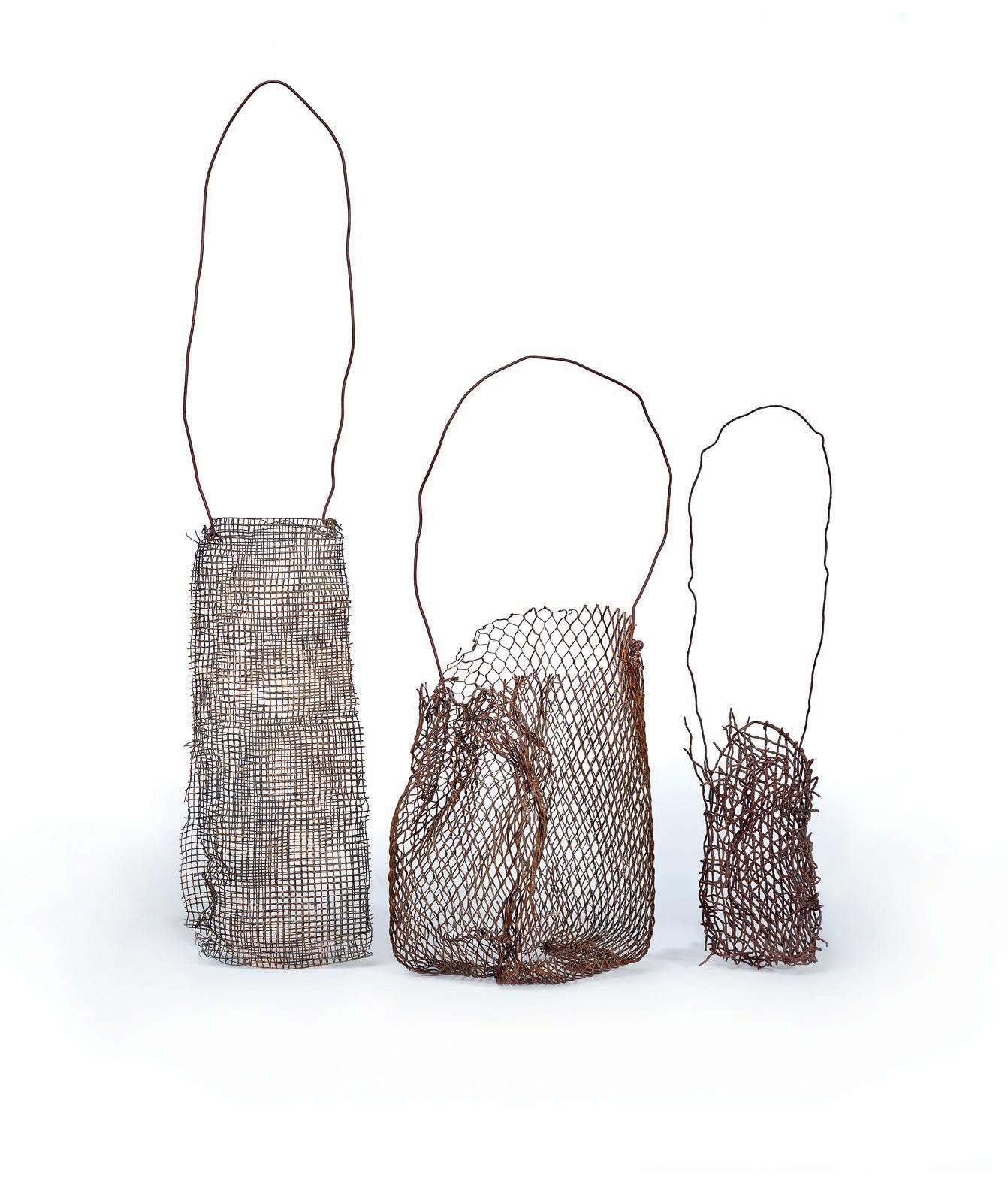
rusted wire mesh with fencing wire
86.0 x 14.0 x 14.0 cm (LC119)
60.0 x 20.0 x 20.0 cm (LC116)
54.0 x 9.0 x 10.0 cm (LC138)
ESTIMATE: $5,000 – 7,000 (3)
73 PROVENANCE
Gallery Gabrielle Pizzi, Melbourne Private collection, Canberra, acquired from the above in February 2008
Catalogues can be obtained at Deutscher and Hackett offices or by subscription (see the Catalogue Subscription Form at the back of this catalogue or online for more information).
The price range estimated against each lot reflects the opinion of our art specialists as to the hammer price expected for the lot at auction and is informed by realised prices for comparable works as well as the particularities of each lot including condition, quality, provenance and rarity. While presale estimates are intended as a guide for prospective buyers, lots can be sold outside of these ranges. Pre-sale estimates include GST (if any) on a lot but do not include the buyer’s premium or other charges where applicable.
The reserve is the minimum price including GST (if any) that the vendor will accept for a lot and below which the lot will not normally be sold.
In both Sydney and Melbourne pre-auction viewings are scheduled for several days in advance of each auction. Deutscher and Hackett specialists are available to give obligation free advice at viewings or by appointment and prospective buyers are strongly encouraged to thoroughly examine and request condition reports for potential purchases. Pre-auction viewings are open to the public and are free to attend.
▲ Unless ownership is clearly stated in the provenance, this symbol is used where a lot is offered which Deutscher and Hackett owns in whole or in part. In these instances, Deutscher and Hackett has a direct financial interest in the property or means that Deutscher and Hackett has guaranteed a minimum price.
● Used to indicate lots for sale without a reserve.
All information published in Deutscher and Hackett catalogues represent statements of opinion and should not be relied upon as fact. All dimensions are listed in centimetres, height before width and are approximate. All prices are in Australian dollars.
All reference to artists make use of common and not full names in accordance with the standards outlined in the National Gallery of Australia reference publication Australian Art: Artist’s working names authority list. For instance, John Brack rather than Cecil John Brack; Roy de Maistre rather than Leroy Leveson Laurent De Maistre; Rosalie Gascoigne rather than Rosalie Norah Gascoigne.
Terms used in this catalogue have the meanings ascribed to them below:
a. NICHOLAS CHEVALIER: in the opinion of Deutscher and Hackett, a work by the artist.
b. Attributed to NICHOLAS CHEVALIER: in the opinion of Deutscher and Hackett, probably a work by the artist, in whole or in part.
c. Circle of NICHOLAS CHEVALIER: in the opinion of Deutscher and Hackett, a work showing the influence and style of the artist and of the artist’s period.
d. Studio/Workshop of NICHOLAS CHEVALIER: in the opinion of Deutscher and Hackett, a work possibly executed under the supervision of the artist.
e. School of NICHOLAS CHEVALIER: in the opinion of Deutscher and Hackett, a work by a follower or student of the artist.
f. Manner of NICHOLAS CHEVALIER: in the opinion of Deutscher and Hackett, a work created in the style, but not necessarily in the period, of the artist.
g. After NICHOLAS CHEVALIER: in the opinion of Deutscher and Hackett, a copy of a work by the artist.
h. “signed” / “dated” in the opinion of Deutscher and Hackett, the work has been signed/dated by the artist.
i. “bears signature” / “bears date” in the opinion of Deutscher and Hackett, the work has possibly been signed/dated by someone other than the artist.
ALL PARTIES ARE STRONGLY URGED TO READ THE CONDITIONS OF AUCTION AND SALE INCLUDED IN THIS CATALOGUE
Where appropriate, Deutscher and Hackett will include the known provenance, or history of ownership of lots. Non disclosure may indicate that prior owners are unknown or that the seller wishes to maintain confidentiality.
Auctions are open to the public and are free to attend. Deutscher and Hackett may exclude any person at any time in its discretion.
Bidders must register to bid prior to the commencement of an auction. Deutscher and Hackett may impose other obligations on the registration of bidders in its discretion.
Lots are offered for sale on a consecutive basis. Deutscher and Hackett will determine the conduct of the auction in its absolute discretion, including the regulation of bidding. Consecutive or responsive bids may be placed by the auctioneer on behalf of the vendor up to the reserve.
As a courtesy service, Deutscher and Hackett will make reasonable efforts to place bids for prospective buyers in absentia provided written or verbal instructions (as indicated on absentee bid forms included at the back of this catalogue or online) are received 24 hours prior to auction. Where successful, lots will be purchased at the lowest possible bid and in the event of identical absentee bids, the bid received earliest will take precedence. Deutscher and Hackett accepts no responsibility for errors and omissions in relation to this courtesy service and reserves the right to record telephone bids.
Unless indicated otherwise, all lots are subject to a confidential reserve price determined by the vendor. Deutscher and Hackett or the auctioneer may place any number of bids on behalf of the vendor below the reserve price and is not obliged to identify that the bids are being placed on behalf of the vendor.
Bidding usually opens below the listed pre-sale estimate and proceeds in the following increments (the auctioneer may vary the bidding increments at his or her discretion):
$500 – 1,000 by $50
$1,000 – 2,000 by $100
$2,000 – 3,000 by $200
$3,000 – 5,000 by $200 / $500 / $800
$5,000 – 10,000 by $500
$10,000 – 20,000 by $1,000
$20,000 – 30,000 by $2,000
$30,000 – 50,000 by $2,000 / $5,000 / $8,000
$50,000 – 100,000 by $5,000
$100,000 – 200,000 by $10,000
$200,000 – 300,000 by $20,000
$300,000 – 500,000 by $20,000 / $50,000 / $80,000
$500,000 – 1,000,000 by $50,000
$1,000,000+ by $100,000
SUCCESSFUL BIDS
The fall of the auctioneer’s hammer indicates the final bid and the buyer assumes full responsibility for the lot from this time.
Where a lot is unsold, the auctioneer will announce that the lot is “bought in”, “passed”, “withdrawn” or “returned to owner”.
Payment must be made within seven days of the date of sale in Australian dollars by cash, cheque, direct deposit, approved credit cards or electronic funds transfer. If payment is made by credit card the price will increase by any merchant fees payable by Deutscher and Hackett (1.15% (including GST) for Visa and Mastercard and 1.65% (including GST) for American Express). In certain circumstances, extension of payment may be granted at the discretion of Deutscher and Hackett. Cleared funds will be held in an interest bearing trust account by Deutscher and Hackett until remitted to the vendor. Deutscher and Hackett will be entitled to retain any interest earned during this period. Payment by the vendor of any charge to Deutscher and Hackett is to be made within fourteen days of invoice.
The purchase price will be the sum of the final bid price (including any GST) plus a buyer’s premium set at 25% (inclusive of GST) of the final bid price. Buyers may be liable for other charges reasonably incurred once ownership has passed.
Buyers are required to pay a 10% G.S.T which sum is:
a. included in the final bid prices where buying from a GST registered vendor; and
b. included in any additional fees charged by Deutscher and Hackett; and
c. included in the buyer’s premium.
Where GST applies to some lots the final bid price will be inclusive of the applicable GST. If a buyer is classified as a “non-resident” for the purpose of GST, the buyer may be able to recover GST paid on the final purchase price if certain conditions are met.
Lots paid for in full may be collected from Deutscher and Hackett premises the day after the auction occurs but lots paid for by cheque may not be collected until all funds have cleared. Proof of identification is required upon collection and lots not collected within seven days of the sale may incur costs associated with external storage and freight.
Risk in the lot, including risk of loss or damage, will pass to the buyer on either the date payment is due, whether or not it has been made, or on collection by the buyer, whichever is earlier. The buyer is therefore encouraged to make arrangements to ensure comprehensive cover is maintained from the payment due date.
Deutscher and Hackett directly offers services including storage, hanging and display, appraisals and valuations, collection management and research and in all instances will endeavour to coordinate or advise upon shipping and handling, insurance, transport, framing and conservation at the request and expense of the client. Deutscher and Hackett does not accept liability for the acts or omissions of contracted third parties.
Prospective bidders are advised to enquire about export licences — including endangered species licences and cultural heritage permits, where relevant — prior to bidding at auction. Telephone the Cultural Property and Gifts Section, Museums Section, Ministry for the Arts, on 1800 819 461 for further information. The delay or denial of such a licence will not be grounds for a rescission of sale.
The copyright in the images and illustrations contained in this catalogue may be owned by third parties and used under licence by Deutscher and Hackett. As between Deutscher and Hackett and the buyer, Deutscher and Hackett retains all rights in the images and illustrations. Deutscher and Hackett retains copyright in the text contained in this catalogue. The buyer must not reproduce or otherwise use the images, illustrations or text without prior written consent.
The terms and conditions of business set forth below are subject to amendment by verbal or written notice prior to and during the auction and sale. They constitute the entire contractual agreement with the buyer in respect to any lot offered at auction. By bidding at auction in any manner compliant with bidding procedures, the buyer and all bidders agree to be bound by these terms and conditions and the terms of the prospective buyers and sellers guide contained in this catalogue, as amended. To the extent that an agent acts on behalf of the buyer, liability for obligations arising from these conditions of business will pass to the buyer. Multiple buyers are jointly and severally liable for obligations arising from this agreement.
1. Definition of terms:
a. The ‘buyer’ refers to the party with the highest accepted bid for any lot at auction and/or such party’s principal where bidding as agent.
b. The ‘vendor’ refers to the party consigning property for sale and/or such party’s principal where acting as agent.
c. ‘Deutscher and Hackett’ refers to Deutscher and Hackett Pty Ltd ACN 123 119 022, its subsidiaries, officers, employees and agents.
d. The ‘hammer price’ refers to the final bid price (including any GST) accepted by the auctioneer, or in the case of a post-auction sale, the agreed sale price (including any GST).
e. The ‘buyer’s premium’ refers to the 25% (inclusive of GST) payable by the buyer calculated as a percentage of the hammer price.
f. ‘GST’ refers to the goods and services tax imposed by the A New Tax System (Goods and Services) Act 1999 as amended.
g. The ‘lot’ refers to the item(s) described against any lot number in the catalogue.
h. The ‘reserve’ refers to the minimum price (including any GST) the consignor will accept for a lot.
2. Agency: Deutscher and Hackett acts as agent for the vendor and the contract of sale for the lot will be between the buyer and the vendor.
3. Property is sold ‘as is’: To the extent permitted by law:
a. no guarantees, warranties or representations are made (express or implied) by Deutscher and Hackett or the vendor in relation to the nature and condition of any lot; and
b. Deutscher and Hackett disclaims liability for any misrepresentations, errors or omissions, whether verbal or in writing, in the catalogue or any supplemental material.
All factual information provided by the vendor is merely passed on by Deutscher and Hackett from the vendor or other source. Deutscher and Hackett has made no attempt to verify this information. All additional statements of opinion represent the specialist opinions of Deutscher and Hackett employees and should not be relied upon as statements of fact.
4. Responsibility to inspect: Responsibility remains with the buyer to satisfy its, his or her self by inspection and evaluation prior to purchase as to the nature and condition of any property.
5. Registration: Bidders must register to bid and obtain a bidder’s paddle prior to the commencement of the auction. Registration requires that bidders provide proof of identity and Deutscher and Hackett may impose other obligations on the registration of bidders in its discretion.
6. Auctioneer’s discretion: Deutscher and Hackett reserves the right to absolute discretion over the conduct of the auction including the regulation of bidding and its increments. This discretion extends to the challenge or rejection of any bid, the right to withdraw any lot and the right to determine the successful bidder or reoffer a lot in the event of a dispute. The prospective buyers and sellers guide details an indicative process for the conduct of auctions. All parties are strongly urged to read the prospective buyers and sellers guide included in this catalogue.
ALL PARTIES ARE STRONGLY URGED TO READ THE CONDITIONS OF AUCTION AND SALE INCLUDED IN THIS CATALOGUE
7. Bidding: Deutscher and Hackett may sell each lot to the highest bidder at auction provided the reserve price has been met or where the net amount accounted to the vendor is at least equivalent to the net amount that would have been achieved for a sale at the reserve price. The fall of the auctioneer’s hammer marks the acceptance of the highest bid and the conclusion of a contract for sale between the vendor and the buyer. Unless otherwise agreed in writing with Deutscher and Hackett, the individual physically present at the auction who signals the bid accepts personal liability to pay the purchase price, including the buyer’s premium and all additional fees, taxes and charges.
8. Amounts inclusive of GST: Unless otherwise specified, all amounts specified in this section as payable by the buyer, or otherwise used to calculate payment to Deutscher and Hackett, are inclusive of any GST component. Deutscher and Hackett will provide buyers with a tax invoice that meets the requirements of the Australian Taxation Office.
9. Application of GST to buyers: Buyers are required to pay a 10% GST which sum is:
a. included in the final bid prices where buying from a GST registered vendor; and
b. included in any additional fees charged by Deutscher and Hackett; and
c. included in the buyer’s premium.
If a buyer is classified as a “non-resident” for the purpose of GST, the buyer may be able to recover GST paid on the final purchase price if certain conditions are met.
10. Post auction private sale: Should the lot fail to sell at auction, Deutscher and Hackett is authorised to sell the lot privately for a period of seven days in which event this agreement shall apply to the relevant buyer to the full extent of its provisions.
11. Payment: The buyer will not acquire title until payment has cleared in full. Interest at a rate of 17.5% p.a. will be charged over outstanding accounts where no extension of terms has been granted. Interest will be payable from the payment due date. With respect to each lot purchased, the buyer agrees to make the following payments within seven days from the date of sale:
a. The hammer price.
b. In exchange for services rendered by Deutscher and Hackett, a buyer’s premium calculated at 25% (inclusive of GST) of the hammer price.
c. Post sale packing, handling, shipping and storage where applicable.
d. If payment is made via Visa, Mastercard or American Express, any merchant fees payable by Deutscher and Hackett on the transaction as indicated in the prospective buyers and sellers guide. Payment must be made within seven days of the date of sale in Australian dollars by cash, cheque, direct deposit, approved credit cards or electronic funds transfer using the form and/or trust account details provided at the back of this catalogue. In certain circumstances, extension of payment may be granted at the discretion of Deutscher and Hackett. Once funds have cleared, the proceeds of the sale less the buyer’s Premium, GST and any commission or costs charged as agreed will be remitted to the vendor within thirty-five days of the date of sale provided payment has been received in full. Funds will be held in an interest bearing account by Deutscher and Hackett until remitted to the vendor. Deutscher and Hackett will be entitled to any interest earned during this period. Application for a cultural heritage export licence or any other licence in no way affects the buyer’s obligation to make payment or collection within the periods specified in sections 10, 11 and 13a.
12. Risk and Title: Risk in the lot, including risk of loss or damage, will pass to the buyer on the earlier of:
a. the date payment is due, whether or not it has been made; and
b. collection by the buyer.
The buyer assumes risk for the property in all respects from this date and neither Deutscher and Hackett nor the vendor will be liable for loss or damage occurring after the payment due date. The buyer is encouraged to make arrangements to ensure comprehensive cover is maintained from this date. Title in the lot does not pass to the buyer, even if the lot is released to the buyer, until the buyer has paid all sums owing to Deutscher and Hackett. If a buyer makes a claim against Deutscher and Hackett for damage or loss after sale, the buyer’s premium and the final bid price shall be payable notwithstanding.
13. Freight:
a. The buyer may only remove a lot from the Deutscher and Hackett premises once payment has been cleared in full and must be removed no later than seven days after the date of sale. Should items not be removed by this time, storage and insurance costs may be charged to the buyer. If a lot has not been collected within 30 days after the date of sale and alternative arrangements have not been with Deutscher and Hackett, the lot may be re-sold by Deutscher and Hackett without reserve at the next auction and Deutscher and Hackett may set off any amounts owed for storage and insurance costs and its standard commission before remitting the proceeds to the buyer.
b. Buyers are required to make their own arrangements for packing, handling, shipping and transit insurance for their property. Deutscher and Hackett does not accept responsibility or liability for the acts or omissions of any third party, such as a shipping agent, whether or not such a party has been recommended or suggested by Deutscher and Hackett.
14. Limited Warranty of Authorship: If a buyer is able to establish that a lot is a forgery in accordance with these conditions for sale within five years of the date of sale, the buyer shall be entitled to rescind the sale and obtain a refund of the hammer price from the vendor. The buyer must return the lot in the state in which it was sold within fourteen days of notifying Deutscher and Hackett of the forgery allegations. For a lot to be established as a forgery, the following conditions must be satisfied:
a. the buyer must supply two independent expert testimonies attesting to the forgery. Deutscher and Hackett is entitled to request further expert evidence where it deems the evidence provided to be unsatisfactory;
b. there must be no conflict of opinion among accepted experts in the field; and
c. the forgery must be able to be proven through means that at the time of publication of the catalogue were commonly employed and that will not damage or otherwise put the lot in jeopardy.
The limited warranty and the right to rescind the sale is not assignable and the buyer must have retained title to the lot without disposing of any interest in it up until the buyer notifies Deutscher and Hackett of the forgery allegations. The buyer acknowledges that it has no rights directly against Deutscher and Hackett if a lot is established to be a forgery.
15. Termination, Breach and Legalities:
a. Deutscher and Hackett breach: To the extent permitted by law, the sole and maximum remedy to a buyer for breach of warranty is a refund of original purchase price, including buyer’s premium. In such an event the sale contract shall be rescinded and all costs associated with returning the property (in the state in which it was sold) to the premises of Deutscher and Hackett are to be borne by the buyer. Deutscher and Hackett is not liable for any indirect or consequential loss or damage for any matter arising directly or indirectly as a result of the sale.
b. Buyer breach: Deutscher and Hackett may, in addition to other remedies available by law, exercise one or more of the following rights or remedies for breach:
i. Cancel the sale and retain any payment or property in Deutscher and Hackett custody as collateral or liquidated damages.
ii. Charge the buyer interest at the rate of 2% above the rate fixed under section 2 of the Penalty Interest Rates Act 1984 (Vic).
iii. Resell the property without reserve at the next auction or privately on five days notice. Any disparity between sale and resale prices, including associated costs such as, but not limited to, legal, storage and sale expenses, will be to the account of the defaulting buyer.
iv. Apply any part payment received from the buyer in respect of any lots at its discretion.
v. Retain any of the buyer’s property held by Deutscher and Hackett until the buyer has satisfied its obligations to Deutscher and Hackett.
vi. Take any other action Deutscher and Hackett deems necessary or appropriate.
vii. Refuse to permit the buyer to participate in future auctions.
viii. Provide the vendor with the buyer’s details to permit the vendor to take action against the buyer to recover the money.
16. Governing law and jurisdiction: These terms and conditions and any matters concerned with the foregoing fall within the exclusive jurisdiction of the courts of the state in which the auction is held.
17. Severability: In the event that any provisions of this agreement should be found unenforceable in a court of law, that part shall be discounted and the remaining conditions shall continue in full force and effect to the extent permitted by law.
(Mr/Mrs/Ms/Miss) Name (please print) Business name
SALE CODE: NGALYOD
SALE NO.: 073
IMPORTANT AUSTRALIAN INDIGENOUS ART
MELBOURNE AUCTION
22 MARCH, 7:00 PM
LOTS 1 – 73
105 COMMERCIAL ROAD
SOUTH YARRA
VIC 3141
please email, post or fax this completed form to:
DEUTSCHER AND HACKETT
105 COMMERCIAL ROAD
SOUTH YARRA
VIC 3141
tel: 03 9865 6333
fax: 03 9865 6344
info@deutscherandhackett.com
SALE CODE: NGALYOD SALE NO.: 073
IMPORTANT AUSTRALIAN INDIGENOUS ART
MELBOURNE AUCTION
22 MARCH, 7:00 PM
LOTS 1 – 73
105 COMMERCIAL ROAD SOUTH YARRA VIC 3141
q Fine Art (Single issue) $45* q Tax invoice required
q Aboriginal Art single issue (Single issue) $45*
q Annual Fine Art Auctions (3 issues) $120*
q Annual Fine Art & Aboriginal Art Auctions (4 issues) $160*
* Price includes G.S.T. postage and handling. Additional $10 per catalogue for international orders
(Mr/Mrs/Ms/Miss) Name (please print) Business
please email, post or fax this completed form to:
DEUTSCHER AND HACKETT
105 COMMERCIAL ROAD SOUTH YARRA VIC 3141
tel: 03 9865 6333
fax: 03 9865 6344
info@deutscherandhackett.com
(Mr/Mrs/Ms/Miss) Name (please print)
SALE CODE: NGALYOD
SALE NO.: 073
IMPORTANT AUSTRALIAN INDIGENOUS ART
MELBOURNE AUCTION
22 MARCH, 7:00 PM
LOTS 1 – 73
105 COMMERCIAL ROAD
SOUTH YARRA VIC 3141
*Not including buyer’s premium or GST (where applicable). Bids are made in Australian dollars. Absentee bids must be received a minimum of twenty-four hours prior to auction. All absentee bids received will be confirmed by phone or fax. In the event that confirmation is not received, please resubmit or contact our office.
Please refer to the Prospective Buyers and Sellers Guide and the Conditions of Auction and Sale in this catalogue for information regarding sales. By completing this form, absentee bidders request and authorise DEUTSCHER AND HACKETT to place the following bids acting as agent on their behalf up to and including the maximum bid specified. Lots will be bought at the lowest possible bid authorised by a bidder in absentia.
Should the bid be successful, the buyer will be obliged to pay the final bid price plus buyer’s premium of 25% (inclusive of GST) of the final bid price. DEUTSCHER AND HACKETT provides this complimentary service as a courtesy to clients and does not accept liability for errors and omissions in the execution of absentee bids.
please email, post or fax this completed form to:
DEUTSCHER AND HACKETT
105 COMMERCIAL ROAD
SOUTH YARRA VIC 3141
tel: 03 9865 6333
fax: 03 9865 6344
info@deutscherandhackett.com
RECEIVED BY DATE TIME
INTERNAL USE ONLY
SALE CODE: NGALYOD
SALE NO.: 073
IMPORTANT AUSTRALIAN INDIGENOUS ART
MELBOURNE AUCTION
22 MARCH, 7:00 PM
LOTS 1 – 73
105 COMMERCIAL ROAD
SOUTH YARRA
VIC 3141
please email, post or fax this completed form to:
DEUTSCHER AND HACKETT
105 COMMERCIAL ROAD
SOUTH YARRA
VIC 3141
tel: 03 9865 6333
fax: 03 9865 6344
info@deutscherandhackett.com
*Not including buyer’s premium or GST (where applicable). Bids are made in Australian dollars.
Please refer to the Prospective Buyers and Sellers Guide and the Conditions of Auction and Sale in this catalogue for information regarding sales.
By completing this form, I authorise DEUTSCHER AND HACKETT to contact me by telephone on the contact number(s) nominated. I understand it is my responsibility to enquire whether any Sale-Room Notices relate to any lot on which I intend to bid. I also understand that should my bid(s) be successful, a buyer’s premium of 25% (inclusive of GST), will be added to the final hammer price.
I accept that DEUTSCHER AND HACKETT provides this complimentary service as a courtesy to its clients, that there are inherent risks to telephone bidding, and I will not hold DEUTSCHER AND HACKETT responsible for any error.
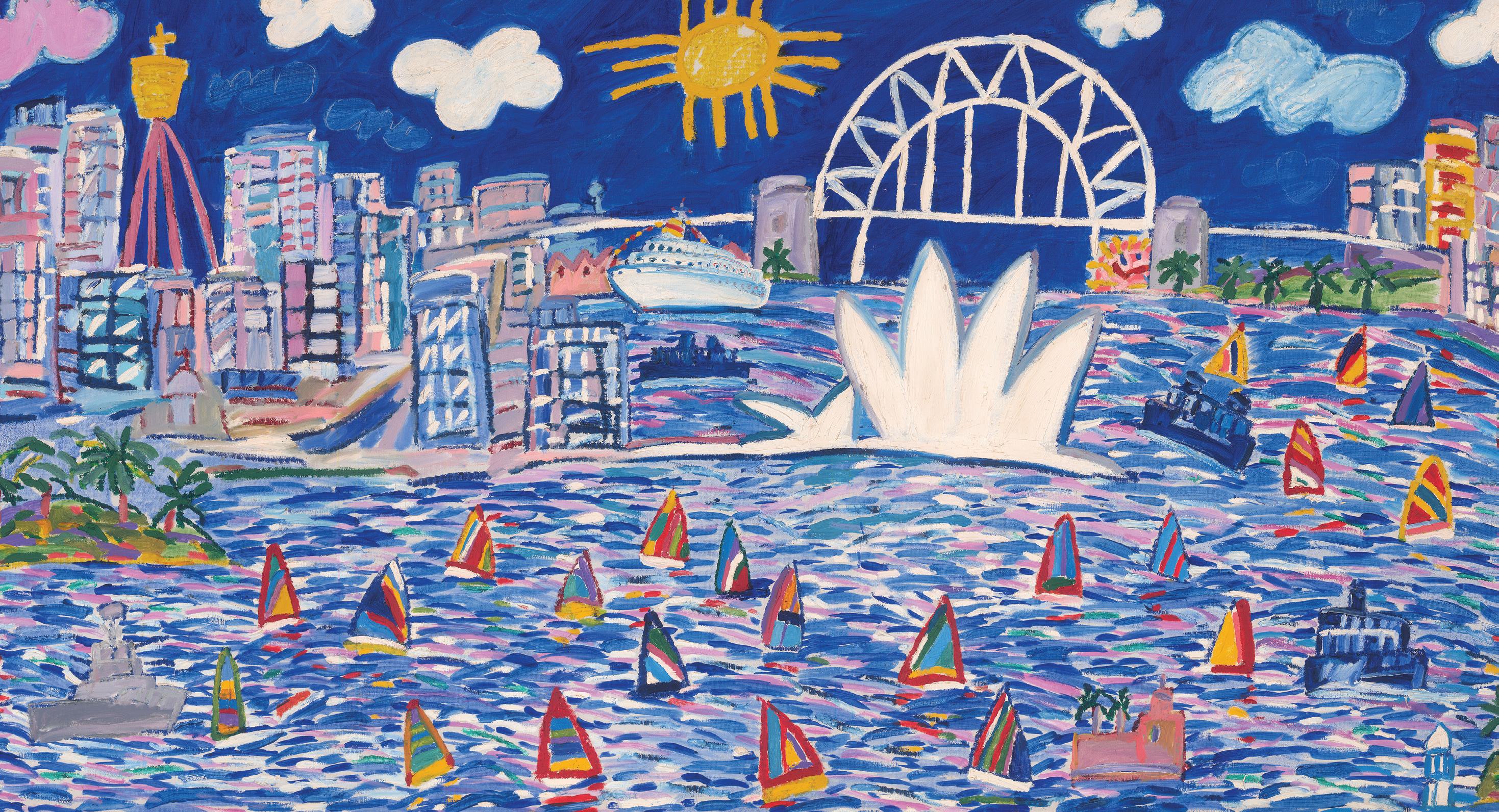
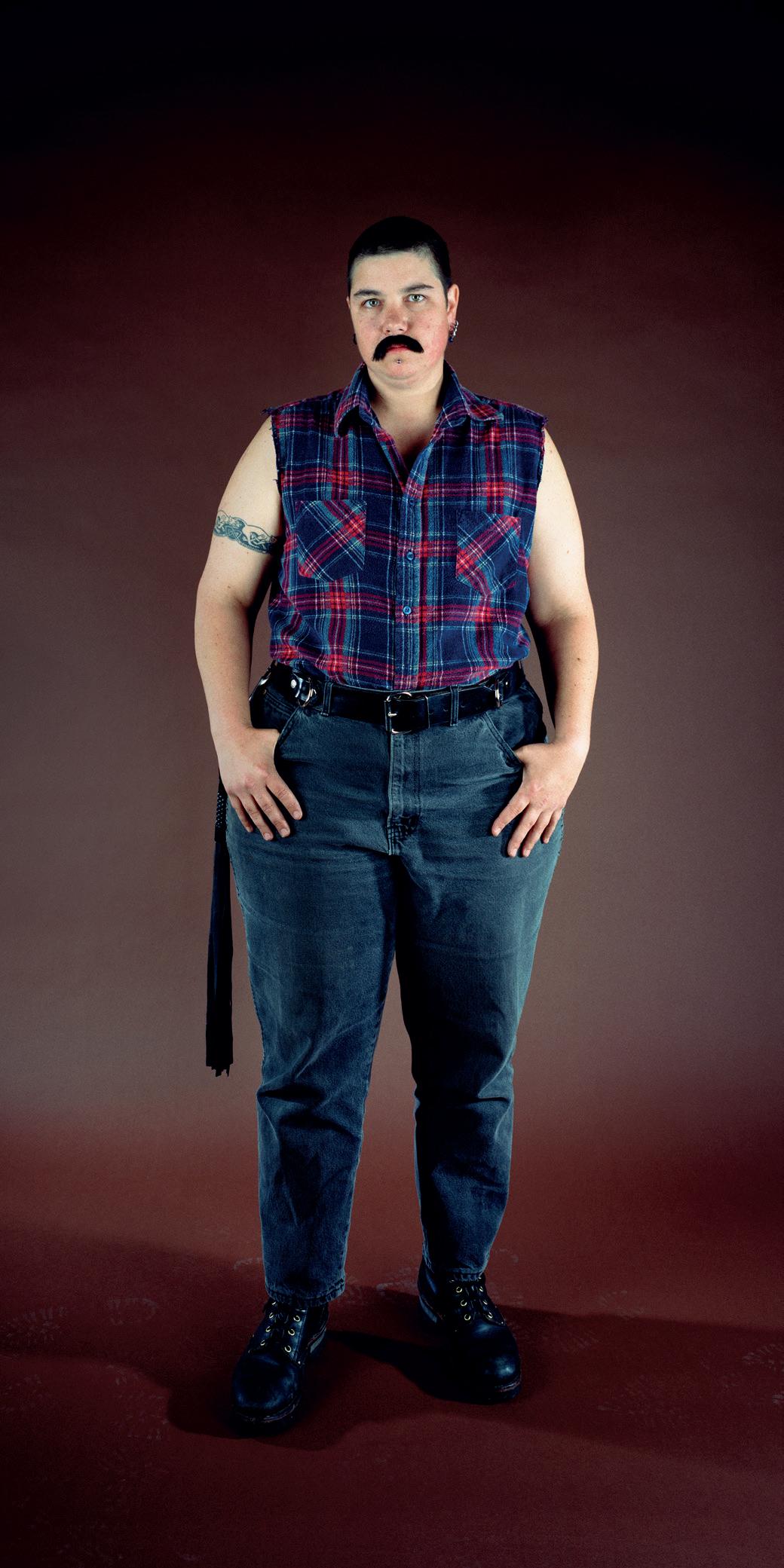
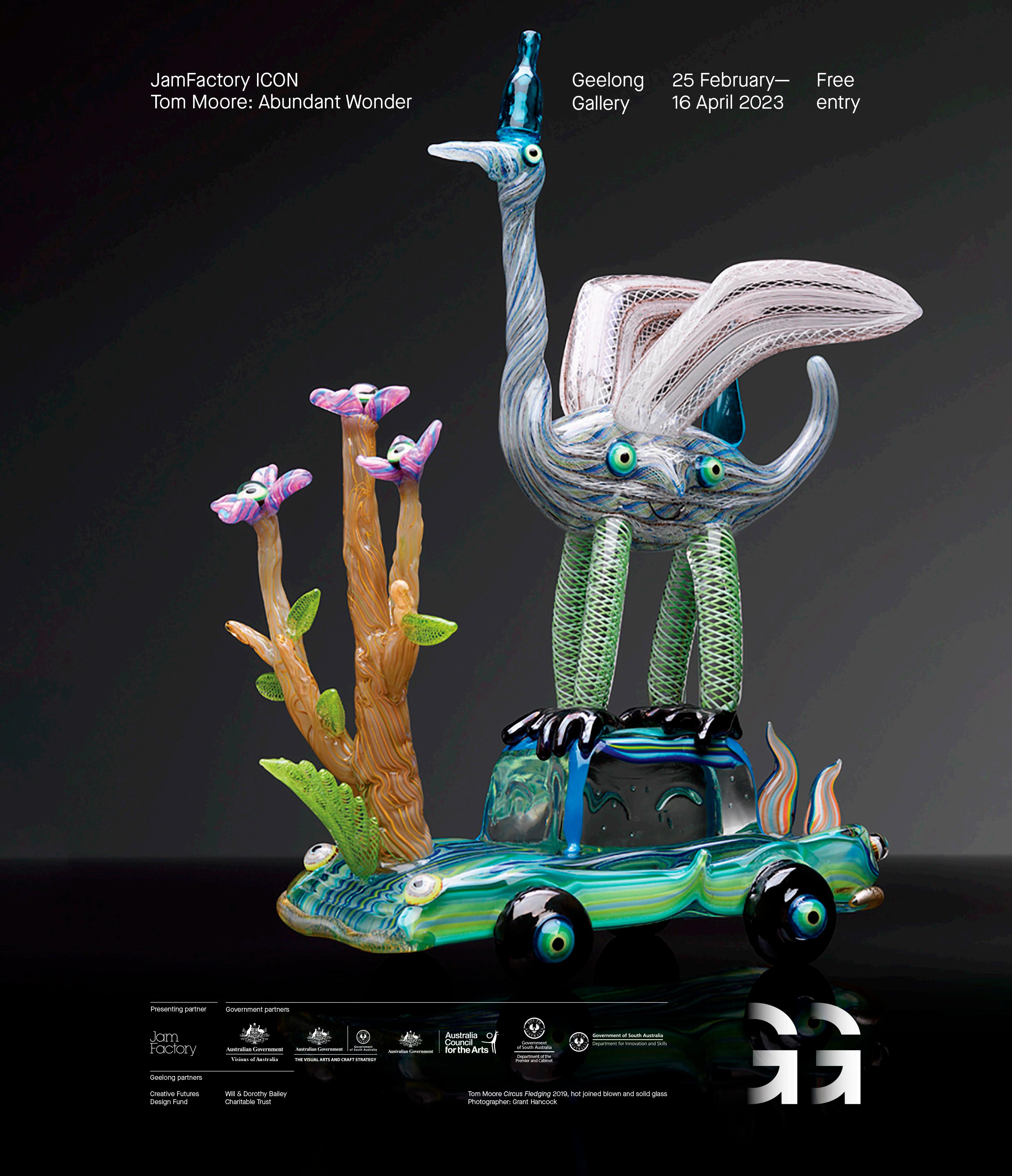
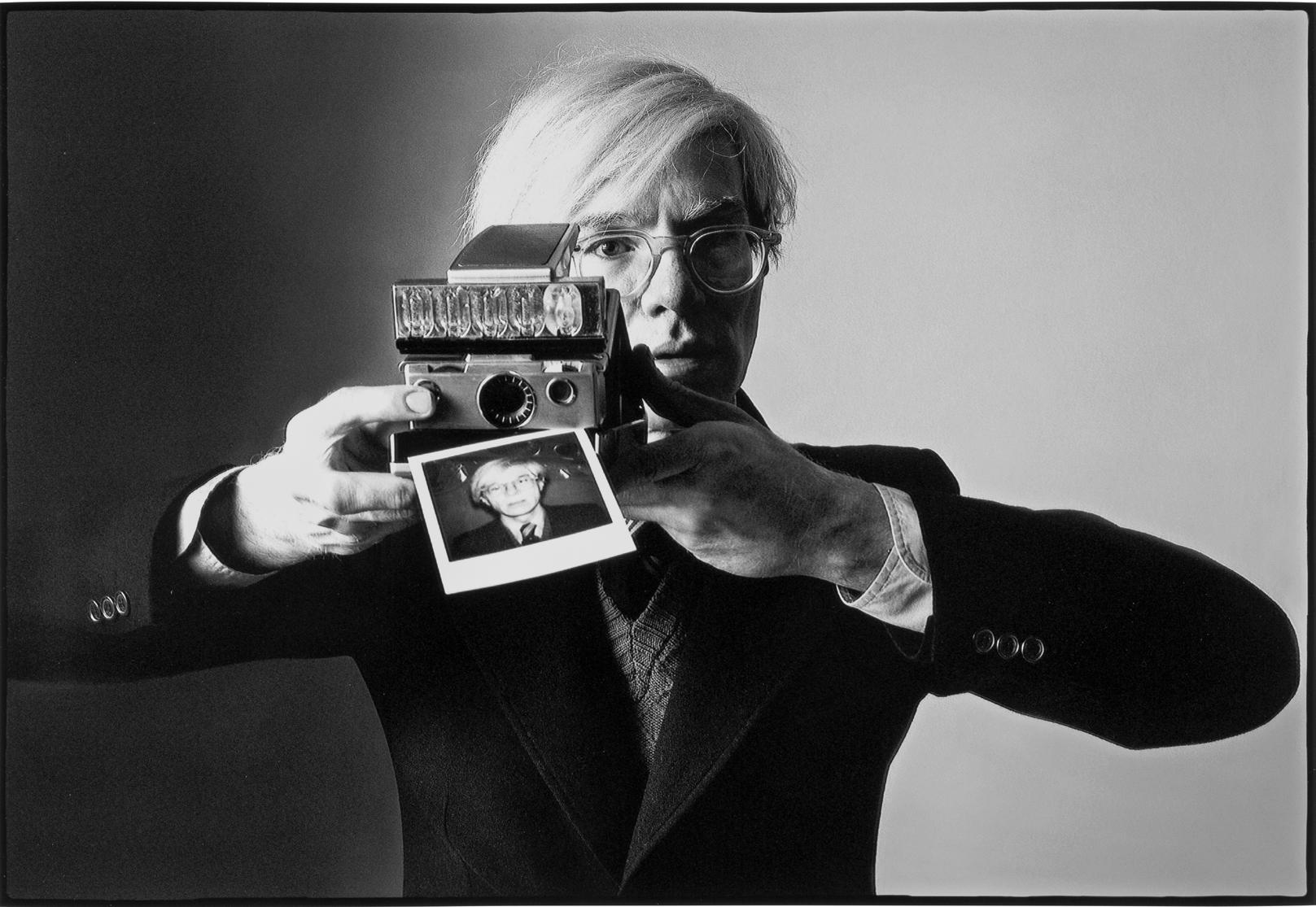
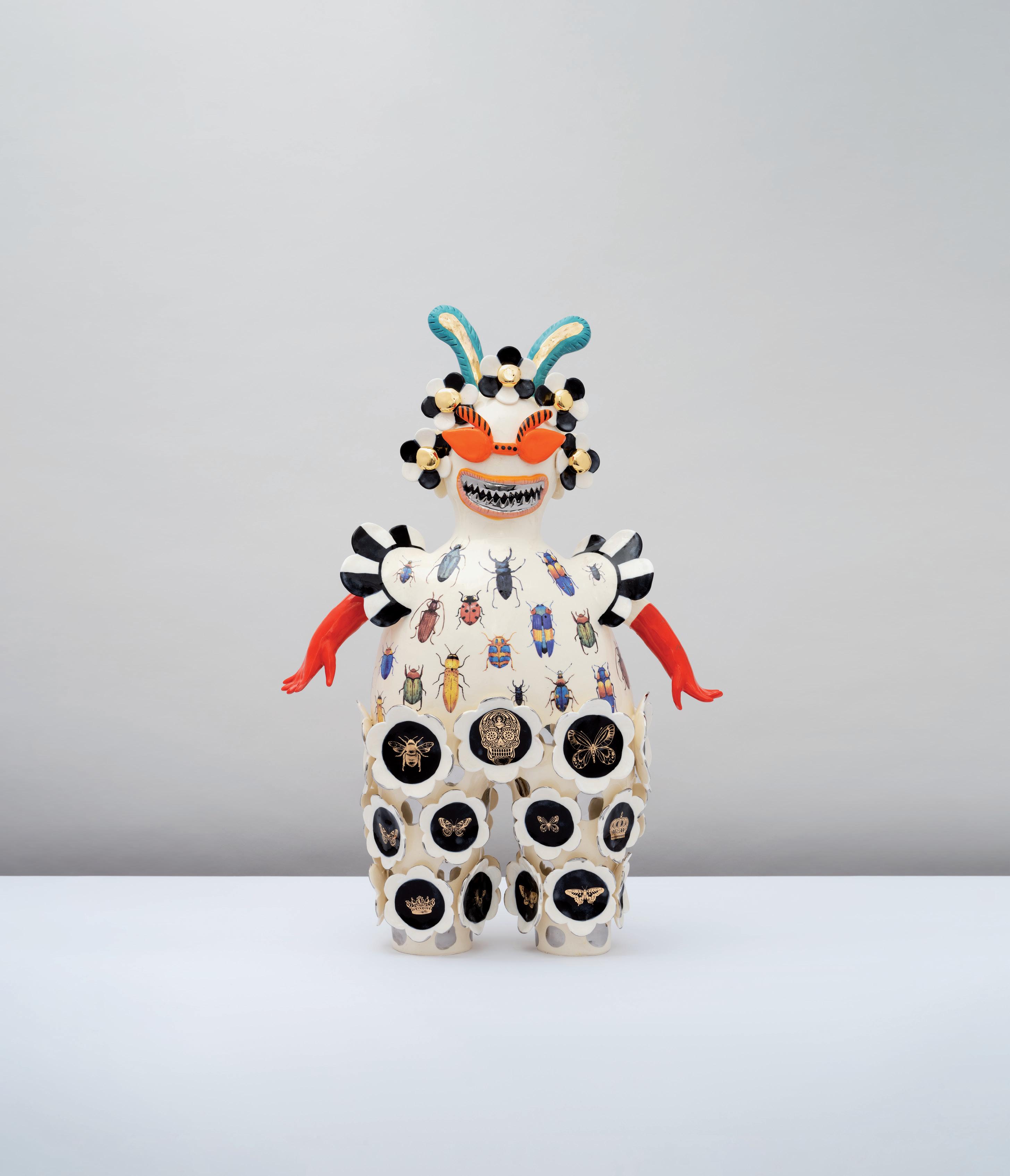
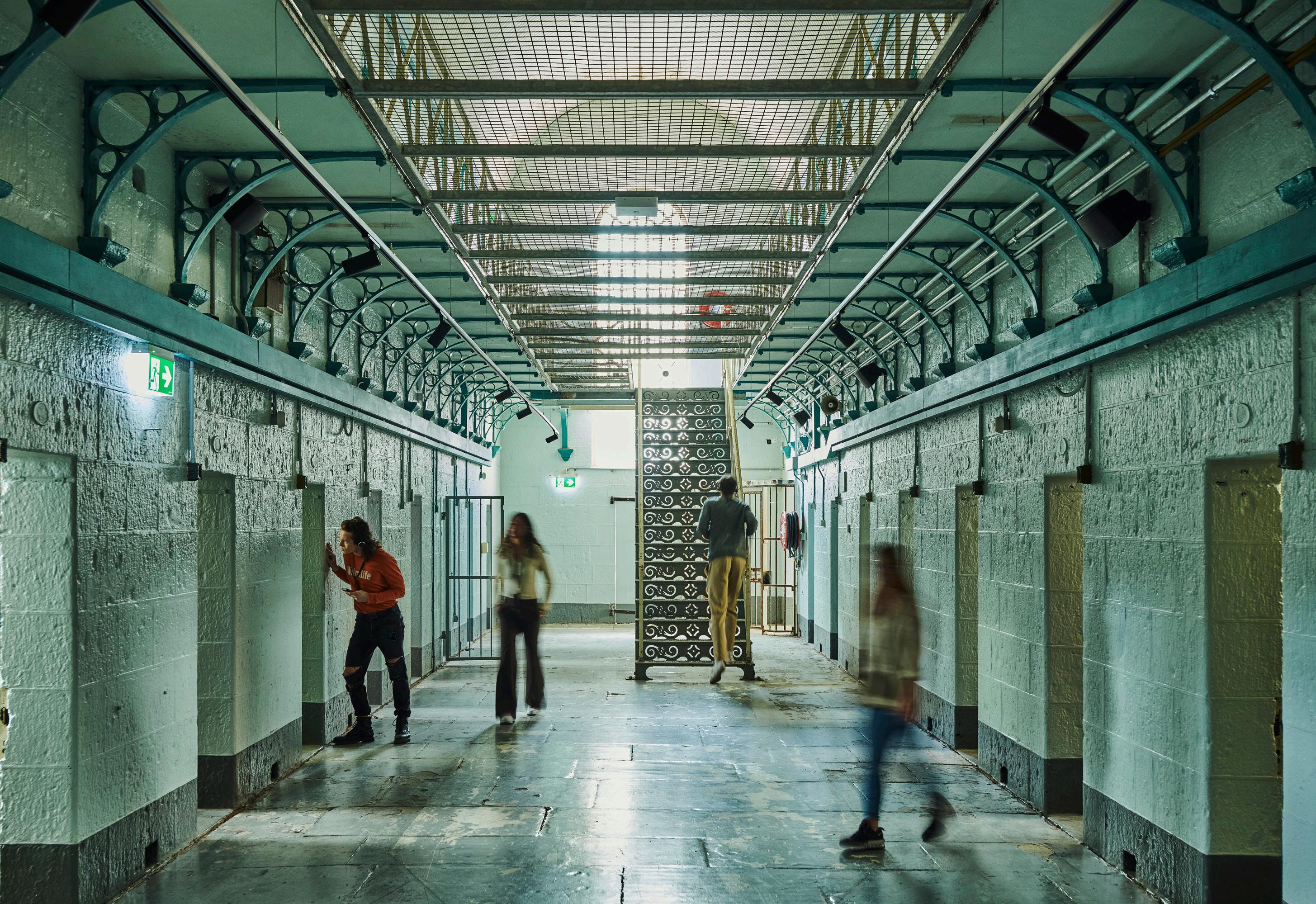
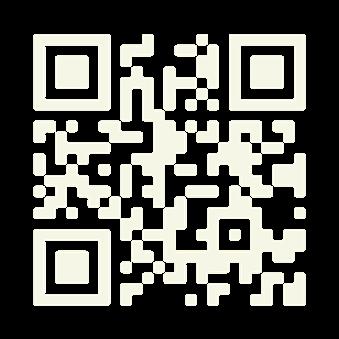
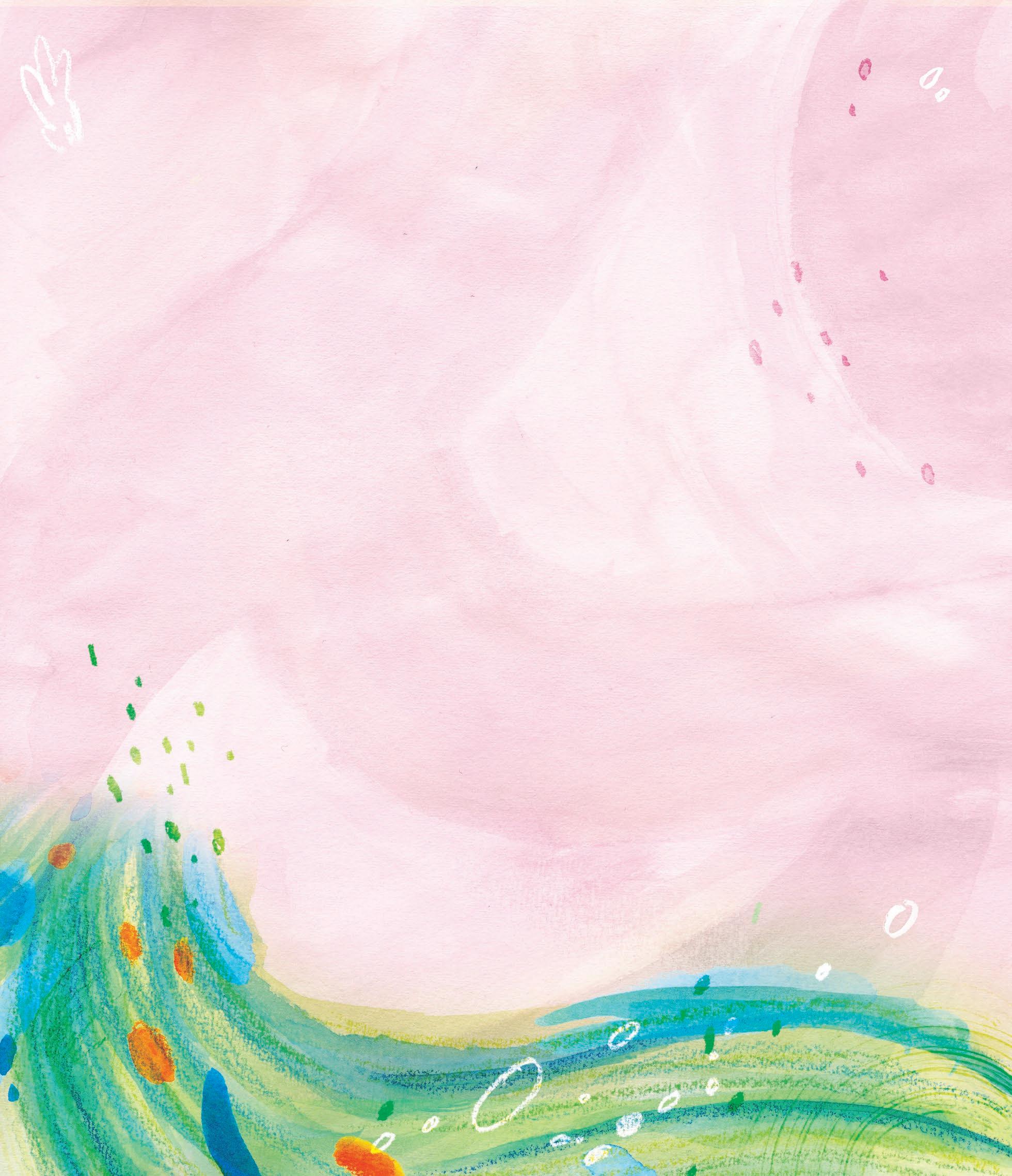


ALBERT, TONY 53
APUATIMI, JEAN BAPTISTE 19
BEDFORD, PADDY NYUNKUNY 36, 37
BILLYCAN (DJAN NAMUNDIE), JAN 69
BAKER, MARINGKA 15
MARAWILI, DJAMBAWA 52
MARAWILI, NO Ŋ GIRRŊ A 1, 4
MARIKA, DHURRUMUWUY 51
MAWURNDJUL, JOHN 20, 34, 48
MINGELMANGANU, ALEC 46
CONNELLY-NORTHEY, LORRAINE 16, 17, 73
DAYMIRRINGU, DAVID (MALANGI) 72
EBATARINJA, WALTER 44
GABORI, SALLY 5, 13, 29, 35, 55, 56
GANAMBARR, GUNYBI 50A
GUMANA, MALALUBA 14
J JACK, WEAVER 70
K
KANTILLA, KITTY 18
KEN, RAY 57
KNGWARREYE, EMILY KAME 6, 7, 30, 31
KUBARKKU, MICK 49
NADJAMERREK, LOFTY BARDAYAL 50
NAMATJIRA, ALBERT 42
NAMPITJIN, EUBENA 11, 12
NAPANGATI, YUKULTJI 65
NAPALTJARRI,


specialist fine art auction house and private gallery
